
- Bucharest tours
- Day trips from Bucharest
- Transylvania tours
- Romania tours
- Romania and Bulgaria tours
- Self-guided tours
- Virtual tours in Romania
- Tailor-made tours
- Corporate events & business travel
- DMC in Romania
- Reviews from our clients
- How do I pay?
- Romania Travel Blog

Visit Transylvania – Travel guide for first time visitors
- April 2, 2024
When you visit Transylvania, a travel guide can help you solve the details you need for a perfect trip. Every time the moment to plan a new trip comes, things can get both exciting and annoying at the same time. Of course, getting to explore a new place out there is perhaps one of the best experiences someone can have, but there are also a few expected events that might occur.
These can be caused by many reasons such as the lack of free time, not having enough information, and too many or too few options to pick from.
However, this Transylvania travel guide is going to present in a very detailed form why you should explore Transylvania, as well as what should not be missing from your ‘must-see’ list while you are roaming this part of Romania. So grab a pen and let’s get started!
Along with the extensive list of when is the best time to visit Transylvania, accommodation, travel methods, and recommendations in terms of sightseeing attractions, you will also get to know why visiting Transylvania is worth your time.
I bet you already heard about the famous legends of vampires that are surrounding this region, but keep in mind that it has a lot more to offer than that!
Reasons to visit Transylvania

Some other reasons you should take into account when you ask yourself “Why should I consider a Transylvania trip?”, are that you will get to see some of the richest places in history that are standing still even after millions of years that passed, but also medieval cities and lots of outdoor wonders.
When you say “Transylvania” you can suddenly associate it with the central region of Romania that until 1918 was part of the Austro-Hungarian empire. Transylvania occupies a third of the whole country’s surface which is larger than Austria, so there is no doubt you will have plenty of places to see before returning home.
Depending on whether you enjoy hiking the mountains more than visiting cities and urban tourist attractions, you will be able to spend your time exploring what you love the most even if you will focus just on one of the two categories mentioned above.
Though, is such a big region with plenty of options, starting to plan your next trip here is not that simple. So hopefully, this guide will help you figure everything out. You can also opt for a guided tour that will make everything easier for you.
Things to know before planning a trip to Transylvania
This region of Romania is generally safe to visit. However, as with any destination, it is always a good idea to take basic safety precautions when traveling. This includes avoiding walking alone at night and keeping valuables safe and secure.
If you travel on your own, it is recommended to familiarize yourself with local laws and customs and to be respectful of the local culture. In case of something you can contact the local authorities (the emergency number is 112) and if the situation requires it, also your embassy.
A guide can also make you feel safe and help you interact with locals if they don’t understand English.
Being located in Romania, the main language spoken in Transylvania is Romanian. This belongs to the Latin language family and is closely related to Italian, French, and Spanish.
However, Transylvania has a diverse linguistic landscape, and there are also several other languages spoken in the region. Because the region was under Hungarian occupation for many years, Hungarian is used by a significant minority in Transylvania, particularly in the eastern part of it. German is also spoken by a small minority, particularly in the city of Sibiu. In addition, there are smaller communities of speakers of Romani, Slovak, and Ukrainian in Transylvania.
Overall, the linguistic situation in Transylvania reflects its diverse history and cultural influences.
Being a part of Romania, the official currency in Transylvania is the Romanian leu (plural: lei). The leu is divided into 100 bani. Banknotes come in denominations of 1, 5, 10, 50, 100, 200, and 500 lei, while coins come in denominations of 1, 5, 10, and 50 bani.
The exchange rates may vary, so check the official rate before exchanging money. You can pay by card in large cities, but it is a good idea to have some cash on hand. In some places, card payments are not accepted.
You can exchange money at banks, currency exchange offices, and some hotels. It’s also possible to withdraw cash from ATMs, which are widely available throughout the country. And don’t forget to inform your bank or credit card company about your travel plans. Sometimes they get extra protective and block your payments.
The best time to visit
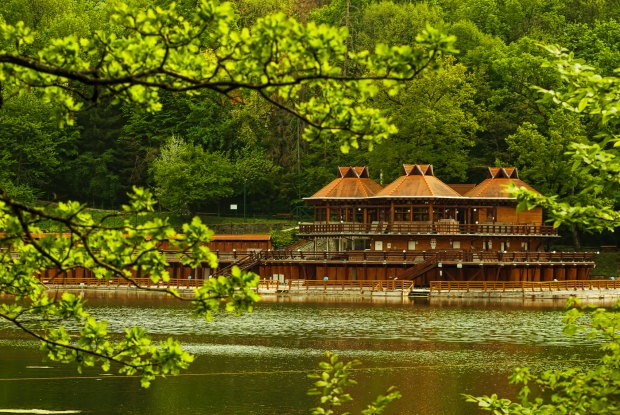
While most of the places out there have a recommended season when to visit them for the best experience you can have, Transylvania is waiting for new tourists any time of the year. Each season has its own interests and recommendations.
Spring is the season when not only nature awakens and blooms again. The traditional villages, different from the rest of the country, come to life. Long story short, Romania is split into 4 regions that have their own culture, fold costumes, tourist attractions, and local celebrations.
However, most of the locals managed to preserve their traditions and legends which will transpose every tourist into a time bubble far from modern life and daily routines.
If you want to visit Romania just for Transylvania tourism, then summer is the right season for that. The weather is going to be just right for most of the landmarks in Transylvania, especially since some of the outdoor ones are usually closed.
Autumn is also another season that shouldn’t be neglected because when you want to check out Transylvania tourist attractions, there is no chance to stay away from mountains and forests which are pretty dominant in this part of the globe. And what better way to enjoy the stunning landscapes than being completed by the colorful trees?
And last but not least, perhaps you are aware that winter is one of the favorite seasons for kids. It’s also fun if you love snow, winter sports, or even traditions. You can spend a white Christmas in Transylvania or come on a ski holiday in one of the many mountain resorts in the region.
However, if you are looking for the best month to visit Transylvania, we would suggest April or October . Read some extra details about when to travel to Transylvania .
Where to stay?

When it comes to where you can stay while exploring Transylvania, there are quite a lot of options you can consider depending on whether you are looking for an urban or rural experience. Even though Transylvania is home to the whole area inside of the Carpathians, the most popular cities create a triangle between Sibiu, Sighisoara, and Brasov.
Stay in Sibiu
Sibiu is known as the heart of Transylvania due to all the festivals, traditions, and culture that are shared as being at home, but it’s also one of the cities from where you can plan day trips to any of the other cities mentioned before or to other places to see in Transylvania.
Accommodation in Brasov
Brasov is the closest one to the famous Bran Castle and the legends of vampires but it also represents the most visited city in Romania. This one is very known for the Saxon culture which was very dominant in this region, but also for the villages and fortified churches.
Medieval stay in Sighisoara
However, when it comes to a genuine medieval experience, without any doubt, Sighisoara is the right city for that. Plus, it’s a quite tiny city that is very rich in history and traditions, and you will get to see rare and unique parts of history shared all over the place, no matter if we talk about museums, towers, castles, monuments, churches or even houses of the long-gone guilds.
B&Bs in Transylvania countryside
If you enjoy spending more time with yourself far from the crowded cities and traffic noise, then do keep in mind that most of the villages in Transylvania have a few options in terms of guest houses where you can create lots of memories.
Romanians, but especially the locals from villages, are well known for having a good heart and always doing their best to help the tourists either with indications, sharing legends, or presenting some of the traditional cuisines, so it’s all up to your preferences.
How to get to Transylvania
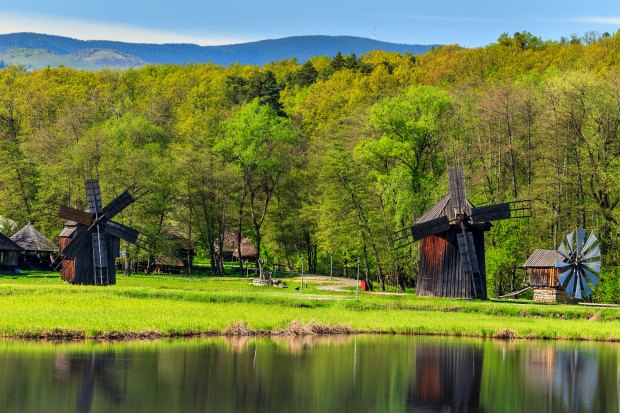
Read more details about where is Transylvania located and start planning your trip here. Amongst some of the most important parts when planning a new trip, is transport. This plays a major role and it comes in many forms. That is why when you want to get to Transylvania you can do that:
Traveling to Transylvania by plane
This is the safest, quickest, and easiest method, but not always affordable by everyone. Happily, both Sibiu and Cluj Napoca (which are some of the most important cities in Transylvania), do have airports with quite a lot of routes. There are even urban flights that should be considered.
It is, unfortunately, one of the slowest options you can consider due to the many hours spent on the road. Perhaps you are already aware that Romania is not very well prepared on this line so if you would still like to buy a train ticket, our recommendation is to use it on small routes such as Sibiu – Brasov, Sibiu – Sighisoara or Bucharest – Brasov.
This is amongst the most used methods by most tourists due to being able to set up your own comfort and use it further when exploring the surroundings
Unless you only travel to Transylvania for the urban sightseeing attractions which can be reached with all the other methods or even by bus, using a car is the quickest way to reach new realms and discover their stories. Especially if you think about villages or outdoor wonders.
If you want to make sure you will have a perfect holiday, try one of our tours in Transylvania:
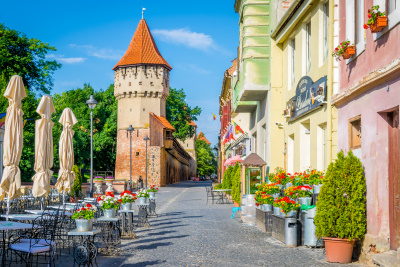
Transylvania tours from Bucharest 2024 (6)
Transylvania attractions.
Now that you already made an idea of the technical aspects before booking a trip to Transylvania, it’s time to get to the fun part of the guide which will present some of the must-see places, but also less known ones for the more adventurous spirits.
As you have already learned by reading so far, there are many things to do in Transylvania that worth your attention. We can talk about both the urban & rural sides including fortified churches, castles, fortresses, towers, monuments, and medieval cities, but also about the outdoor life which will present waterfalls, caves, salt mines, forests, canyons, lakes, natural formations and many more! here is a list of the best-known attractions in Transylvania:
Bran Castle

Bran Castle is perhaps the first place everyone associates Transylvania with, especially when it comes to vampires. But the truth is that it’s a great opportunity to explore a different kind of museum as well as get through Vlad’s history.
The first mention of Dracula was found in Bram Stoker’s 1897 Gothic horror novel that created the fictional character. But not long after this event, people found out that there actually is a castle for Dracula open to the tourists.
However, the stories, legends, secret passages, and all the history this castle is soaked in make it one of the most visited attractions in Romania. Tourists coming from abroad especially prefer it.
Corvin Castle
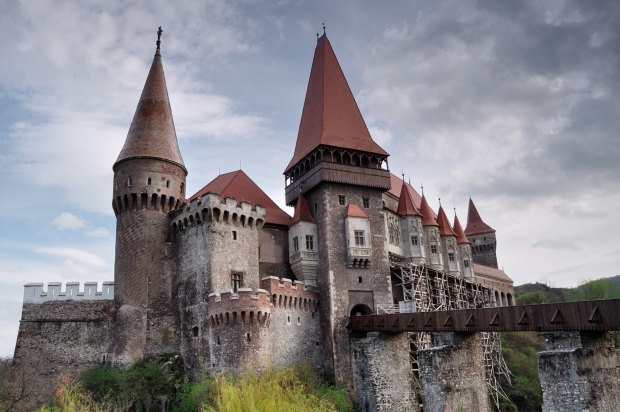
Corvin Castle is the Gothic masterpiece of Transylvania for over five centuries. It creates some of the most scenic landscapes you can see in Europe, saving its spot in the Top 10 with the most fairy places in Europe. That is why the Corvin Castle is considered to be the most beautiful castle in Transylvania.
Even though for over 400 years the castle has gone through a lot of tumultuous challenges, the usual love story that most likely every castle has didn’t manage to stay away from this one either.
That’s how, after the torch of love was kindled between Iancu de Hunedoara and Elisabeta, a gold ring has been offered. But not a long time after this event the ring was stolen by a raven who got attracted by its sparkle. Iancu proved both his courage and love for his chosen one by shooting with a bow the bird which became the main symbol to represent the castle. Also its name comes from this, because “Corvus” means “Raven” in Latin.
Turda Salt Mine

Turda Salt mine is one of the treasures from the depths of the ground which is revealed in all its beauty with a quick ride down to 120 meters. Once you make your way into the salt mine, you will get to breathe some of the purest air in the world.
There are also lots of activities to enjoy such as minigolf, bowling, boat paddling, pool, cinema, panoramic wheel and a lot more. Even though there are not many objects left behind to make you understand what it has gone through, the salt mine was everything from a cheese cave to a World War II bomb shelter and amusement park.
You can still see some of the tools used back in the 17th century in the small museum from the underground treasure. But some of the most important reasons why people are visiting the salt mine are the treatments offered to heal themselves from any breathing disease.
Try a 4-day itinerary in Transylvania to visit the Turda salt mine.
Scarisoara Ice Cave

Scarisoara ice cave represents one of the natural wonders of Romania. You can explore it while going to the Apuseni Mountains because the cave is well known for sheltering the biggest underground glacier from the Southeastern side of Europe.
The exact date when the cave was first discovered is still unknown. But there are at least 3,500 years since the glacier delights the eyes of many curious tourists who are seeing this kind of natural formation for the first time in their life.
The cave is located at an altitude of 1,150 meters above sea level. Its 720 meters length is split into several rooms, the most interesting one being entitled “The Church”. This one is formed from over 100 ice stalagmites of different shapes and sizes.
Along with the unique experience a tourist can have while exploring the ice cave, the whole journey feels like a deep breath of fresh air during a hot day of the summer. The temperature is maintained constant during the whole year to avoid melting down the ice blocks left.
The most haunted forest in the world: Hoia Baciu Forest
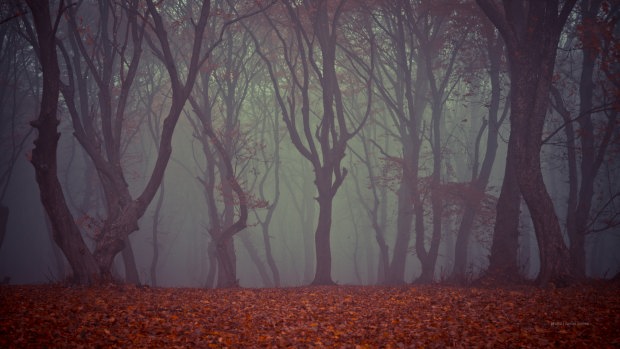
Hoia Baciu forest is the perfect pick if you are looking for a one-of-a-kind experience outdoors. Over time the forest became home to many paranormal phenomena.
That is why the Hoia Baciu forest is considered to be the most haunted forest in the world.
There are shared many ghost stories and urban legends that bring their contribute to its popularity.
Also, they make many tourists curious to see how much is reality and how much fiction. The sceptics are convinced that all the stories are shared just for the sake of entertainment and lack evidence. But the Hoia Baciu Forest has been featured on quite a few paranormal documentary TV shows already, such as “Ghost Adventures” and “Destination Truth.”
While it’s your mission to find the truth, the forest is also used as a recreation destination that comes with some biking trails and other spots dedicated to paintball, airsoft, and archery activities.
Alba Carolina Citadel
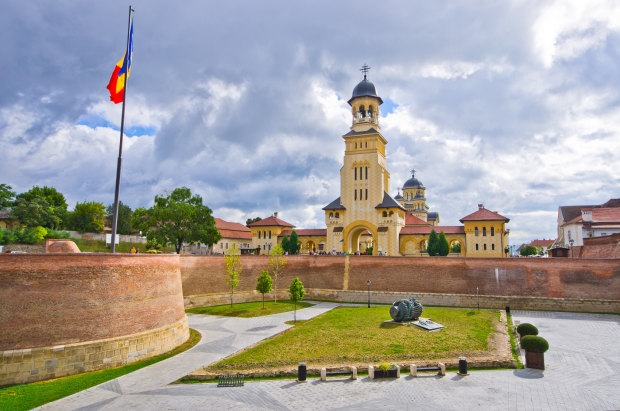
Alba Carolina is the biggest fortification in Romania still standing for over 300 years. It also represents the heart of the city with a similar name, Alba Iulia. The roman citadel was built between 1715 and 1738 in the middle of the country. It’s the main source of a unique historical and medieval ambience.
While Bucharest is known as the capital of Romania, Alba Iulia is still entitled as ‘the other capital’ of the country due to its connection with the Great Union from 1918. In 1918 Transylvania along with the rest of the country was linked together.
For this reason, Alba Carolina Citadel saved its spot on the must-see places in Romania, but also for being recognized as a great location for a long list of many important historical events that left their touch on the country.
Fagaras Citadel
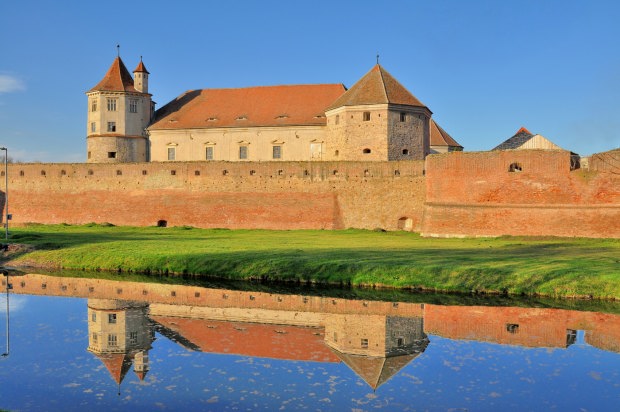
Fagaras Citadel was born in the 16th century over the ruins of a castle that was destroyed by fire. The castle completed its mission with success while defending the Southeastern side of Transylvania against possible incursions.
Even though the fortress was very well prepared with thick walls and many shooting towers, this one didn’t manage to stay away from the Ottomans who attacked the building more times in a row.
After the events calmed down for a bit, Michael the Brave occupied Fagaras Citadel and sheltered there his family and his royal treasures.
It was only the beginning of a long timeline with many changes brought to the fortress depending on its owner. Over the years it was both a princely residence but also a prison used for those who opposed the communist regime. No less than 5,000 people were detained and became victims of the torture methods used back then.
Sarmizegetusa Regia

Sarmizegetusa Regia fortress is hidden deep in the forests of the Carpathians. Here, not only that you will be welcomed by the marvelous nature but also by a better understanding of Romania’s origins following a 2 millennia-long journey before Romans conquered Dacia.
Back then, Sarmisegetuza Regia was the capital of the Dacian Kingdom. The water supply systems, ceramics, and several iron tools indicated the life of an ancient community that was there before.
All these aspects, along with many other important historical details, represent a genuine piece of history hidden in nature which still comes with many unanswered questions. But it stirs lots of curiosity from the tourists that are coming from all over the world to meet the few stones left.
There are quite a few fragments from the fortification walls but the most important ruins are the seven temples and the monumental altar used for sacrifices during the Dacian times.
Viscri Fortified Church

The Viscri fortified church is the most visited place in the village with the same name. It is tiny as it is, simple yet grand and majestic.
With a history of over 9 centuries, the church also played a defensive role on the west side of Transylvania. Sooner or later this region was attacked by the same Ottoman armies who’ve set themselves a goal of destroying as many churches from Transylvania as possible. Due to their placements the churches could protect the country too and not only serve with a religious purpose.
Happily, an ambitious community managed to save an important historical building that had been lost on the way with the passage of time and revived the traditions that were almost gone.
Therefore, if you get to see Viscri these days, not only you will discover a scenic and interesting church and fortress, but also local artisans and blacksmiths that will show you how they make horseshoes and other important objects from the past era. Viscri is included in almost every itinerary in Transylvania .
Prejmer Fortified Church

Prejmer fortified church dates as the largest fortified church from the Southeastern side of Europe. It was built by Teutonic knights at the beginning of the 13th century.
Being such an imposing and interesting formation, catching the interest of the less well-meaning armies didn’t last to appear. Fortunately, the church showed incredible strength in front of many challenges and events that were knocking at the door.
Not for a few times, the church was on the front line in terms of invasions and enemy attacks which made the building endure more sieges than other similar buildings from the same region would normally go through. That’s how the religious place was conquered only once but went through more than 50 sieges over hundreds of years of existence.
Biertan Fortified Church

Similar to the previous one, but definitely not less interesting, the church from Biertan is placed on top of a hill. It also has faced many challenges that decided the future of Transylvania.
Along with the towers used for defensive purposes, there was also a special room that served as a punishment for the couples who wanted to break up after a failed marriage. Even if it might sound funny, the couple was locked in the room for a few days. Here, the most extreme challenge was to live with the one you weren’t even talking to anymore, in a very tiny room with a single bed, one plate, one mug and one cutlery that would push each other to start a conversation.
Happily, the whole situation proved a real success because all the couples locked inside (except one), managed to come to terms and learn how to live together again even with just very few things in their life.
Slimnic Citadel

Slimnic Citadel is amongst the less known fortresses of Transylvania. It doesn’t enjoy the same popularity as the others, but it comes with beautiful architecture left behind even if there are many ruins.
The citadel is a mighty medieval building that is still standing tall after almost 800 years since it was the first documentary mentioned. However, while you go to such places to find a little bit more of the past of Romania and especially Transylvania, this one will show that passion is over history sometimes. People are living inside the citadel taking care of the ruins. For many years they learned to live a simple, yet beautiful and full life.
Transfagarasan

Transfagarasan is one of the places that you can visit only during the hot seasons of the year. It is located at an altitude of 2,042 meters and lots of avalanches occur during the winter and spring.
This one is actually a road that crosses some of the highest mountain lands in Romania. Transfagarasan is 151 kilometers long and crosses the north-south side of the Fagaras Mountains.
The whole trail offers a unique driving experience while making your way through countless sceneries that will leave you speechless with their almost unreal beauty.
Not for a few times, Transfagarasan was entitled as the best road in the world, being mentioned also by Jeremy Clarkson in a Top Gear episode who along with his team, tested powerful cars on this side of Romania.

Balea Lake is one of the many sightseeing attractions you can observe while driving on the Transfagarasan road. It is also a great spot for hiking, ice climbing, skiing or even cycling on heights that exceed 2,000 meters altitude.
Plus, during the winter there is created a unique world of ice-crafted exclusives with the blocks of ice extracted from the lake. This world of ice follows a different theme every year and it can only be enjoyed during the winter when the access on the road is restricted. It can still be reached by cable car that will offer you a unique view over the mountains and nature.
Medieval cities
Transylvania has some amazing cities that kept their medieval charm and make you believe you are in Germany, due to their saxon influences. Sibiu, Brasov and Sighisoara are just some of them. Their old town with narrow streets and colorful buildings will steal your heart forever! Don’t hesitate to explore them and use them as a base to visit other landmarks around.
This is just a short list of some of the many tourist attractions you can enjoy when you travel to Transylvania. So keep in mind that tourism in Transylvania is a real discovery. Exploring what it has to offer comes with no limits and meets not borders, but only the time which will be your own enemy.
You probably have noticed that there is no town included in the list. We have a special post about the main cities to visit in Transylvania and what do to there.
When you plan a trip to Transylvania, our recommendation is to not miss a chance to do it for a longer period in order to have enough time to explore all the areas that are part of this region. You will never be disappointed but only sorry that you couldn’t stay for more!
We hope that this Transylvania travel guide has offered you all the details you need about this beautiful region.
You may also like:
Related posts.

Best time to visit Transylvania
- November 1, 2023
Continue reading
Username or email address *
Password *
Lost your password? Remember me
No account yet?
Privacy Overview
- Romania Tours
- Bulgaria Tours
- Bulgaria & Romania Tours
- Tour Add-Ons
- How it works
- COVID-19 & the Ukraine War

Have a Question? Call us: 0040 723 578 452
- The Ultimate Travel Guide to Transylvania - What do to in Transylvania in 2023
Exploring Romania is a choice you will never regret making! This country should be on the top of your travel list with its mix of spectacular nature, unique architecture, medieval cities, history, delicious cuisine, and friendly culture. If you’re worried about safety, this might come as a surprise, but Romania is a very safe country! You should know that a holiday here will be one of a kind.
Still, if you want to know more about scams to avoid, we have got you covered: you can read this blog post and learn how to avoid them and be extra prepared. Now that we have established that this East European country is one of the safest out there, let’s talk about why should you travel to Transylvania and what this magical landscape has to offer. This region is one of the main reasons people choose Romania as their vacation destination. With that in mind, we created a complete guide with literally EVERYTHING you need to know before taking a trip to Transylvania!
Why travel to Transylvania?
This central-western region of Romania has numerous mementos of medieval times. It might be world-known for its bloodthirsty vampires and savage werewolves, but you will not need to pack any garlic or silver to visit it. The famous Dracula is a big part of Transylvania’s popularity. Did you know this legend is about a real-life person? Yes, Dracula did exist. His name was Vlad Țepeș (Vlad the Impaler). He had quite a unique method of executing his foes - hence the name. He is one of the most important rulers in Wallachian history and is regarded as a national hero by many Romanians.
But there is so much to love about this country that you do not even need Dracula! What you should bring with you is your desire to get lost in a land of castles and maybe be ready for a bit of time travel since you will be visiting lots of old towns and exploring a one-of-a-kind art culture. From embroidery to woodcarvings, Transylvanian crafts rank high up in the arts of Europe!
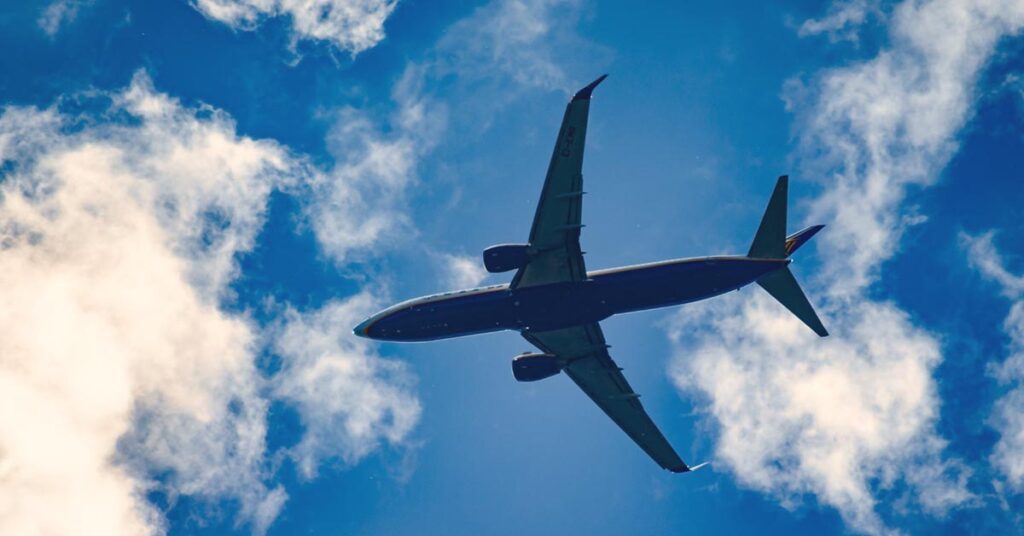
How do you get to Transylvania?
Transylvania is located in the center of the country, which makes it very easy to access once you arrive in Romania. When it comes to transportation, you can get there by plane, train, bus, or car. And we will tell you all about it.
Get there by AIR
Otopeni International Airport: All the major airlines fly to and from Bucharest - the capital of Romania. Avram Iancu International Airport Cluj-Napoca : Airlines such as Lufthansa, Turkish Airlines, or AirFrance fly here. Sibiu International Airport and the newly opened Brasov Airport : Right in the heart of Transylvania. The airlines for this airport are WizzAir, Lufthansa, Blue Air, and Tarom. Transilvania International Airport of Targu-Mures : Airlines that fly to and from here: WizzAir UK, WizzAir, Tarom.
Get there by TRAIN or BUS .
Find below a list of the largest rail stations in Transylvania. It is good to know that there are many bus stops near these stations as well.
- Bucharest North Railway Station
- Timișoara North Railway Station
- Oradea Railway Station
- Sibiu Railway Station
- Brașov Railway Station
Good to know: trains can be pretty slow, so remember to bring your favorite book!
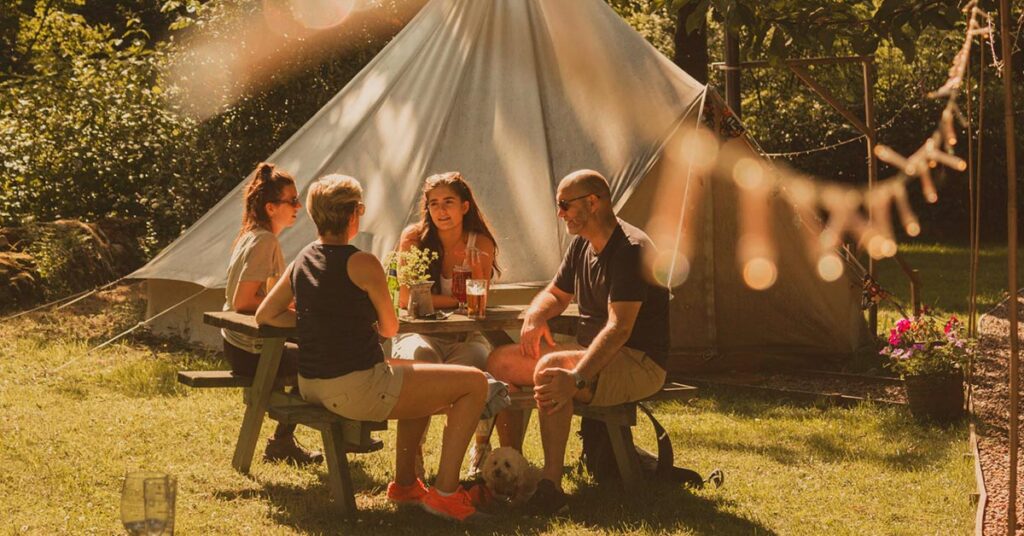
Unique stays in Transylvania
Accommodation is essential to the success of a good vacation. Taking that into consideration, here are some hidden gems of Transylvanian hospitality:
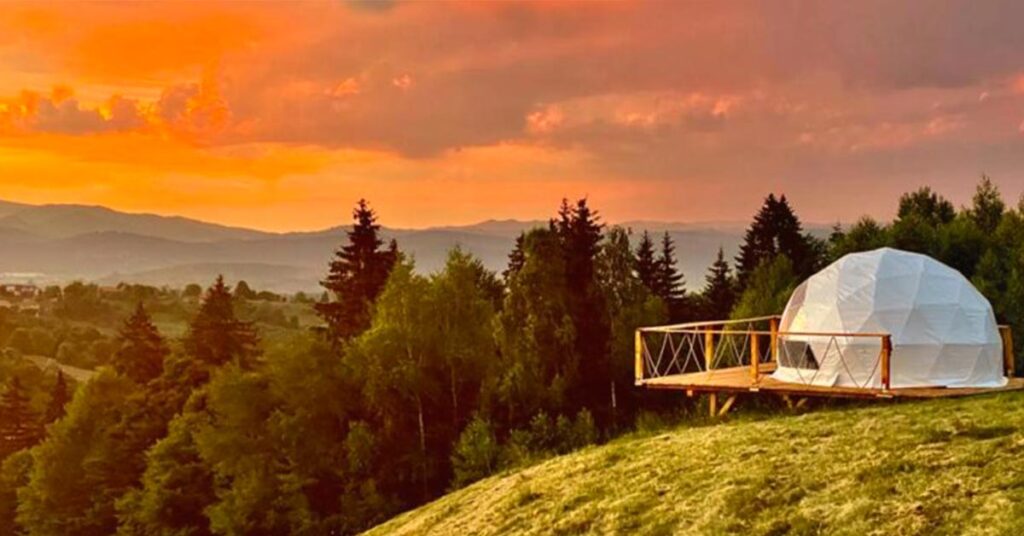
( photo credits @ Booking.com) If you are into glamping and watching sunsets, you will be amazed by this getaway called Nomad Eco Village ! This village is where technology met nature and built a sustainable out-of-this-world location. You will love it here!
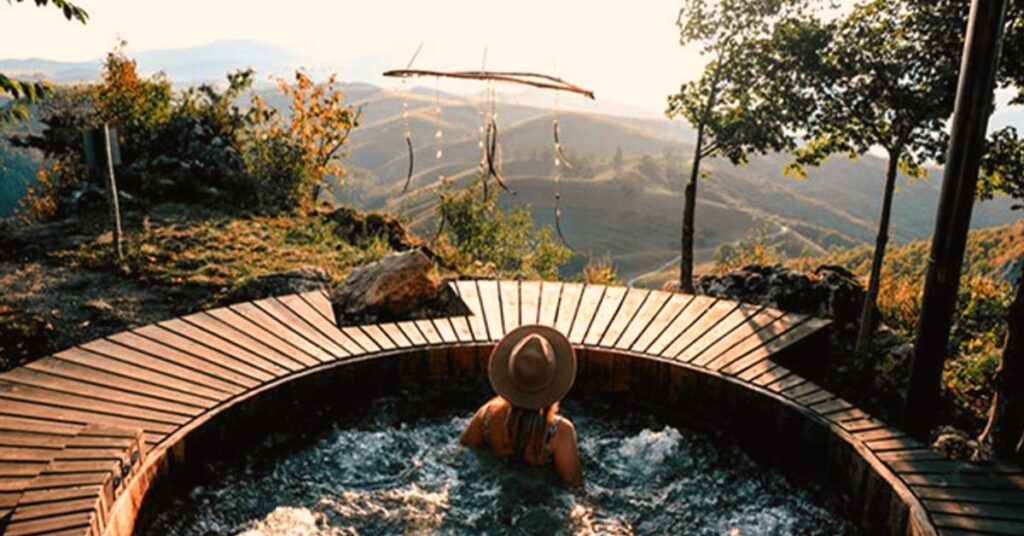
( photo credits @ BusinessMagazine) Another accommodation that will show you the beauty of Romanian landscapes while transporting you into the old times of Transylvania is The Raven’s Nest. This one is a mountain retreat where you can enjoy the outdoors to the max while sleeping in restored village houses dating to the 19th century. Just imagine a campfire here with the locals!

( photo credits @ Booking.com) We even have one dedicated to fantasy lovers, and by far the best choice if you are looking for something you have never seen before! Dealu Verde is the place for you to catch a glimpse of what hobbit life looks like! Sounds fun? Wait until you see the thematic rooms and the dreamy sunrises from your hot tub. Pretty much perfect!
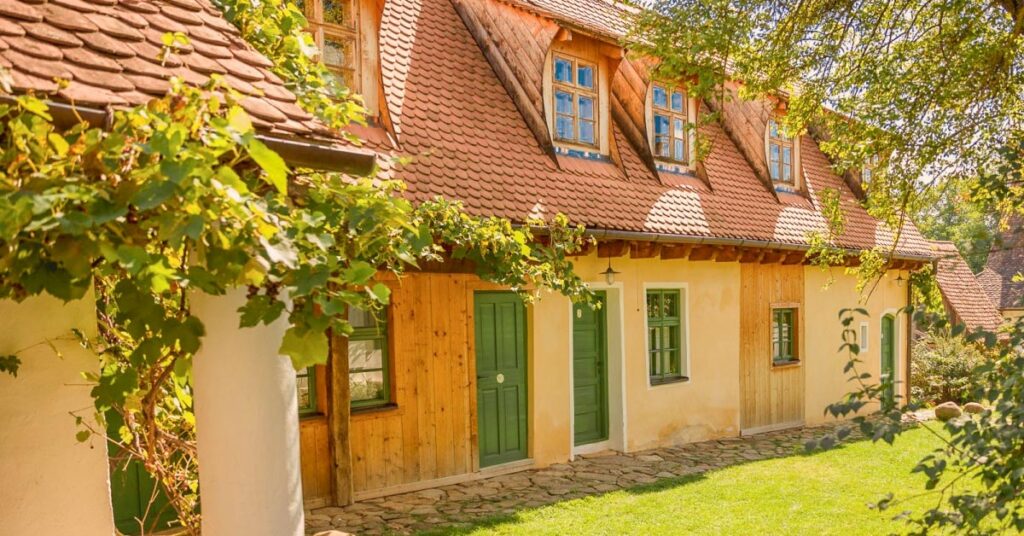
Our last recommendation has to be the restored old homes of the Viscri Village! One of our favorites is the lovely Viscri 125 B&B , located in Brașov county, and can be the best choice for travelers that enjoy the rural scenery. This village offers lots of history, cozy homes, and friendly locals! It is as if you enter a fairytale land in Viscri village. The colorful houses, the cobblestone road, the big trees, and the fortified church will show you a different face of Romania compared to the big cities.
What to do in Transylvania?
- Explore the towns
Before packing your bag and booking a tour to Romania , it will be good first to establish WHERE your home base will be and what cities are calling your name! To help you a bit with that, we created this short list of the best cities in Transylvania and what they have to offer:
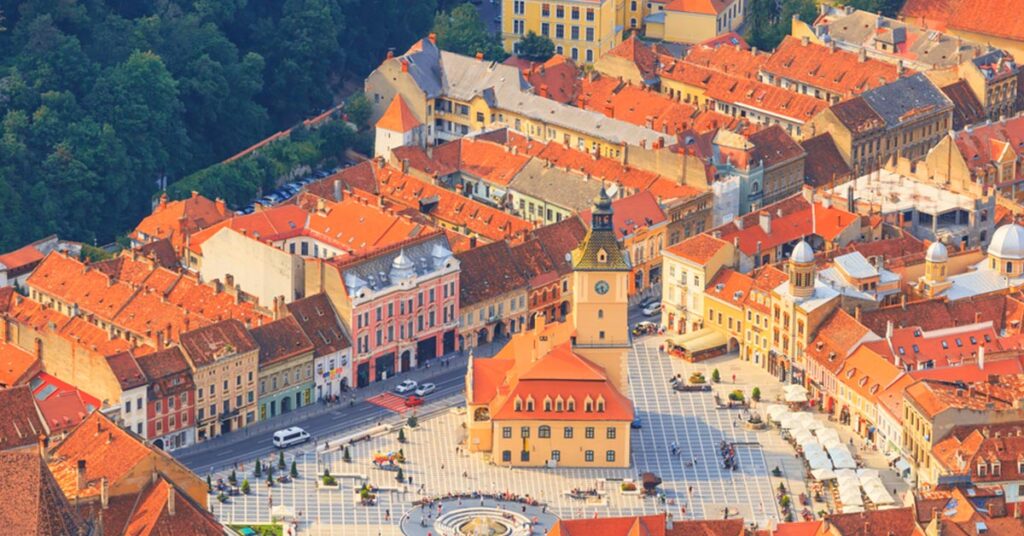
Brașov Probably the best mountain city. You cannot go wrong with making this city your base! People love it during the winter season for its skiing resorts, but year-round, you will find this city very lively, filled with coffee shops, traditional restaurants, and street music.
There is a lot to do here, such as exploring the history and ancient architecture, hiking up to the “Brasov” sign on top of the Tampa mountain for the view, or simply enjoying the nightlife in the old town. Also, near Brașov, there is a lot more to see and visit! For example, near Brașov, you’ll find Bran village and Dracula’s Castle . It is a 30 min trip by car or bus, so do not forget to take a day trip to explore that!
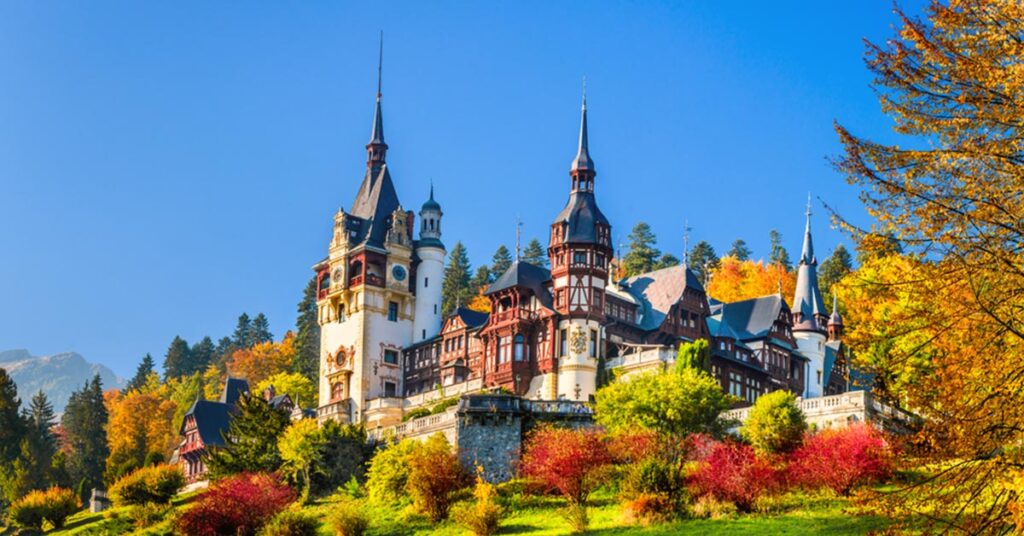
Another fantastic place near Brașov is Sinaia! Only 40 km away from Brașov and easy to reach by train or car, this mountain town is one of the most famous in Romania, simply for its natural beauties, the old monasteries, and the Peleș Castle! This fairytale-like castle used to be King Carol’s summer residence. You could say it is truly an architectural artwork combining elegance with the coziness of a family home.

Cluj-Napoca Currently the largest city of Transylvania, Cluj is a cultural, university, economic, and industrial center. More than a third of its population comprises students from the country and Europe. Besides the historical attractions and nightlife, the city welcomes its visitors with a famous botanical garden and international festivals, the best-known being the Untold Festival!
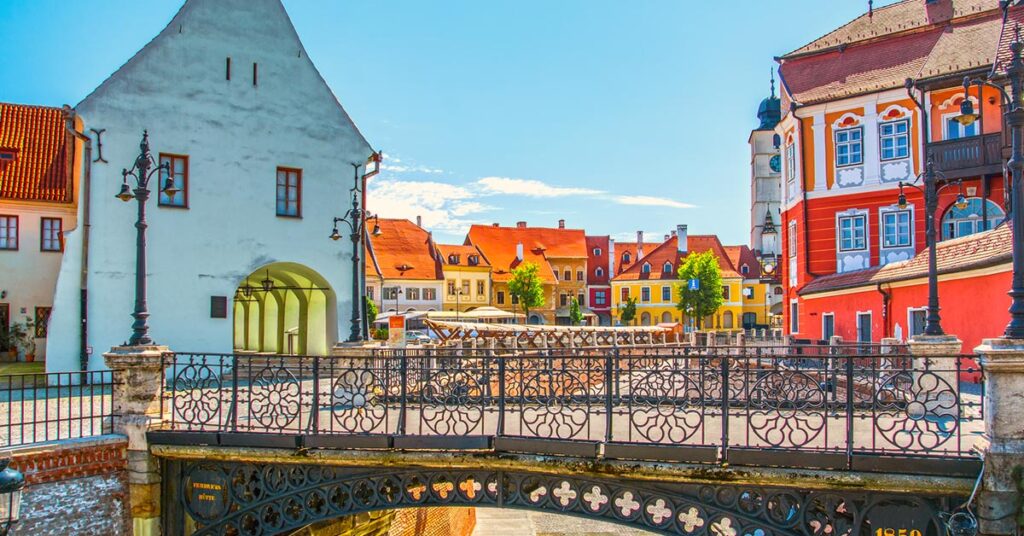
Sibiu Former European Capital of Culture, the city of Sibiu has the most remarkable medieval heritage: towers, bastions, fortification belts, old buildings, and narrow streets, all of which give it a unique charm. Tourists love this place for its nearby hiking trails and the old town's Great Square.
Many events happen here in the open air, and you'll also find brunch restaurants, fancy boutiques, and street vendors. Sibiu is considered by many not only the most beautiful in Transylvania but also in Romania. Sibiu can make a great home base for you, as there are many other beautiful places to see nearby.
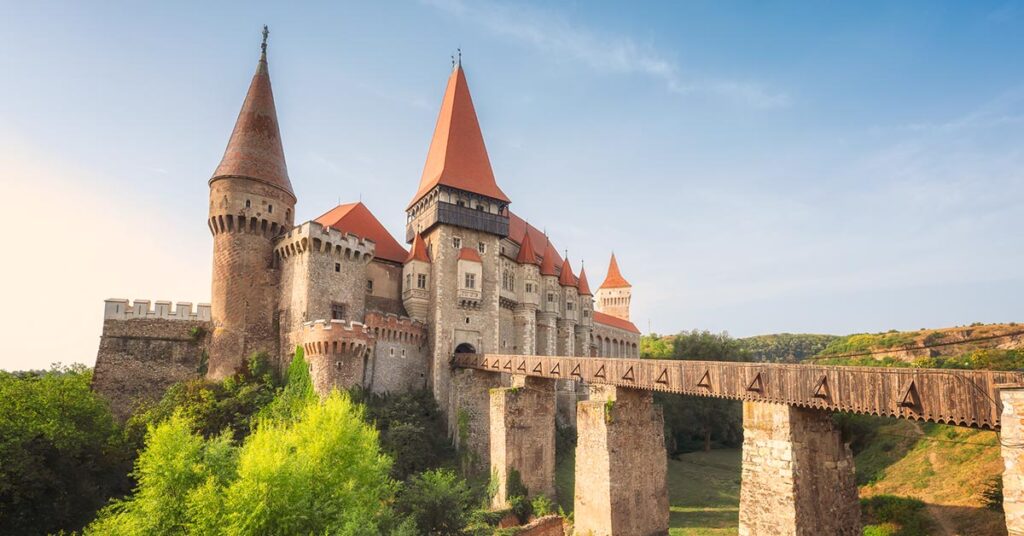
Another thing people love about Romania is the castles! With a 2h journey from Sibiu, you can reach Corvin Castle! This is a Gothic-style building with towers and bastions, where an annual medieval festival with medieval ladies, knights, and dances takes place. Worth seeing in real life!
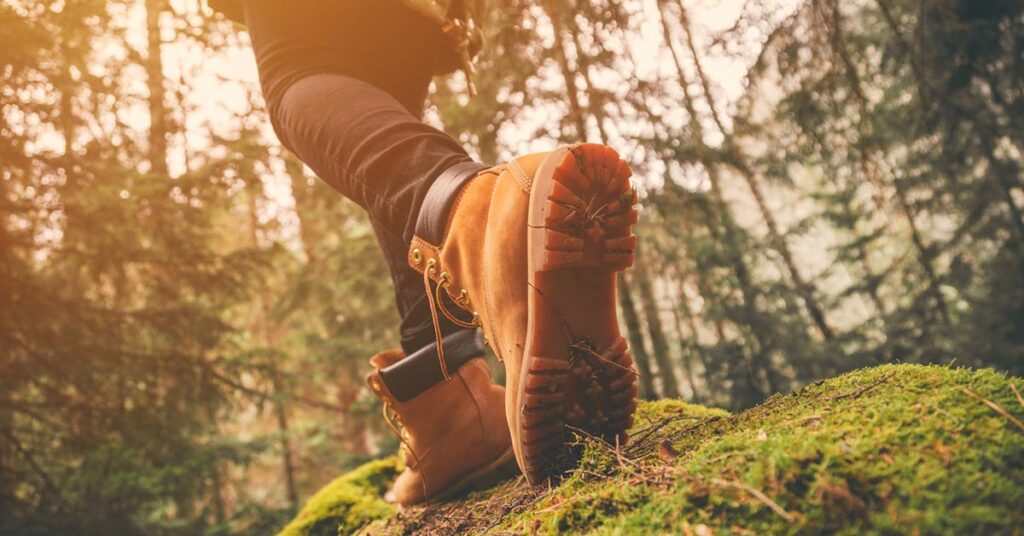
- Hike in Transylvania
Hiking in Romania is very enjoyable! It is not only good for the body but also the spirit! The Carpathians have lots to offer when it comes to hiking: you can easily find a route suitable for your skills and stamina. From gorgeous easy walks through the forest to difficult abrupt paths and huge caves, hiking is tons of fun, but always remember to be well prepared: have your hiking essentials, join a group with a mountain guide, and remember that this is the country with the largest population of wild bears! Find a good option for your hikes right here.
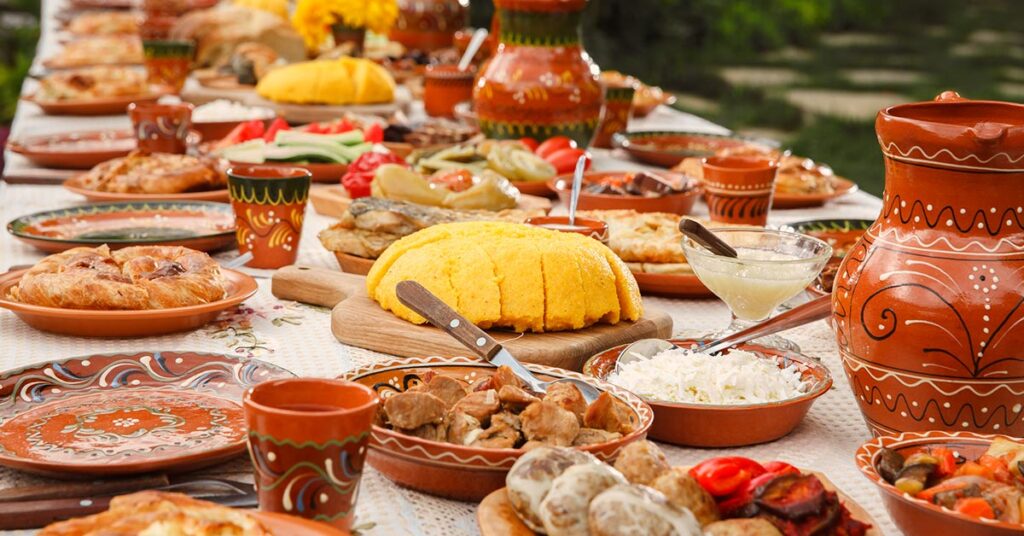
- Eating and drinking in Transylvania
The food culture of Romania is well-known across the globe for being delicious and memorable! Have the courage to try traditional dishes and homemade food, even if some may not align with your personal tastes. We are sure you will fall in love with Romanian cuisine and everything it has to offer.
Some of the dishes we recommend trying in Transylvania are: SARMALE - Pickled cabbage rolls stuffed with meat and rice. Eat this with a bit of warm polenta and sour cream. BEAN SOUP WITH SMOKED PORK - a delicious soup, usually served in a bowl-like carved piece of local bread. Simply a unique Transylvanian experience! BULZ - this one is polenta with local cheese, sour cream, and fried bacon. It is common to have it without bacon, so if you are a vegetarian, ask for that option. Simple and savory! GOULASH (soup or stew) - This dish comes from the Hungarian influences in Transylvanian cuisine and is a very meaty dish with a red tomato sauce, a lot of paprika, and vegetables and usually cooked in a rustic cauldron.

PAPANAȘI - In most parts of Romania, this dessert is a fried dough served with sour cream and jam. In Transylvania, you might have the luck of tasting the regional version, made entirely from local sweet cheese and served with homemade jam. ALIVENCI - A dessert well-known since communist times, this dish is mainly pimped sweet polenta with milk, sour cream, raisins, and vanilla. Sounds interesting? It is truly delish! Let us not forget about the drinking! You might have already heard some rumors about the alcohol-related culture in Romania. Yes, we do have one, and this is due to the richness of our vineyards and fruits! Locals in Transylvania enjoy their homemade PĂLINCĂ - which contains double-distilled plum (or apple and pears) and is similar to brandy. Whether you like a strong drink every now and then or not, you should not miss the opportunity of trying a shot of pălincă before your meal.
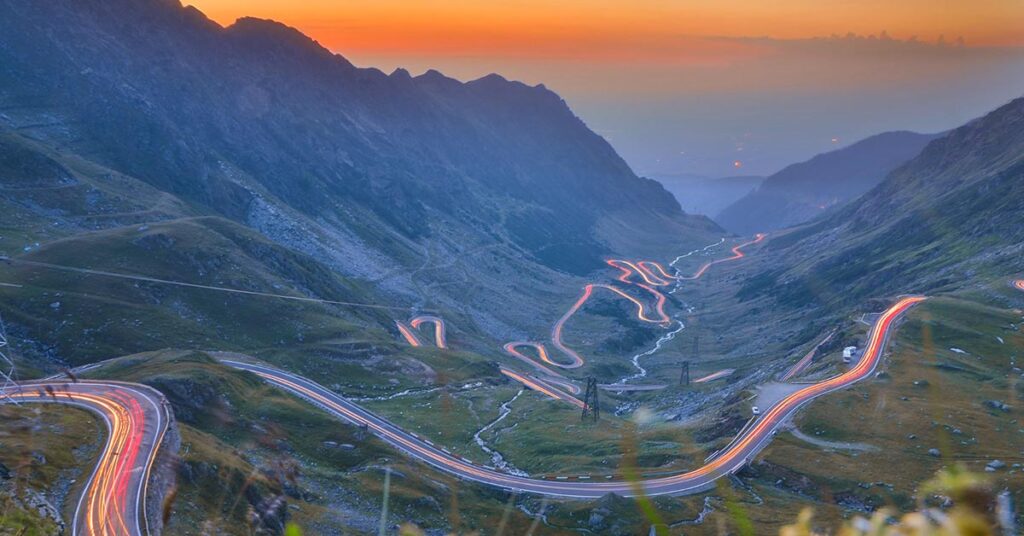
Discover hidden gems of the lands
There are a lot of nature gems among the hills and mountains of Transylvania, and many of them are very popular in Europe and even the world. Discover some of them here: TRANSFĂGĂRĂȘAN HIGHWAY - Romania’s most famous road, it has a zigzaggy shape, and its beauty, while going through the mountains, is simply indescribable. No wonder the Top Gear Team called it “the best road in the world.” Transfăgărășan reaches an altitude of 2042 meters (over 6000 ft) and remains, until today, one of the must-see places in Romania. A favorite holiday activity in Transylvania.
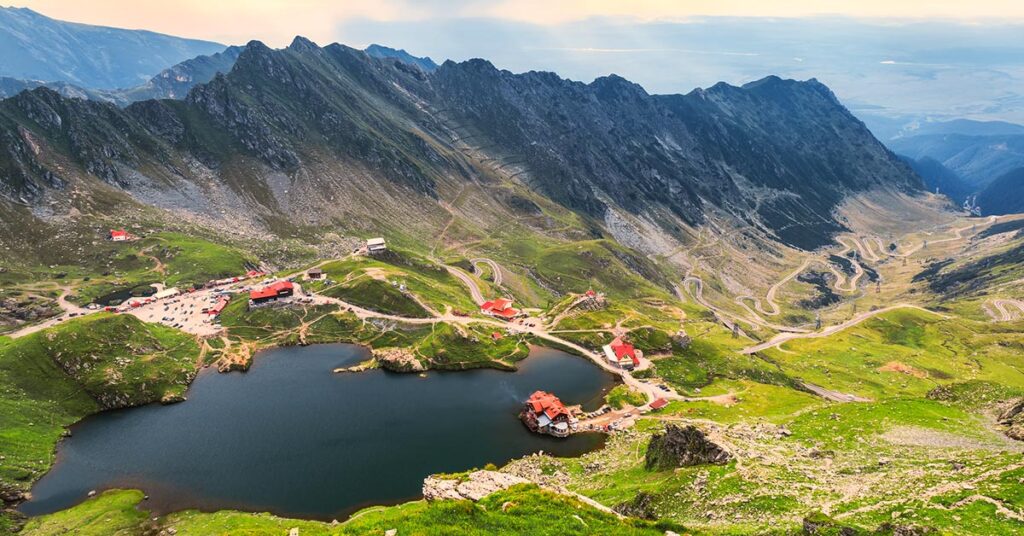
BÂLEA LAKE - At the highest point of the Transfăgărășan highway, you will find this uncommon glacier lake. Its water is the resource for creating the only Ice Hotel in Romania . Every year, the hotel is booked before it starts to snow, so be sure to reserve your room in time if this experience is on your list! During winter, the road is closed because of the heavy snow, and the only way to access this hotel is by cable car. Isn’t it wonderful? On the same road to this lake, you can also find attractions like Vidraru Lake, Capra Lake, and Bâlea Waterfall - great places for photos!
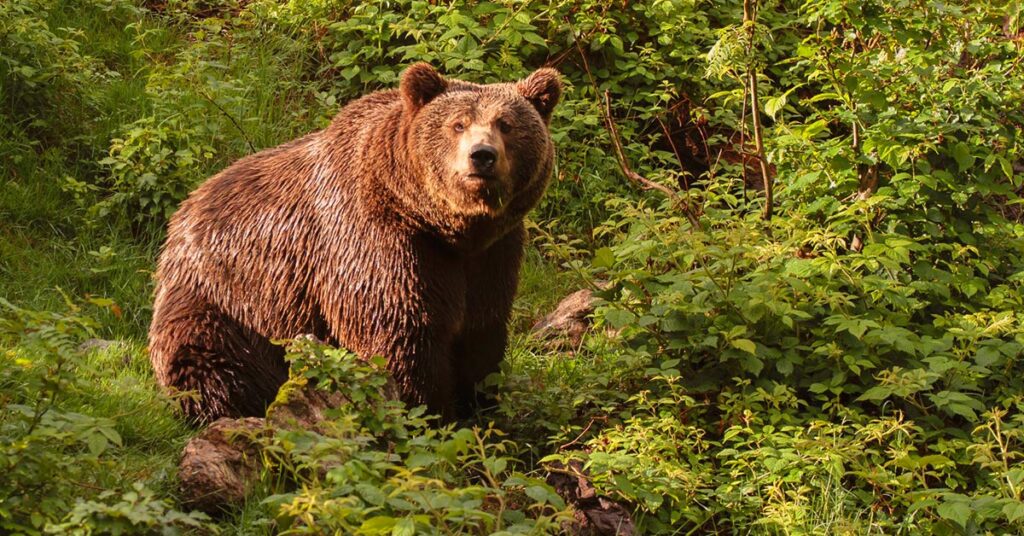
LIBERTY BEAR SANCTUARY - This organization is constantly re-homing, rehabilitating, and giving captive bears a chance to live the rest of their days in a more natural environment. You will find the Sanctuary in the city of Zărnești (just outside Brașov), where you will learn about their heart-breaking stories while being delighted by the presence of these magnificent forest creatures. A visit to the Bear Sanctuary is one of the add-ons you can use to enhance your tour in Transylvania.

Good to know if you're considering a Transylvania tour!
Cheaper than Western Europe We all know that traveling requires a very well-planned budget, so it might help to know that Transylvania is relatively cheap to explore. You can find accommodation for as little as 30-35 euros per night if you go for cheaper B&Bs, and meals can be as little as 15 euros per person. Of course, just like any other place on earth, the sky is the limit when it comes to costs. Still, relatively inexpensive travel is definitely a possibility in Transylvania.

WI-FI is crazy fast If you are a digital nomad or simply traveling and need to work remotely with good Wi-Fi, know that Transylvania’s internet is top-tier. The Wi-Fi is strong, fast, and free in most locations, you only need to ask the personnel for the password, and you will be checking your emails in no time!
Vegetarians might struggle If you are a vegetarian/vegan or on a strict diet, you might have some difficulties regarding restaurant menus since most dishes in Transylvania are meaty. There are options, just maybe fewer than what you are used to! Do your research well! In the meantime, here is a short selection of places with variety.
While it is your choice how you wish to visit Transylvania, we recommend having a local tour guide with you. You’ll find out the local stories of each place, its history, and many times some cool details you won’t find so easily by only searching online. And, if you prefer to have everything organized for you, then booking through a local agency is the best way to travel. You won’t have to do much planning or spend hours doing research. Everything will be set up for you, from transportation to the itinerary, accommodation, and food.
3 reasons to book a tour with BalkanTrails
- We only do private tours ! We tailor the tour so that it best suits your needs. You and your companions will be the only travelers on the tour. Customizations to a tour include pacing changes, included sights, a different selection of hotels, and more.
- We’re locals, so we can show you Transylvania better than any vlogger on Youtube. We also have over 20 years of experience in leading and creating incredible journeys, and we can share amazing insights during your visits.
- We create unforgettable experiences with the best possible value and lots of flexibility!
Some of the tours that include the Transylvanian experiences are:
- Romania revealed (where among others, you can learn about the ancient crafts of egg painting and black pottery or even visit the home of a Gypsy family)
- Citadels of Transylvania (we discover all important castles and see famous paintings in UNESCO Monasteries)
- Dracula Tour (this one is all about the legend, we will uncover the history behind Bram Stoker’s Dracula and even visit his grave)
We also have numerous add-ons to these tours (like rafting, bear sanctuary visits)! You can check them out on our website. They include lots of activities mentioned in this extensive guide. Isn’t it nice not having to plan everything on your own?! Saving both time & money! Explore Transylvania with us!
Don't miss out on the chance to discover the hidden treasures of Romania and Bulgaria!
Book your custom tour now and embark on an unforgettable journey through these captivating countries. With our expert guides and personalized itineraries, you'll experience the very best that Romania and Bulgaria has to offer.
Book Your Custom Tour
About balkan trails.
We offer fully customizable private tours in Romania and Bulgaria. We build the whole tour around you and your travel companions.
Enjoy the personable service of a knowledgeable private guide and private air conditioned transportation.
Pick the tour's start and end dates, visit only the sights you are interested in, spend as much time as you want to visit them, and enjoy the flexibility only a private tour can offer you.
POPULAR POSTS
- Unique travel experiences - Learn the history and skills of Romanian pottery artisans
- Is it safe to travel to Romania?
- Unique travel experiences – Romanian cuisine tour
- Unique travel experiences - Bulgaria's Culinary Tours
- 10 reasons why you should visit Romania
- Top 5 easiest Romanian cooking recipes
- Uncover the secrets of Bulgaria's most beautiful National and Natural Parks
- Go Back in Time - Visit The Amazing Fortresses and Ancient Cities of Bulgaria
- 6 reasons to organize your trip through a local tour operator in Romania and Bulgaria
- Explore Bulgaria's Most Sacred Monasteries
- Say “Yes” to Adventure. Discover how safe it is to travel to Bulgaria
- Uncover the ancient history and charm of Maramures & Bucovina
- Planning a Fun and Affordable Trip to Romania and Bulgaria: Your Ultimate Travel Budget Guide
- Plan your trip stress-free with our packing list essential tips
- Alba Iulia – a City of Historic Immortality in Romania!
- Why travel to Romania in March?
- Enchanting Fall Escapes: Immerse Yourself in Romanian and Bulgarian Autumn Traditions
- Brasov - rich history in the heart of Romania
- Romania's Castles Complete Guide (and their Legends)
- The ultimate travel guide to Sofia: the perfect Bulgarian escape!
- When is the perfect time to visit Romania and Bulgaria?
- What to wear if you travel to Romania or Bulgaria in Autumn?
- Bucharest City Guide - A vibrant city that will surprise you!
- What to wear if you travel to Romania in Spring?
- Discovering Sinaia beyond the majestic Peleș Castle. A Complete Travel Guide
- Winter traditions in Romania and Bulgaria
- Unique experiences in Romania. Explore the ancient Carpathians forests by steam train!
- 5 must-see Places in the Balkans in Winter
- 10 reasons why you should travel to Bulgaria
- Romanian and Bulgarian spring traditions. One more reason to visit the Balkans in spring!
- Complete Traveler's Handbook: Cluj-Napoca's Must-See Landmarks and Beyond
- Experience the captivating culture and stunning scenery of Veliko Tarnovo
- What to wear if you travel to Romania or Bulgaria in Winter?
- Discover Romania's Best-Kept Secret: Jaw-Dropping Natural Parks!
- Forget Dracula, Here Are 13 Authentic Experiences You Can’t Miss in Romania
- Unique travel experiences - Discover the wonders of the Dobrogea region, one of the oldest in Romania.
- 6 Amazing Experiences You Can Have on a Balkan Trails Custom Tour
- What to visit in Bulgaria in Spring?
- Discover the hidden beauty of Sibiu with Balkan Trails
- What to wear if you travel to Romania and Bulgaria in the Summer?
- Unique travel experiences - Discover the Best Christmas Markets in Romania and Bulgaria for Festive Delights
- The complete guide to visiting Bran Castle
- A journey through time: Discover Romania’s most beautiful monasteries

©2009 - 2024 www.balkantrails.com
Frequently asked questions
- What is included with your tours?
- Do your tours include any insurance related services?
- I like one of the tours, but I’d like to make some changes to the itinerary. Is it possible?
- What are the departure dates?
- Where do the tours start?
Contact information
Telephone: 0040 723 578 452 E-mail: [email protected]
Sign-up to our newsletter
Read more about us

READ REVIEWS

- Search Please fill out this field.
- Manage Your Subscription
- Give a Gift Subscription
- Sweepstakes
Transylvania Is Known for Its Mythic Tales — Now 2 Chic New Hotels are Offering Another Reason to Visit
This storied region in Romania is a land of vast wilderness, regal countesses, and plenty of folklore.
Kate Eshelby
In the early afternoon, my family and I strode out of a beech forest and onto a sweep of high grassland, where an expanse of oak trees stood like solitary guards. A picnic was waiting for us, with goulash cooking over a fire and a table laid with a bright, cherry-colored cloth.
This was the Breite, one of Europe’s best-preserved wood pastures, a type of forest that is managed through grazing. It was here, deep in Transylvania, that the Saxons — Germanic people who arrived in Romania in the 12th century — used to come to fatten their pigs on the plentiful acorns. Some of the Breite’s oldest trees, with deep grooves in their bark, have towered since the Middle Ages. “These furrows are home to the great capricorn beetle,” Peter Suciu, our guide, told us. The insects are rare in other parts of Europe that have lost their old trees, the beetles’ preferred habitat.
Transylvania, Romania’s largest and most famous region, is a place where blacksmiths still mold metal, shepherds live alone with their flocks, and hay is cut with scythes. It’s a land of villages with terra-cotta-tiled homes and vast wildernesses where bears, wolves, and lynx patrol primeval forests.
In the clearing, Suciu showed us how to cook slănină, cured slabs of pork fat, on sticks over the flames. “This is one of our most popular foods,” he said as we dripped its delicious, hot, golden juice onto hunks of freshly baked bread. We had met Suciu earlier that day, when he collected us from Bethlen Estates Transylvania , in the medieval village of Criș, where I was staying with my husband and two young sons. Only in the past several years have accommodations opened in these places, offering travelers the chance to experience a way of life that feels bygone.
For centuries, Romania was a place of turbulence. Having been claimed by a number of history’s great empires — the Romans, the Ottomans, and the Austro-Hungarians — it was consistently under attack. More recently (from 1948 to 1989), the country operated as a satellite state of the Soviet Union.
For nearly two decades, Count Miklós Bethlen, who had grown up in the family’s castle in Criș, lived in exile. He returned in 1967 and, until his death in 2001, was devoted to restoring the village and its properties, which had fallen into disrepair during the Communist era. This restoration has been continued by his widow, Countess Gladys Bethlen, and her son, Miklós, who now run a collection of accommodations occupying historic buildings on their sweeping family lands. Bethlen Estates first opened to guests in 2018 with the Caretaker’s House, which has four bedrooms, a full kitchen, a sauna, a pool, and a library. A two-bedroom Saxon-style cottage, Depner House, opened in 2021, as did the four-bedroom Corner Barn (originally used for storing hay). The Bethlens are also renovating the village’s old Saxon schoolhouse.
We’d arrived at the Caretaker’s House after crossing a wooden bridge over a stream and then following a winding path. Dormer windows protruded from the pitched roof like sleepy crocodile eyes. Inside, the bedrooms had sumptuous linens and traditional tiled stoves.
Days at Bethlen are simple but sublime. One afternoon we whizzed across meadows on e-bikes; it was April, and we could see the snow-streaked peaks of Romania’s highest mountains, the Făgăraș Range, on the horizon. Another day we walked to the village of Malancrav, before realizing we might be late for dinner. After lively negotiations with a local family, we rode back through the forest on their horse-drawn cart (rattling down hills so fast that I was a little terrified, but my children were delighted). The red wool tassels on the horse’s harness — believed to protect against the evil eye — caught the air as we went.
Thanks to our shortcut, we made it in time to sit down in the communal dining barn. First, tomato soup with sour cream and caviar, then Hungarian Mangalica pork with spring vegetables, followed by chocolate torte with peach marmalade. The Countess told us of her late husband’s love of the area. “His roots remained so deeply entrenched in this land that our children had to beg him to stop telling stories of his childhood,” she said with a gutsy laugh. Later, as my family and I strolled back up the hill to bed, I could imagine the estate’s former grandeur as I looked at the ruins of the granary and, in the distance, the Renaissance-era Bethlen Castle, where the family had lived at the height of its aristocratic power.
After several days at Bethlen, we drove an hour east to Viscri, one of Transylvania’s best-preserved Saxon villages, with pastel-colored houses leading up to its unesco-listed fortified church. One of them belongs to Britain’s King Charles III, although it’s easy to pass by without knowing — his heraldic badge is discreetly stuccoed into the home’s blue walls.
Our home for the next few days was another old residence and farm, Viscri 125 , which has been restored into a stylish, simple guesthouse with 11 rooms. The owners, Mihai and Raluca Grigore, live next door with their three children. “We moved here from Bucharest in 2007 because we loved the architecture of the village, being in nature, and the community,” Raluca told me.
One evening we ate at the home of Gerda Gherghiceanu, the Grigores’ neighbor, who hosts meals for hotel guests. After dinner she showed us her cellar, where she stores jars of homemade jams, stewed fruits, and pickled vegetables, all made with produce from her own orchards and gardens.
Leaving Gherghiceanu’s house just before twilight, we watched as hundreds of farm animals streamed up the road with an orchestra of hooves and bells. In spring, when the grass flushes green, the herds return home from grazing in the hills each nightfall by themselves. First the goats, then the cows, then the water buffalo with their long black snouts. It was a sight that felt timeless, as the sun turned everything gold.
How to Get to Translyvania
Most visitors will begin their trip in Bucharest, the Romanian capital. From there it is a four-hour drive northwest to the border of Transylvania. The best way to visit the region is with the help of a tour operator: I went with Romania Private Tours , which can create customized itineraries incorporating stays at Bethlen Estates Transylvania , in the village of Criș, and Viscri 125 , in the village of Viscri, plus excursions like horseback riding, hiking, foraging, cooking classes, and dinner with a local family.
A version of this story first appeared in the June 2023 issue of Travel + Leisure under the headline "The Land Before Time."
- Skip to primary navigation
- Skip to main content
- Skip to primary sidebar
- Skip to footer
TravelAwaits
Our mission is to serve the 50+ traveler who's ready to cross a few items off their bucket list.
12 Things To Know Before Your First Trip To Transylvania

- Destinations
Twenty-some years ago, when I told people I grew up in Transylvania, I inevitably got a wide-eyed, incredulous look, accompanied by the question: “Is that a real place?” Occasionally, it was followed by “have you ever met a vampire?”
A land once known in the U.S. only as a setting for Bram Stoker’s Dracula , Transylvania today is a popular destination for travelers from all over the world. In fact, it is on National Geographic’s top 25 places to visit in 2021 . And for good reason.
Cradled in the center of the gorgeous, heavily-wooded mountain chain of the Carpathians, Transylvania is indeed a land of enchantments. Rolling hills and lazy rivers, deep woods and rushing creeks, pristine mountain lakes and wildflower meadows are only a few of the natural wonders of the region. Transylvania’s plethora of medieval castles, walled cities, and quaint villages explains why we sometimes refer to my homeland as Tündérország — “Fairyland.”
However, Transylvania is a real place, with real people, even as it has a pastoral, old-Europe feel, where you’ll still see horse-drawn carts in the streets. And, it is open to visitors who seem to have discovered its beauty. Once behind the Iron Curtain — which explains why people in the U.S. used to believe it was a fictional land — Transylvania welcomes visitors from all over the world.
Now, when I tell people “I grew up in Transylvania,” I’m met with excited looks and specific questions about the land and its people, places to visit, and the best ways to get there. To answer these questions, here are a few things to know before your first visit to Transylvania.
1. You Need A Passport To Get To Transylvania, But You Don’t Need A Visa
Transylvania is a part of Romania, and you need a passport to enter the country. Check your dates to make sure your passport doesn’t expire for at least three months after your departure date for Romania. Besides that, you don’t need a visa to visit, unless you plan on staying over 90 days.
2. You Can Fly Into Several Cities To Use As Gateways To All Your Destinations
Several cities in Transylvania have international airports you can fly into. There is no need to fly to Bucharest and worry about taking public transportation or renting a car.
At this time you can fly into Cluj or Sibiu, and soon to Brasov (the city’s international airport is set to be finished by December 2021). All three of these cities are perfect destinations on their own, but also gateways to other attractions in Transylvania.

3. For Most Of Your Transactions, You’ll Use Lei (RON), The Romanian Currency
In Transylvania, you’ll use lei for your transactions, so it helps if you exchange some before you go or when you arrive at the airport. But you don’t need to.
You’ll find plenty of ATMs all over the place, on the street corners, or in local banks, where you can use your debit card to withdraw local currency from your bank. The ATM will display the rate and any fees they charge before your transaction, which you can conduct in English. This is by far the easiest, and therefore my favorite choice of transactions. You always get the official transaction rate, and the fees are minimal and convenient.
You can also use your major credit cards in the larger cities and tourist destinations, though make sure to ask if they take them before sitting down for dinner at a restaurant.
4. Tipping Is Customary And Appreciated
Like in the rest of Romania, tipping is appreciated in Transylvania. Salaries are low, so your tip always helps.
As for how much to tip, there is no standard answer. Generally, locals tip around 10 percent, so it is a good rule of thumb to follow, though it depends on your bill; the higher the bill, the lower percentage you are expected to tip.
5. To Charge Your Electronics, You Will Need A Converter
Romania uses 220V as opposed to 110V used in the U.S. So you will need a converter for all your electronic devices. Bring a few so you can plug in and charge your devices. But if you forget them, you can easily buy some in any electronic store in the country.
Laptops, tablets, Kindles, and similar devices all work here just as well as in the U.S. Wi-Fi is available in the large cities and in most places, except in some out-of-the-way villages in the countryside.
6. Your Cell Phone Works There — Just Make Sure You Have Service
Before leaving, make sure you call your cell phone provider and let them know you are traveling to Romania. You will most likely have an option to add a temporary international service from your provider. With most plans, you can choose to upgrade it for a month or as long as you need it.
You will have good cell phone coverage in most areas of Transylvania, especially in the cities.

7. You’ll Hear A Few Languages Spoken, But You Don’t Need To Understand Them
Though part of Romania, Transylvania is home to multiple nationalities. Besides Romanian, a large majority speaks Hungarian. Like many regions in Europe, the area has a colorful history, with often-changing borders that resulted in this mix of population over the centuries.
Because of this mix of nationalities, people of Transylvania are cosmopolitan and open-minded. Many are bilingual, and fluent in English, so you’ll have no problem communicating there. The younger generation is especially happy to practice their language skills with you.
It still helps to understand a few words of Romanian, though, since the public signs are in the official language of the state. And if you visit the Hungarian-speaking regions, a few words in Hungarian will be appreciated.
8. You’ll Most Likely Make A Few Friends While You’re There
The people of Transylvania are friendly and they are known for their hospitality. Not only will they go out of their way to communicate with you in your language, they will invite you to their homes and won’t let you leave without a meal — and a drink.
And if you ask about any of the places you want to visit in their vicinity, they will happily play the guide. They will tell you everything from where to find your destination and how to get there to personal stories, myths and legends about it. They may even offer to take you themselves.

9. You’ll Have Opportunities To Explore Medieval Castles, Fortresses, And Fortified Churches
Transylvania is peppered with medieval castles, citadels, and fortresses , so you’ll find a few nearby no matter where you land. No wonder Bram Stoker chose this countryside for his fictional vampire story. Bran Castle, however, is far from being the largest or most spectacular castle in Transylvania.
That distinction goes to the fairytale Gothic-style Hunyadi Castle in the east-central part of Transylvania, one of the largest and most spectacular castles in all of Europe. However, you’ll find a larger concentration of castles in southern Transylvania, built to protect the borders, Bran Castle being one of them.
Also in southern Transylvania, you’ll find the Villages with Fortified Churches in Transylvania , collectively a UNESCO World Heritage Site. And everywhere you go, you’ll see remains of small castles, citadels, or medieval fortresses, in different stages of ruins.

In the larger cities, like Cluj and Brasov, you’ll find parts of the old walls and bastions once protecting them. But none match the center of Sighișoara, with its still-intact walls and buildings. It’s the only inhabited medieval fortress in southeastern Europe, and therefore another UNESCO World Heritage Site .

10. You’ll Find Plenty Of Forests In Transylvania
Transylvania is also home to some of the oldest, and densest forests in Europe. Even the name reflects this, as Transylvania means “over the woods” in Latin: trans = over, silva = woods. No wonder these deep woods made a perfect home to J.K. Rowling’s dragons in her Harry Potter series.
Though you won’t see dragons here, you will see wildlife, most likely bears among them. My latest encounter happened near Santa Ana Lake about two years ago, when I spotted a young bear in a clearing.
You can find a local guide (try Medveles ) to take you to an area where you can peek at them from a secluded cabin that is safely distanced from the bears. Or, to learn more about them, visit the Bear Sanctuary of Zarnesti, where they care for injured bears who can not survive in the wild.
Pro Tip: Never approach a bear in the wild, and keep all your food and drinks locked if you visit areas where bears might be present.

11. You’ll Find Rare Natural Wonders And A World-Famous Underground Amusement Park
In the region known as Székely-Land, home to the Hungarian-speaking Székely minority, you’ll find Bear Lake , the largest (both surface and depth) heliothermal lake in the world, and the only one in Europe. The heliothermal phenomenon refers to a layer of fresh water that forms on the surface of the salt lake, insulating it, and thus keeping its temperature constant. Used to treat many medical problems, the lake is part of a spa-resort you can visit.
Near Cluj, you’ll find Turda Gorge, a narrow canyon with steep walls filled with caves and caverns. A natural monument and reserve, the gorge is home to rare or endangered plants and animals unique to this region. Nearby, the spectacular, world-famous underground amusement park and museum, the Turda Salt Mine , attracts thousands of international and local visitors.
12. You’ll Realize That The Real Transylvania Is Even Better Than Its Fictional Version
You won’t find vampires or dragons in Transylvania, but you’ll find friendly people and gorgeous, natural, and architectural wonders. By the time you leave, you’ll realize that the real place is better than any fictional version you might have heard of. No matter when you visit or how long you stay, you’ll always find something unique and stunning about Transylvania.
Related Articles:
- Fortresses And Citadels Around Brasov: Explore The Medieval History Of Transylvania
- Meet Hoia Baciu Forest, The Bermuda Triangle Of Romania

Emese Fromm is a Phoenix-based freelance travel writer, translator, and language instructor. Besides TravelAwaits , you can find her travel articles in Lonely Planet, Roadtrippers Magazine , Matador Network, and GoNOMAD, among other publications. A native Hungarian from Transylvania (Romania), Emese grew up surrounded by multiple cultures and speaks several languages. Three decades after leaving Romania, this background still helps her appreciate and connect with people of different backgrounds, which shows up in her articles, which highlight the culture, history, and legends of the places she visits. Besides writing for online travel magazines, she publishes a travel blog, teaches Hungarian as a foreign language, and works as a freelance translator.
2018 Primetime Emmy & James Beard Award Winner
19 Things to Know Before You Go to Transylvania
Nov 15 2019.
A local’s guide to Romania’s largest region, from local beer and palinka to night-life, and the the correct way to enjoy meaty stews.
Transylvania may be Romania’s best-known region—and perhaps for the wrong reasons, thanks to some dubious vampire-related lore . But Transylvania—Romania’s largest region—is rich with mountains and undisturbed forests, medieval villages, hearty food, and a welcoming, generous social life, all with only a handful of larger cities, such as the cosmopolitan university town, Cluj-Napoca, 2015’s European Youth Capital.
After Nicolae Ceausescu came to power, succeeding Romania’s first Communist leader, he ruled the country under a highly repressive dictatorship, from 1965 until he was overthrown and executed in 1989. I grew up in the center of Transylvania, in a small town called Miercurea Ciuc . I ’ve heard many stories from my grandparents and my parents about those grim years. The export of most of Romania’s agriculture resulted in widespread food shortages. The press was censored or blacked out completely. Those decades took their toll on Transylvania and the country, and as nearby European countries prospered, Romania stagnated. Romania joined the European Union in 2007, and there has been some mixed progress on the political and economic fronts.
Today’s Transylvania is a different, more modern, more open place from when my grandparents—or even I—grew up. But still, Transylvanian villages, as in the past, are mostly about agriculture, with many long-held local traditions such as harvest festivals and balls remaining strong. Meanwhile, tourism to Transylvania is on the rise. It is far cheaper to travel to and around the region than other European destinations, and there is much to discover. Here is some local wisdom to get you started, from picking a strategic base to the best way to experience that superlative stew, gulyas .

Fly into Cluj-Napoca. Avram Iancu International Airport, Transylvania’s largest and busiest—the second-busiest after the capital, Bucharest—is located in Cluj-Napoca. There 15 different airlines, and Wizz Air and Blue Air run cheap flights to other European cities. Start your trip in Cluj-Napoca, right in Transylvania’s cultural hub. From there, travel to the rest of Transylvania by bus, train, or car.
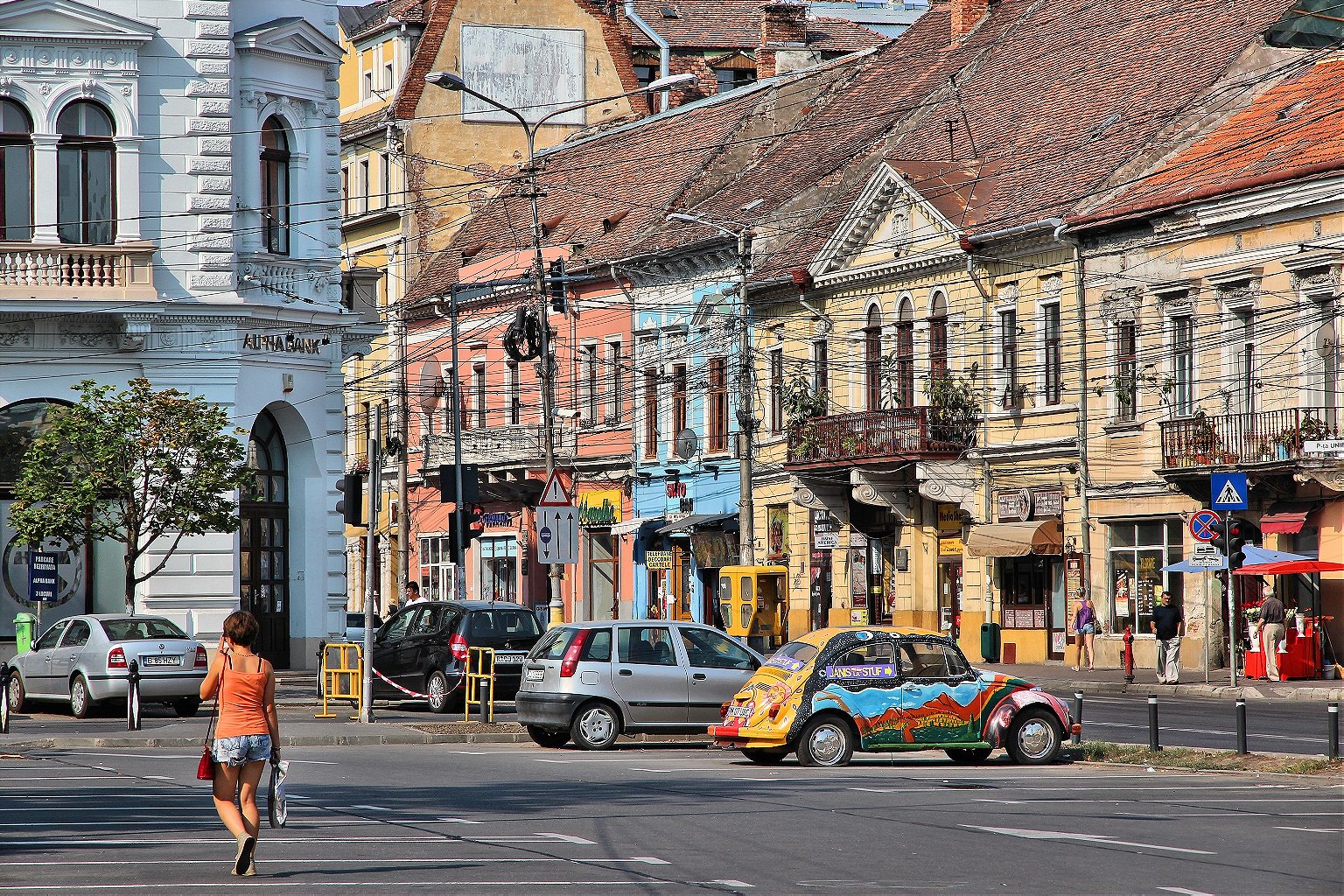
Get the geography right… Transylvania ( Latin for “land beyond the forest” or “across/through the forest”) is a region in central and northwestern Romania (the country’s largest, and about the size of Maine), bordered on the east and south by the Carpathian mountains and by some of Europe’s largest undisturbed (read: as yet mostly unaffected by humans and their follies) forests. Also, there are bears . More on that later.

…and the history. Even Transylvania’s more recent history is complex, but here goes: Transylvania’s population of just under 7 million has a mix of ethnic Hungarians and Romanians: Around 70% Romanian, 18% Hungarian, with much smaller populations of Roma, Ukrainian, and German. Transylvania was a distinct territory (under various states of rule, including being a vassal state of the Ottoman Empire) until the Austro-Hungarian compromise of 1867, when it was incorporated into the Kingdom of Hungary in the Austro-Hungarian Empire. But after World War I and the dissolution of the empire, the empire lost Transylvania to Romania in the 1920 Treaty of Trianon —which was signed by the Allied Powers and representatives of Hungary to formally end the war and carve up the empire’s former territories. The Kingdom of Hungary kept just 28 percent of its lands, with the rest were divided among its newly independent neighboring countries: Romania, Czechoslovakia, Slovenia, Serbia, Ukraine, Austria, and Croatia. After the Treaty of Trianon, Hungarians in Transylvania became Romanian citizens.
Old enmities and more recent tensions arise between Romanian and Hungarian communities in Transylvania, so be sensitive to the region’s historical baggage. These issues play out in arguments over language rights, or over whether Hungarian flags should fly over government buildings in Transylvanian towns with majority-Hungarian populations, or in the long-running dispute over who can claim the funnel-shaped Kürtőskalács (also known as the chimney cake, for its shape, or spit cake, not for any ingredients but for the way it’s cooked on a spit). While it is thought to have been invented in Transylvania, it’s unclear whether the woman who first included a recipe for it in a cookbook (in 1784) was of Romanian or Hungarian origin. But of two things we are fairly certain—that it is Transylvanian, and that it is delicious.
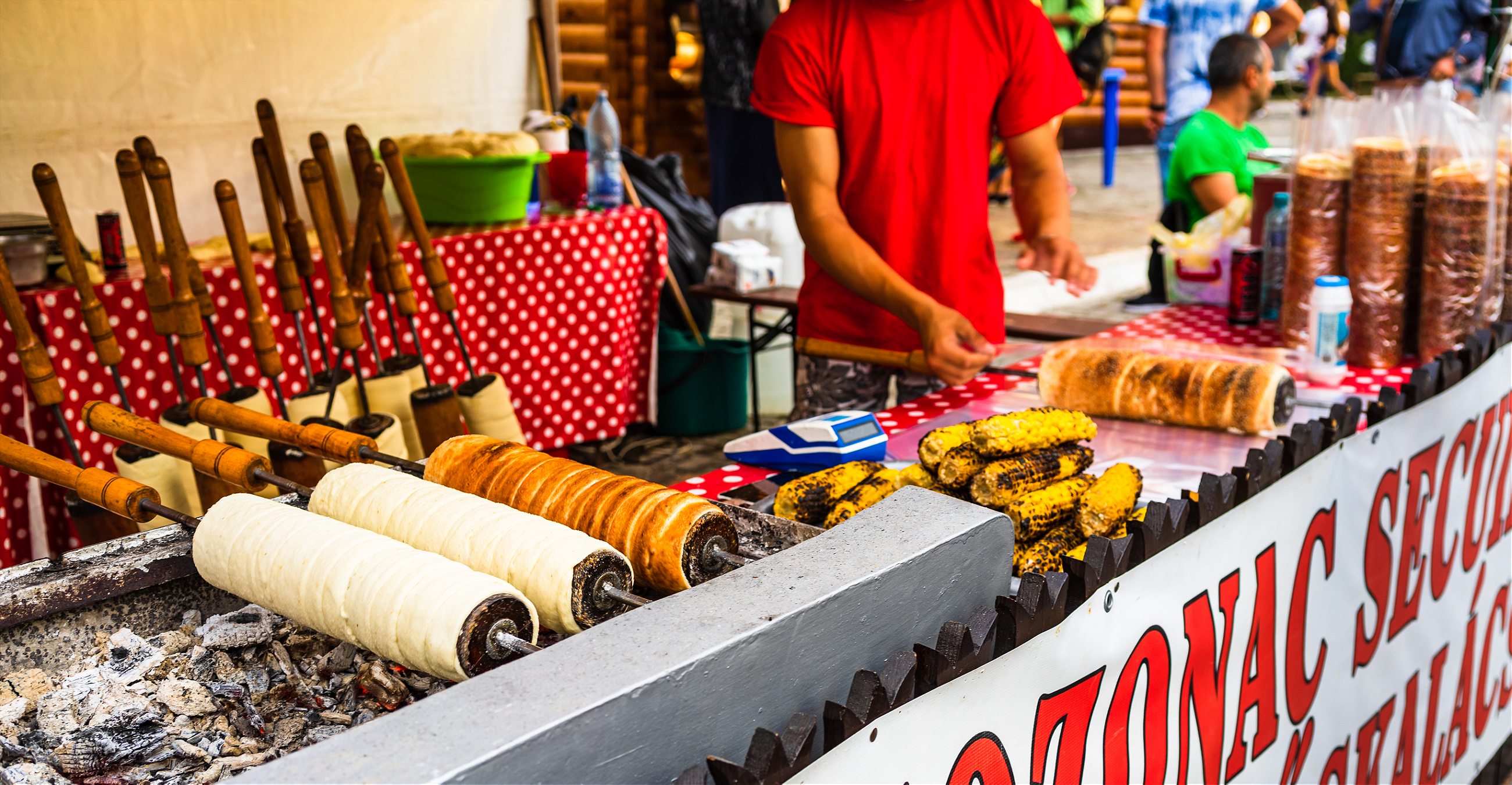
Double-check your visa needs. Romania, along with Bulgaria, joined the European Union in 2007, but it is not yet part of the Schengen Area —the group of 26 EU states that allow free movement between their borders and visa-less travel for EU citizens, and with a Shengen Area visa for others—although it is expected to join soon . This means a Shengen visa won’t cover it. EU citizens can enter and exit Romania with their passport or national identity card without a visa. Citizens of the U.S., Canada, Australia, and New Zealand don’t need a tourist visa for up to a three-month visit, after which they must register for residency. Schengen citizens do not need a tourist visa. Travelers from other countries need to apply for a tourist visa in advance. Check your status here .

Look beyond Dracula. Let’s get this out of the way: Transylvania is associated with vampire folklore and known as Dracula’s homeland thanks in large part to Bram Stoker’s novel “Dracula” and decades of pop-culture mythology. Stoker’s Count Dracula character is said (but this has not been proven) to have been inspired by a 15th-century prince named Vlad III Drăculea , a military governor of noble descent with a penchant for impaling his enemies on stakes, earning him the nickname Vlad the Impaler. Vlad’s supposed home, the Gothic fortress Bran Castle, is a national monument, one of Transylvania’s best-known landmarks, and one of its most-visited destinations.
But there’s no evidence that Vlad the Impaler ever lived in this castle. Most likely, he didn’t even live in Transylvania. But myths aside, Bran Castle is beautiful and appropriately spooky, carved dramatically on a hilltop, with Dracula-themed touches (including a glass elevator tracing Dracula’s supposed escape route in the novel). If you want to go all-in on the vampire theme, go nuts and spend Halloween here—the only time of the year when the castle is open at night. You can get a night tour of the castle and hit the party. There are also plenty of other vampire-themed hotels and landmarks trading on Transylvania’s vampire mythology.
Alternatively, visit Poenari Castle , a ruined fortress in the Transfagarasean mountains that some historians believe was Vlad’s actual residence. There is also Banffy Castle , near Cluj-Napoca. A beautiful 15th-century castle donated to the Hungarian noble Losonc family by Sigismund of Luxemburg, it’s now also the site of the annual Electric Castle music festival in July.
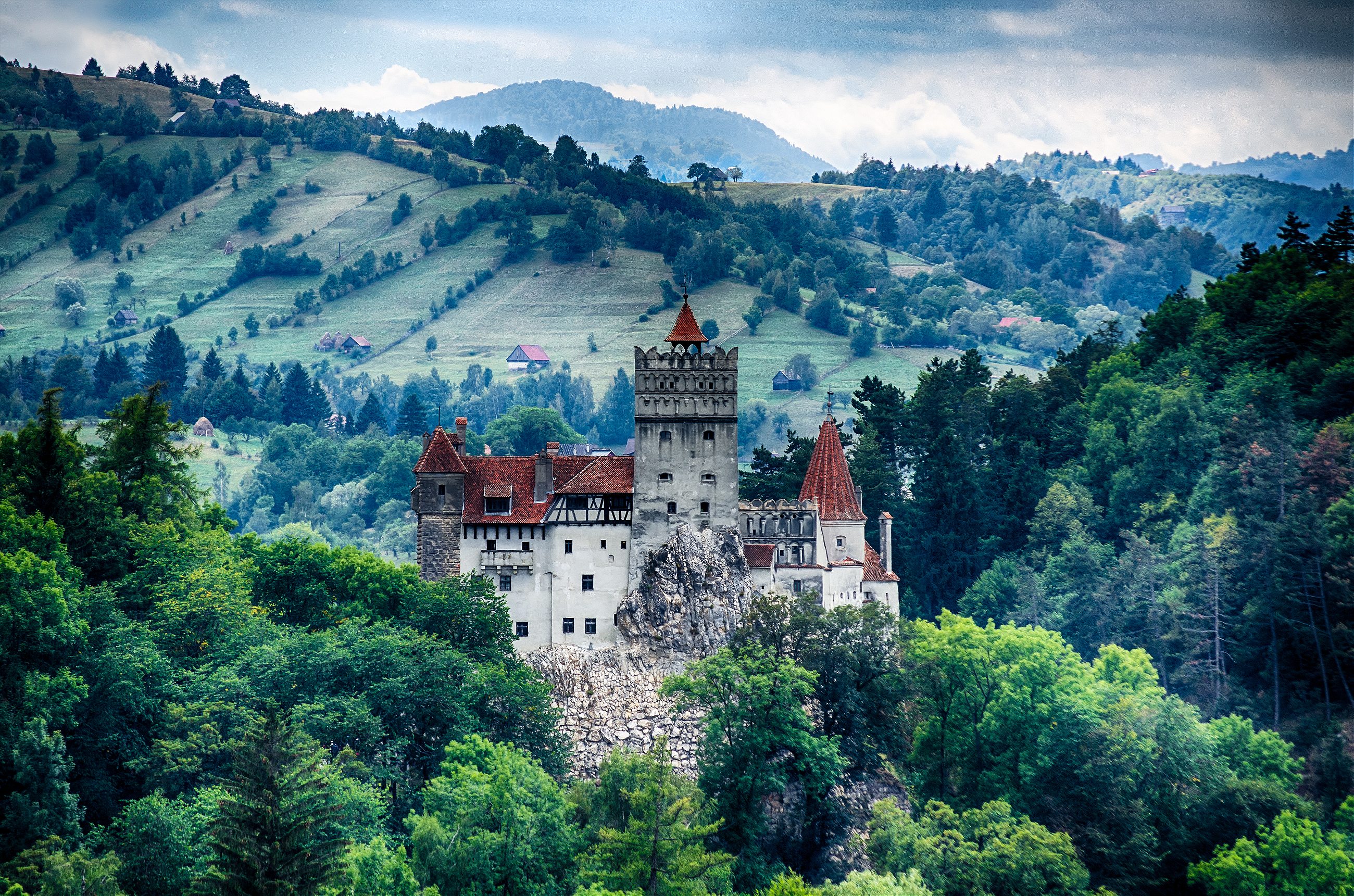
You’ll get by with English. Romania’s younger generation is well-traveled and educated. Most speak English, and many older people do too. If someone doesn’t, they’ll help you find someone who can. Transylvania’s official language is Romanian, but there are many towns where Hungarian is widely spoken, for example in Miercurea Ciuc, Gheorgheni, Brasov, Odorheiu Secuiesc, Cluj-Napoca. (The two languages are not similar: Romanian is an Eastern Romance language, and Hungarian a Finno-Ugric one, closer to Estonian and Finnish—although a small percentage of the Romanian lexicon is of Hungarian origin.)
Here are some essentials in both:
Hi/Good day!
- Jó napot [ˈjoːnɒpot] in Hungarian
- Bună ziua! [ˌbu.nə ˈzi.wa] in Romanian
Thank you.
- Köszönöm [ˈkøsønøm] in Hungarian
- Mulțumesc [mult͡suˈmesk] in Romanian
- Igen in Hungarian
- Da in Romanian
- No in Hungarian
- Nu in Romanian
Warning: Locals love to teach visitors curse words (in both languages)—none of which I care to repeat here.

Move around, make plans. Transylvania is big . If you want to explore, it’s not really feasible to drop anchor in one place and try to cover the map from there. Plan ahead, and pick several places around Transylvania to stay in. Hotels and B&Bs are generally inexpensive. If you only have a few days or a week, these are some good spots: Soparkut Panzio for horse-riding and nature, Brasov and Sighisoara for medieval towns and castles, and Cluj-Napoca for city and nightlife.

Make Brasov or Sighișoara your base. Brasov, a city of around 300,000 surrounded by the Carpathian mountains, is a good base for taking trips to other attractions. From there it’s easy to get to ski resorts (such as Poiana Brasov and Predeal), do mountain hikes, stay in mountainside cabins, visit Bran Castle, or do some horseback riding at nearby equestrian estates. The city center is still handsomely medieval, and there are many castles around the area. For some non-Dracula castle action, check out Fagaras Citadel, a beautiful fortress first built in the 13th century, 40 miles outside the city, and the entrance fee is €3 ($3.30). Feldioara Fortress , another recently rebuilt medieval castle, is 1just outside Brasov, and the entrance fee is also €3. The medieval city of Sighisoara, in the center of Transylvania, is on the smaller side, but its center is a UNESCO World Heritage Site . The Citadel, the Square, the Clock Tower are just a few of its 16th-century landmarks, the town center is all cobbled alleys and towers, narrow streets and stairways, and medieval buildings.
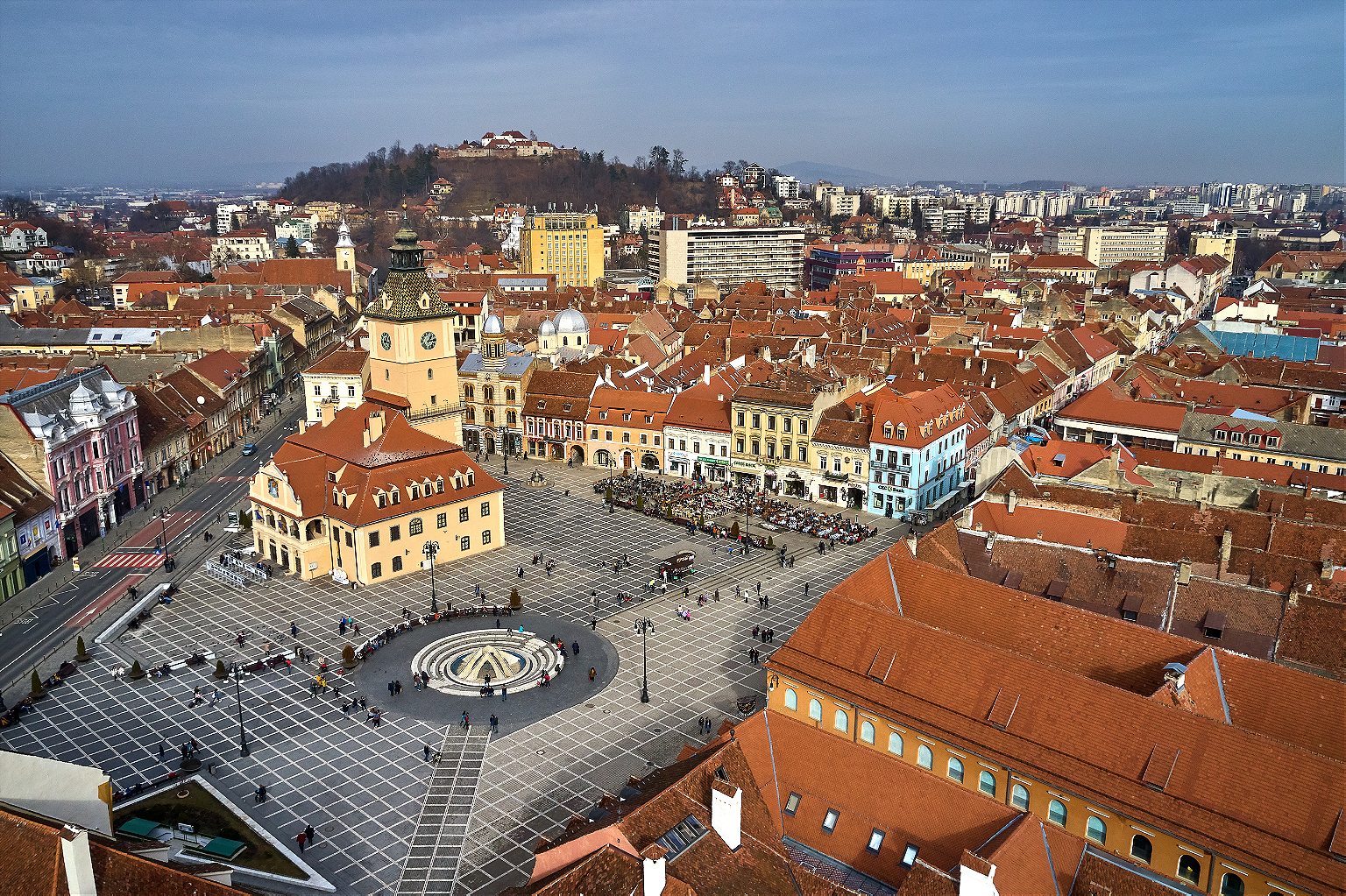
Pick your season. Transylvania has the real-deal four seasons. Springs are mild and sunny. Autumns bring beautiful red-orange-yellow colors and windy, rainy weather. Winters are cold, and the temperature can dip as low as minus 20-25 degrees Celsius, (-13 F) but it’s the perfect season for skiing and snowboarding. Summers are hot, with temperatures between 25-36 degrees Celsius (in the F 80s or 90s, so that’s the season for hiking, and swimming in Transylvania’s many lakes.

Stock up on cash. The local currency is the lei , and 1 lei is about 24 U.S. cents, or 21 euro cents. There are currency exchange offices in most larger towns and cities but they are less common in smaller villages, so be prepared to venture to the next larger town if you’re running low. Credit cards are widely accepted in big cities and shopping centers, and although grocery stores are slowly catching up, it’s better to have cash on you. Your VISA or AmEx cards are most likely going to be totally useless in small villages.

Don’t refuse palinka . Palinka is a local, traditional spirit, essentially a Schnapps —a brandy made from plums, cherries, apples, or other fruits. It’s strong and firewater-like. When not used to lift the, well, spirits, or as a quick route to drunkenness, locals drink it (on an empty stomach, no less) as an appetizer. You’ll find it in restaurants and stores, but those are not the places you should be looking. Palinka is traditionally made locally in villages, with several people in every village or town producing palinka to sell to the rest of the town. So rest assured every household will have some. Ask around to see where to buy it. If you are offered a shot of palinka, you are considered a friend, one of their own, so don’t decline. (Maybe you can refuse the second or the third one, as it’s a really strong spirit, but definitely not the first.) And don’t show any signs of disgust or discomfort when drinking it—be strong.
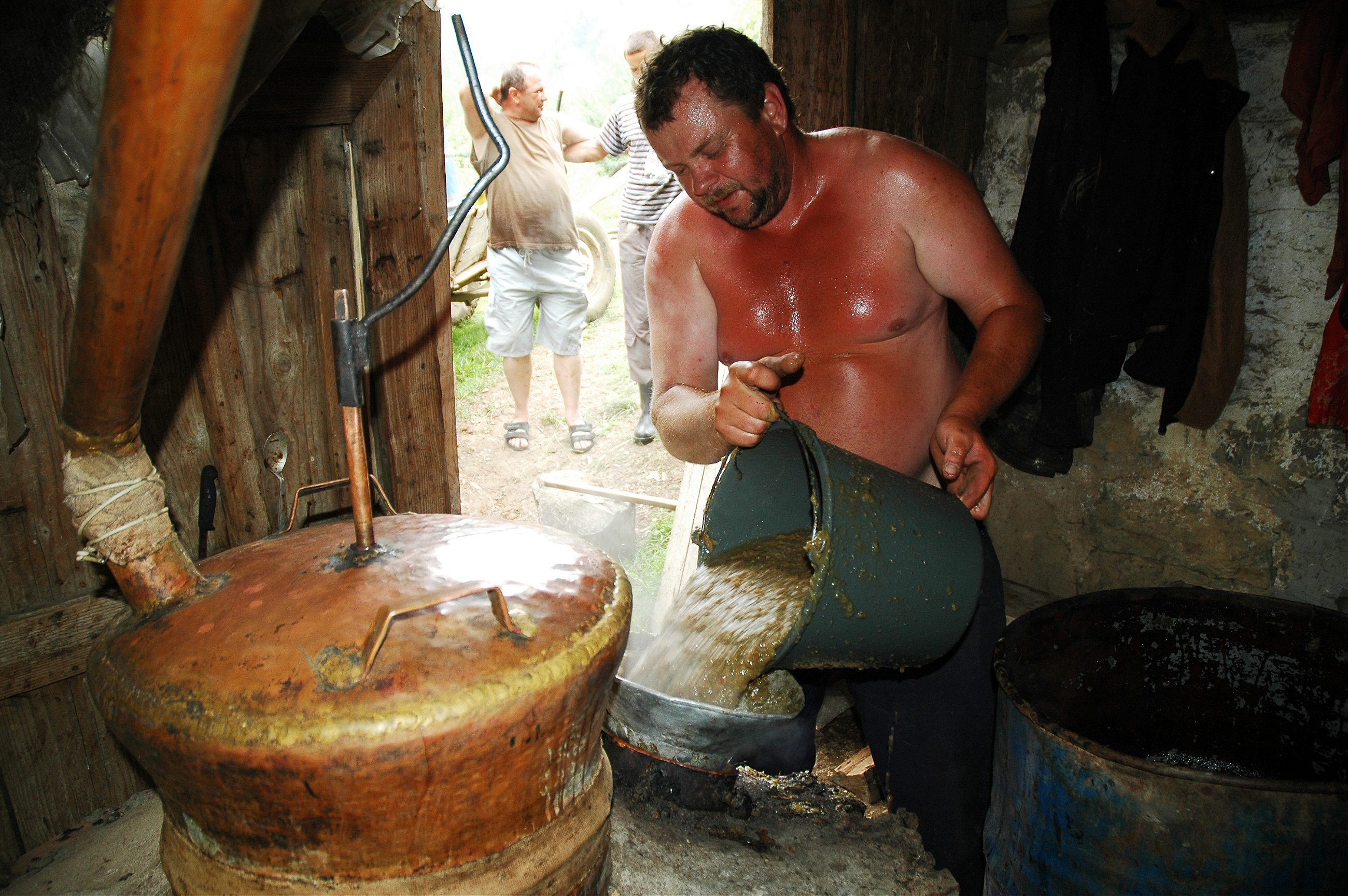
Go with four wheels. Romania’s railways are old and rickety, and trains running through the region are slow, and tend to stop at every small village on the route. It’s more practical to rent a car, not least because many mountains, castles, and villages are as yet untouched by public transport. You can rent a decent car starting from €6 3 for 3 days, €100 deposit. Car rental agencies can be found in every town, small or large, but not so much in villages, so plan ahead.

Eat gulyas outdoors. Gulyas (goulash) — one of Hungary’s most famous dishes—is thought to date back to medieval Hungary , but is popular throughout this region. It’s a stew made of meat (sometimes beef, here, mostly pork) and vegetables (potato, onion, garlic, tomato, carrots, parsley roots), seasoned with liberal amounts of paprika, which gives gulyas its distinctive, deep brown/orange-stained hue. Hungarians (girls and boys!) are expected to know how to cook it. You can find it in many a restaurant around Europe and where people from this part of the old world settled in the new, but since you came all this way, you should consume it the way it was intended—simmered outdoors. Cooking gulyas outside is pastime and social event for people in Transylvania. Groups of friends, dogs in tow, head to the woods for the weekend, make fire, drink beer, listen to music, and cook gulyas in a large cauldron (called a bogràcs ). Enough to feed everyone—dogs included. If you have local friends or hosts, suggest doing this while you’re there. Many hotels and B&Bs have fireplaces or pits specifically for this purpose, with all the equipment you need.
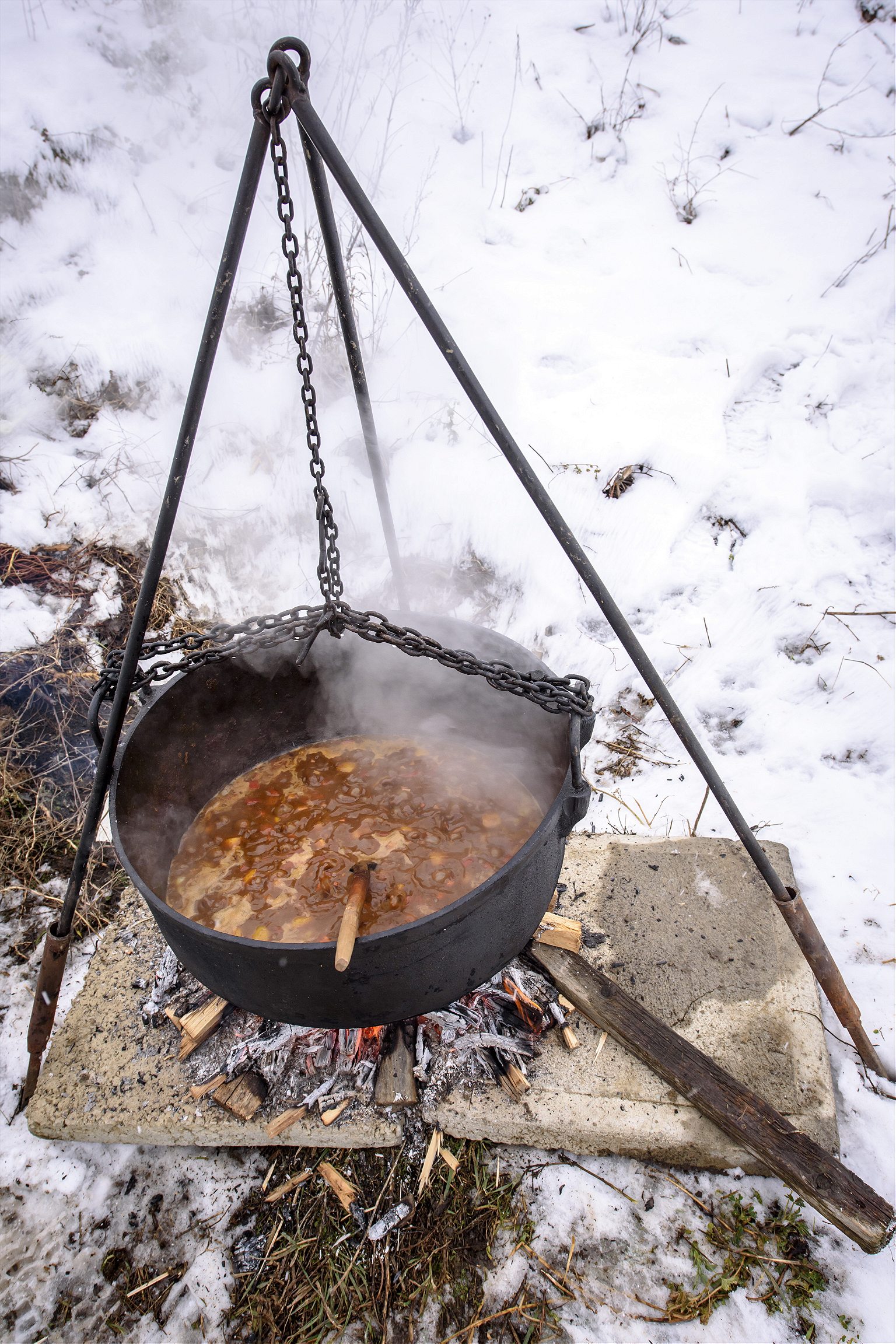
Don’t rely on travel websites to find mountain cabins. There are many awesome mountain cabins hidden in Transylvania’s forests and mountains. (Bonus: Mountainside B&Bs are equipped with everything you need to cook gulyas outdoors.) These places are deep in the wilderness, generally with no neighbors around. Bring friends, make a fire at night, sit around it, drink beer, sing, talk, look at the stars, and enjoy the summer nights. You can sometimes book mountain cabins online in the usual places (Booking.com or AirBnb), or on their own websites, if they have one. But note that some of the more remote mountain-cabin owners don’t appear on these websites and prefer a phone call. You’ll need to do some old-fashioned searching (for example, “mountain cabins in X location” to find what’s around and for their phone numbers—then pick up the phone! Plus, this way they won’t charge you for booking or canceling, and you can pay for your room when you arrive.
I particularly recommend a B&B called Sopàrkùt Panziò , in the Harghita mountains, in a meadow surrounded by forest. I also recommend anywhere in two of the most beautiful Southern Carpathian mountain groups: Fagaras and Retezat-Goldeanu. Since Transylvania is full of mountains and forest all over, it’s easy to do this on any mountain you happen to be visiting. (I strongly recommend sleeping in mountain cabins instead of tents, though, because bears. Be cautious, but don’t worry too much: campfires with loud talking and laughing people tend to keep them away.)

Drink the forbidden beer. Transylvania has an infamous beer, called Csíki Sör , or its full name, Az igazi Csíki Sör, which translates to “the real beer from Miercurea Ciuc.’’ But Heineken was already producing a beer named Ciuc, after the town’s Romanian name. Csíki Sör (made by Lixid Project Kft.) is the town’s Hungarian name (towns in Transylvania has both a Romanian and a Hungarian name). Heineken took Csíki Sör to court , claiming the name was too similar to their product. Capitalizing on the controversy, the underdogs, Csíki Sör’s producers, started marketing their beer as “Forbidden Csíki.’” The whole matter struck a language-rights chord in neighboring Hungary, where a lot of Csíki Sör is sold, and the Hungarian government even encouraged people to “protect” the Hungarian-named Csíki Sör and boycott Heineken Romania’s product. All this—plus the David-and-Goliath aspect to the story—managed to hype Csíki Sör into popularity. (The two companies have agreed to peacefully co-exist .) You’ll find Csíki Sör in many different guises: blond, brown, cranberry, and honey. But don’t forget to drink lots of Timisoreana — Romania’s oldest beer.

Hit Cluj-Napoca for nightlife…. Cluj-Napoca was the 2015 European Youth Capital for good reason. Over 100,000 students live there, so naturally, nightlife is big. For EDM and DJs, hit Euphoria Music Hall, Midi, and Noa. For dressing up a little fancier and cocktails, try After Eight. For more diverse music and a more artsy crowd, try Flying Circus, which plays rock n’roll, reggae, soul, ska, jazz, and “retro”—essentially, pop music of previous eras, heavily represented by 1990s-era top-40 acts.
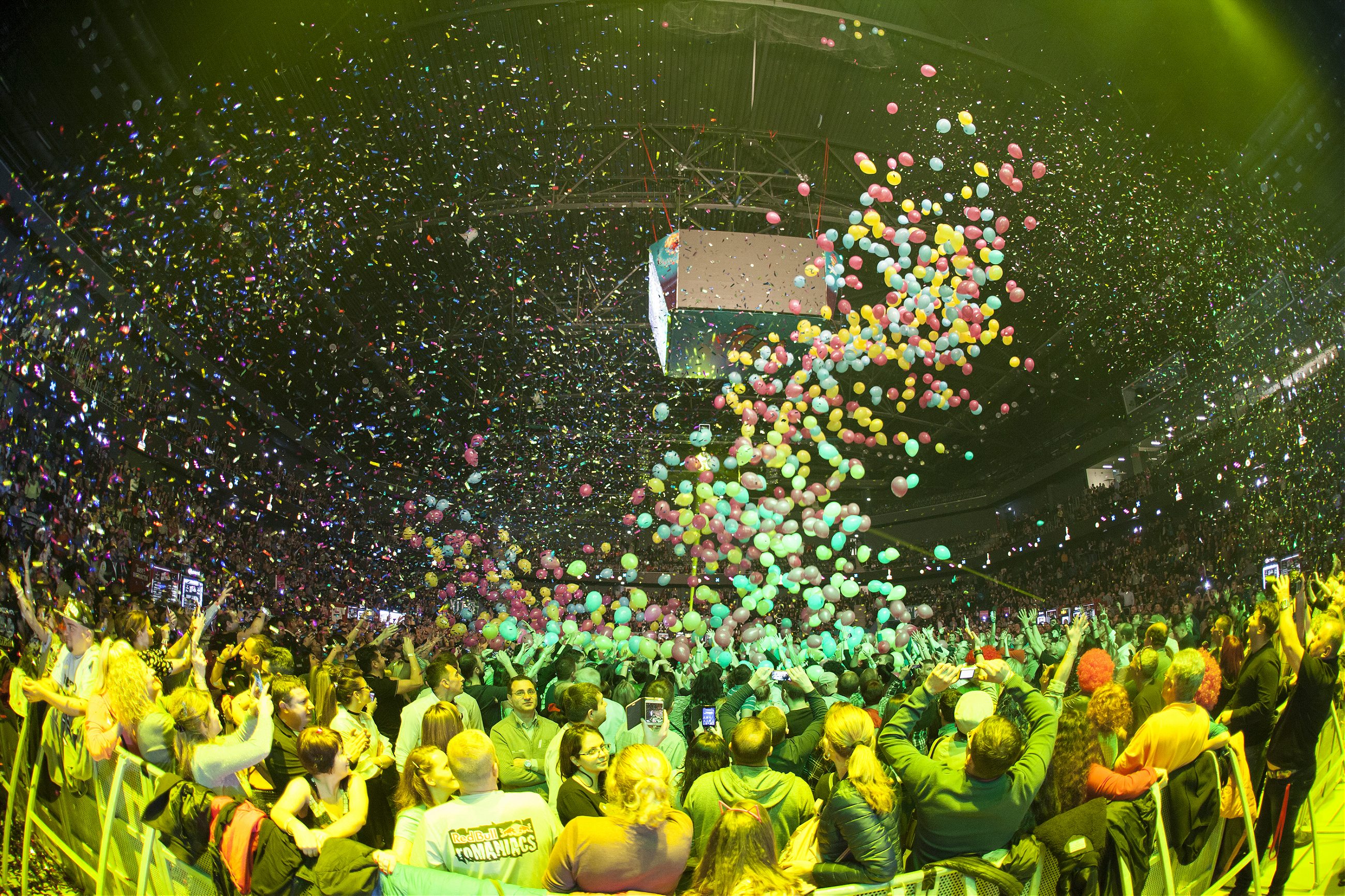
…but start late. In some parts of Europe, clubs close around 2 a.m., but not here. Don’t even think of arriving at a party before midnight—no one will be there. Cluj-Napoca’s many students usually gather and drink at each other’s places to start the night off (“warming up’’) and people start going to clubs around midnight. Parties rarely stop before 5-6 a.m., when the hungry revelers hit the 24/7 fast food places on their way home. Many fast food places are open 24 hours and have the usual type of fast food: burgers, fries, shawarma, kebab, sandwiches, pizza, wraps. Shawarma and wraps tend to be the most popular. There’s also a McDonald’s in the city center that is open 24 hours, so you certainly won’t starve, even in the middle of the night.

Live, eat, and drink “Non-Stop.” In Romania, there is no central government regulation on store opening hours. Local authorities can restrict opening hours within their areas . So, many stores that are open 24 hours, in every city or small town (less so in smaller villages). Usually, you can’t go into the store at night, but they will open a small window and hand you what you want. There is no restriction on purchasing alcohol: you can buy it at any hour of any day. If you get hungry in the middle of the night, or you just crave a can of coke, skip the delivery or food order— it’s cheaper to walk to these shops. You’ll spot the words “Non-Stop’’ on the windows of these shops. They’re usually they’re located in the center, but you can always ask local. Everyone knows where these shops are.

Bring hiking boots, and watch out for bears. Half of the Carpathian Mountain range is in the heart of Transylvania. The highest peak is Mount Moldoveanu (2,554 meters), in the Fagaras Mountains in the southern part of the Carpathians. you can rent mountain cabins— cabanas— but the best mountain-hike experience is to sleep in tents. It’s safe around Fagaras and Retezat mountains, but avoid sleeping in tents when you’re hiking on Harghita Mountains, on other mountains near Brasov, and anywhere in Harghita County—the population of brown bears has significantly increased in the past few years . If you’re brave and want to hike there during the day, go in groups, make a lot of noise, and take a gas-spray with you just in case. Bears won’t deliberately go near loud groups of people; they only attack if you get close to them and their cubs, which you can easily avoid with a bit of awareness and care.
R&K Insider
Join our newsletter to get exclusives on where our correspondents travel, what they eat, where they stay. Free to sign up.
15 Things to Know Before You Go to Vienna
Featured city guides.
- Balkan Countries
Travelling Balkans
- Bosnia and Herzegovina
- North Macedonia
- Privacy Policy
- Work With Me
15 Remarkable Things to do in Transylvania, Romania

This post may contain affiliate links. When you click on and/or make a purchase through an affiliate link placed on this website, I may receive a small commission at no additional cost to you.Thanks for your support! Read the full disclosure here .
Last Updated on July 27, 2021
Transylvania, the most famous of Romania’s three provinces, is a wide wonderland of historic castles, medieval towns, and delicious local food. There’s a lot to explore, and a lot to take your breath away. These are the fifteen most exciting things to do and places to visit in Transylvania.
15 things to do in Transylvania
Visit bran castle.
Bran Castle is at the very top of everyone’s list of must-see places to visit in Transylvania, and for good reason! This historic castle has stood since the 13th Century, was occupied by Romania’s most beloved queen, Queen Marie, and is tightly woven into the mythology of Count Dracula.
It’s a stunning castle that sits proud atop of a jutting rock and overlooks the invisible border between the provinces of Transylvania and Wallachia. Inside you’ll find a museum of antique furniture owned by Queen Marie, and outside the castle stands beautiful and picturesque like a gothic beast, captivating and daunting.

Explore Rasnov Fortress
Rasnov Fortress is, like Bran Castle, a structure that dates all the way back to the 13th Century. Unlike Bran Castle, however, which saw constant renovation over the centuries and was lived in by a queen as recently as a hundred years ago, Rasnov Fortress has remained an untouched sample of medieval history for centuries.
It’s a ruin, technically, but one that has remained in perfect condition. Rasnov Fortress also provides some of the best views in all of Transylvania. The view from the fortress stretches out for miles and miles across the surrounding towns and flat plains, and is one of the most beautiful sights in the province.

Climb up to the Brasov Sign
Brasov, the central city of Transylvania, is one of the most dynamic and exciting cities to explore in Romania, and what really makes it unique is a Hollywood-style sign that sits on the side of a mountain which can be found within the city limits. This sign is even lit up at night! You can take beautiful day and night shots of the sign, or take a cable car up there during daylight hours (9-5) and hike across to the sign to take in the view of Brasov from there. The view of the sign and the view of the town from the sign are both essential and beautiful in their own way.

© NanoStock / Adobe Stock
Eat Sarmale
Sarmale is the official national dish of Romania, and has been a cherished dish in Transylvania for centuries. You can find it at every local restaurant in Brasov, Cluj-Napoca, and Sighișoara. Sarmale are, quite simply, cabbage rolls. Cabbage is wrapped around pork meat and a variety of spices, including garlic (Romanians really love garlic) and it’s all baked together. You can eat sarmale with sour cream or on its own. It’s a hearty dish that’s full of nutrients but also delightfully indulgent and a must-try Transylvanian dish.

© Balint Radu / Adobe Stock
Eat Mititei
Known as mici in Wallachia, mititei is a local Romanian delicacy that’s popularly eaten in restaurants all across Romania. Mititei is somewhere between a sausage and a pork burger. The story goes that a chef in the 19th Century one day ran out of skin for his sausages, so he just grilled some pork meat in a rough sausage shape and hoped his customers would enjoy it. And they really do; so much so that it became a national delicacy. The proper way to eat mititei is with a very generous helping of mustard to dip each bite in, which almost every restaurant will certainly provide.
Visit Prejmer Fortified Church
In a small town just outside of Brasov – a town that is largely unremarkable – there hides an incredible secret, and one of the most incredible places to visit in Transylvania: an untouched medieval fortified church. Prejmer church itself can’t be seen from the outside.
Head in through the front gate, beneath enormous fortress walls and under medieval battlements, and you’ll come to an inner courtyard in which a huge, untouched church stands in all its majestic glory. The fortifications can be fully explored, and were onced used as sanctuary to protect citizens from attack. Today it is a museum that has remained completely untouched since the medieval period.

See the House where Dracula Was Born
In the heart of UNESCO World Heritage town of Sighisoara, found halfway between Brasov and Cluj-Napoca, you can find the still standing house where Vlad the Impaler (the man who inspired the vampire myth) was born.
While the downstairs is a gift shop and the first floor is a local restaurant, the exact room in which Vlad Tepes was born can be accessed with a ticket as you enter the restaurant area. This was the house of Dracula’s father, Vlad Dracul, and is where Vlad the Impaler spent the first four years of his life.
Climb the Sighișoara Belltower
While you’re in Sighisoara, right next to the birthplace of Vlad Draculas is a beautiful belltower which overlooks the entire old town and beyond. Pay a small fee and you can climb the belltower to the very top in order to secure one of the best photo opportunities in all of Sighisoara.
Inside the tower is also a small museum which the price of your ticket also covers. With all the beauty that Sighisoara offers, seeing it all from the belltower is vital.

Visit the Church on the Hill in Sighisoara
Sighisoara is easily one of the best places to visit in Transylvania for how untouched it is. History has been very kind to this town, and one of the coolest places in Sighisoara is the church on the hill. Stroll through the central old town, past the belltower and the birthplace of Dracula, and you’ll come to a long wooden covered walkway.
This leads up to a church that stands on a hill, the highest point in the city and a beautiful building to explore. The church itself is captivating, but the view from the hill is also fantastic and gives you a whole new perspective of this UNESCO Transylvanian town.
See the Black Church
In Brasov there exists one of the most famous buildings in all of Romania: the legendary black church. Heavily burned by a deadly fire which killed a third of Brasov’s population, and which occurred only a few years after the Great Fire of London, the church now carries the official name of The Black Church.
While photography is forbidden inside, it is nonetheless worth exploring for a painting of the Virgin Mary which survived the fire. Legend says that the dress she wore in the painting was originally blue, but was turned black by the fire and represents a mourning for the lives lost in the fire.
Enjoy the Brasov Coffee Scene
Brasov town is a great place to shop, enjoy local foods like sarmale and mititei, but it’s also a place with a really great coffee scene. There are so many unique cafes and coffee shops to enjoy, as well as late-night bars that serve delicious coffee if you’d rather that over a glass of wine.
Local coffee shops like Kafe Pub, The Pharmacy Cafe, Coffeol, and L’etage are all unique and delightful places to relax with a good coffee and while away an evening after a busy day exploring the city.

© mina709 / Adobe Stock
Eat Papanasi
Papanasi is to desserts what mititei is to savoury meals. It is the one absolute must-try dessert in Transylvania. Papanasi is sugary sweet indulgence in its purest form. Order it and what you’ll receive is a large fried lump of doughnut, another smaller doughnut placed on top, and the entire thing then drizzled with sour cream and blueberry jam.
It is soft and crunchy at the same time, sweet and bitter all at once, and a truly delightful delicacy.

Visit Peles Castle
Peles Castle is a relatively new castle in Romania, built in the late 19th Century. It was built in a neo-renaissance style and is perhaps the most aesthetically beautiful fairy tale castle in Transylvania. In terms of outstanding beauty and photo opportunities, there is no better castle to explore in Romania, making this one of the best places to visit in Transylvania.
Visit the National Museum of Art
Found in the unofficial capital of Transylvania, Cluj-Napoca, the National Museum of Art is a beautiful building and a celebration of the great art that has defined Transylvania, and Romania as a whole, for centuries. It is the best place to discover the art and culture heritage of this incredible country. The galleries feature both historic pieces of art – both paintings and sculptures – as well as celebrations of contemporary Romanian art.
Explore Salina Turda Salt Mine
Salina Turda is a true hidden gem and easily one of the most unmissable places to visit in Transylvania. It is a daunting and huge salt mine in Turda that has been in use for a thousand years! Today it can be explored as an exciting tourist attraction but it also serves as a halotherapy wellness centre. When you visit, feel free to explore the mine at your leisure or indulge in some halotherapy.
When visiting Romania, make sure you have travel insurance! I highly recommend SafetyWing, which starts at $37 a month!
Other articles you will love:
- How to Get from Bucharest to Transylvania + the best stops!
Traditional Romanian Food: 14 Must-try Dishes!
7 castles in transylvania that will blow your mind.
Love this post? Pin it for later!

Author: Jessica Esa
Jessica is a full-time freelance travel writer from the UK. She splits her time between East Asia and Europe and has traveled extensively within those regions. She also manages Books and Bao, a travel and culture blog with her partner. Find her on her travel blog Books and Bao and on social media @booksandbao
You May Also Like...
What to do in bucharest, romania, 26 unique things to do in romania, what to do in brasov, romania.
Hi there! Great post! I would also recommend spending some time in Sibiu or Cluj-Napoca. Also, I would venture into the Apuseni mountains to visit the isolated hamlets and the natural marvels of the area. Transfagarasan highway is also a must, for a perfect trip in Transylvania.
Leave a Reply Cancel Comment
Save my name, email, and website in this browser for the next time I comment.
Privacy Overview

How to Plan a Trip to Transylvania Romania
I decided to plan a trip to Transylvania on a hunch.
A photo online with a cobblestone lane and colorful houses grabbed my attention and looked nothing like the images in my mind of a place where the legend of Dracula began.
There are so many amazing places to visit in Romania yet it hasn’t captured the full attention of travelers planning European trips. For this reason, there’s no better time to plan a trip to Transylvania and see for yourself some of the best places in Romania.
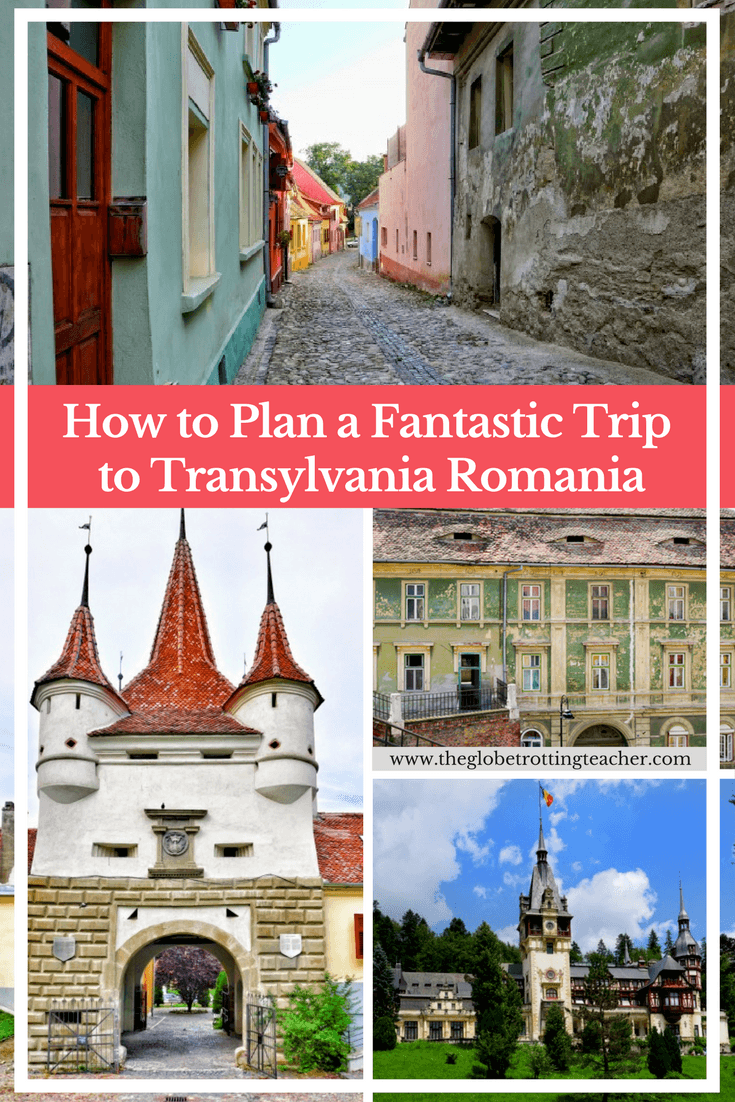
The itinerary ideas in this guide can be done in as quick as a week if you move at a good pace and you stick with the main Transylvania points of interest.
If you’d like to plan day trips to see Bran Castle or to hike into the mountains, 10 days or more will really allow you to enjoy some of the prettiest towns in Romania and take in the charm that is Transylvania.
If you’re still deciding where to travel in Europe, find out why you should visit Romania . Otherwise, pack your bags and let’s discover all the things to do in Transylvania!
Sinaia and Peles Castle

Sinaia is the gateway into Transylvania.
It’s a quick and easy train ride from Bucharest and one of the most famous places in Romania because of the fairy tale Peles Castle. King Carol I fell in love with the natural beauty surrounding the tiny village of Sinaia and its historic monastery.
He had Peles Castle built as a summer residence for him and his family. The result is an elegant castle with the coziness of a family home.
It’s possible to stop in Sinaia to see the monastery and Peles Castle en route from Bucharest to Brasov in the same day. Visitors staying longer can ride the cable car and hike into the Bucegi Mountains.
No matter how much time you plan to spend in Transylvania, a visit to Peles Castle should be at the top of your things to see in Romania’s list!
For more detailed information about Sinaia and Peles Castle, check out:
How to Visit Sinaia Romania and the Wonderful Peles Castle
Where to Stay in Sinaia:
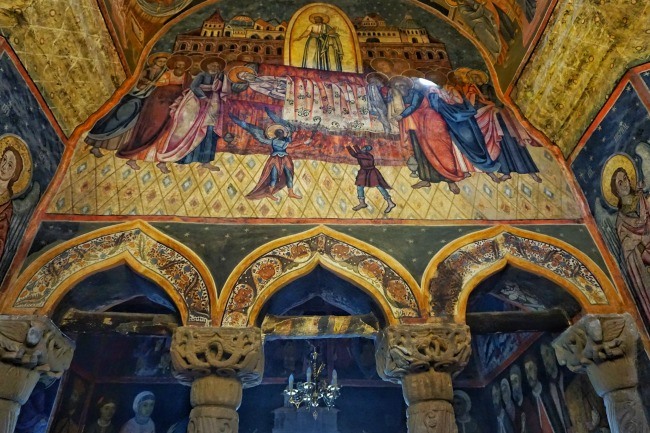
The Ioana Hotel is a beloved upscale hotel in Sinaia and Vila Retezat is equally as loved, but more budget-friendly. Both hotels have won Travelers’ Choice Awards for 2017 and are conveniently located near Peles Castle and the Sinia Monastery.
Book Now | Check Latest Prices in Sinaia | Explore Local Lodging
Pro Tip – Visitors to Peles Castle are taken through the castle on a guided tour. If you have the budget, opt to also see the upstairs. Only a handful of people buy tickets for this, but it’s a chance to really talk with the guide and get an insiders’ look at the Castle.
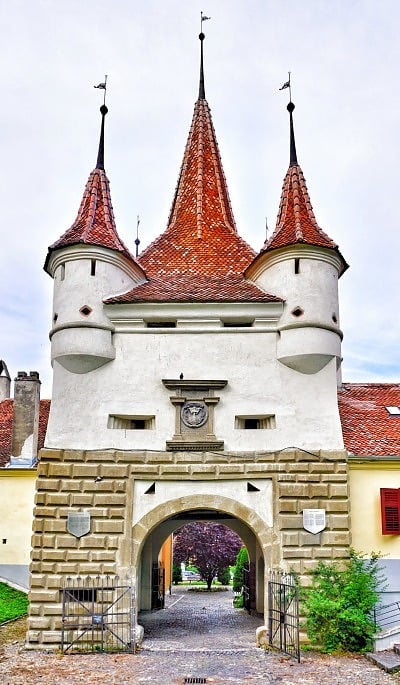
Brasov is one of the best cities to visit in Romania for good reason.
Its ideal location within Transylvania makes it a great base to discover some of the top places to visit in Romania. Start in Brasov because of its neatly preserved medieval center and all the things to do in Brasov.
Brasov sits at a cultural crossroads because of its geographic location. The Saxons to the west and the Ottoman Empire to the east left historical marks on Brasov’s churches and architecture.
Begin your visit in Brasov with a free walking tour. The tour will orient you and give a great overview of the life for the Saxons within the over 600-year-old fortification walls and the Romanians who lived just beyond the city gates.
Read more about the top things to do in Brasov with this guide:
12 Terrific Things to Do in Brasov
Where to Stay in Brasov:
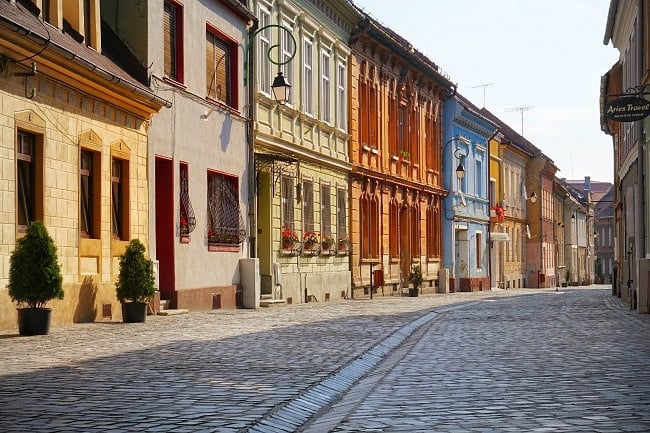
I stayed at the Kronhaus Guest House .
There is a large common area where guests can enjoy snacks and drinks while getting to know each other. Kronhaus is located just 5 minutes walking from the Piata Sfatului, Brasov’s main square.
You’ll want to stay in and around this area for easy access to the Brasov’s sights, restaurants, and nightlife.
Book Now | Check Latest Prices in Brasov | Explore Local Lodging
Pro Tip – With so many what to see in Transylvania spots nearby, day-tripping from Brasov is quite common. Rasnov Fortress and Bran Castle are in convenient reach from Brasov whether you’re traveling with a guide or independently. It also makes logistical sense to begin a multi-day Carpathian Mountain hiking excursion from Brasov.
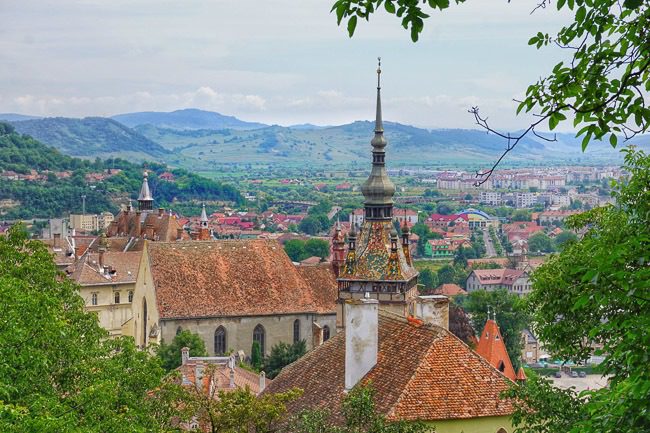
Sighisoara was built by the Saxons during the 12th-century. It’s one of 7 citadel cities in Romania and has been recognized as a UNESCO World Heritage Site.
Climb the Clock Tower and make your way up to the Church on the Hill. But, be sure to spend time just wandering the cobblestone streets and gushing over the brightly colored houses and medieval charm.
Of all the towns in Transylvania, Sighisoara is absolutely one of the prettiest!
Transylvania’s Dracula legend is loosely based on a man named Vlad the Impaler, who was born in a small house just next to the historic clock tower.
Luckily, despite a few shops in the village center selling Dracula teeth and garlic-shaped magnets, Sighisoara shines for the well-preserved historical gem it is.
Plan your visit to Sighisoara with this detailed guide:
How 1 Fairytale Day will Make You Love Sighisoara Romania Forever
Where to Stay in Sighisoara:
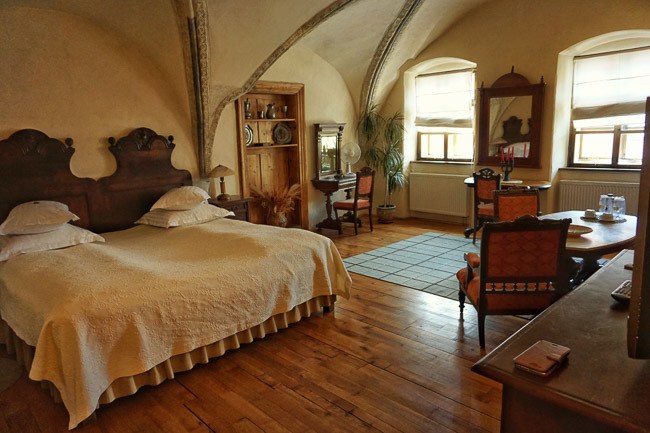
Look to stay within the Citadel to have easy pedestrian access throughout the medieval village.
I stayed at the gorgeous Fronius Boutique Residence. (It was my only lodging splurge in Romania!) The historic hotel sits along the main street in the heart of Sighisoara’s Citadel. The rooms have vaulted ceilings, antique furniture, and a quaint outdoor garden where guests can enjoy breakfast.
Book Now | Check Latest Prices in Sighisoara | Explore Local Lodging
Pro Tip – Most visitors come for just the day. Stay the night if you can spare the time in your itinerary. From late afternoon through the following morning, you’ll feel as if you have the village all to yourself.
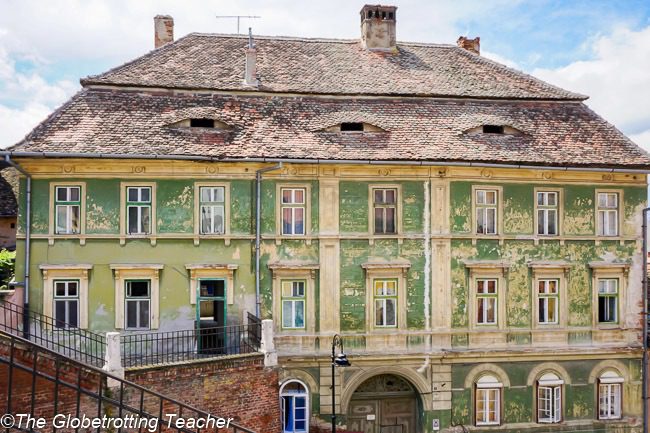
One of the best places to visit in Romania is Sibiu. It’s known for its wide-open squares, worry-free ambiance, historical roots, colorful Lower Town, and of course, its houses with eyes.
If you can’t decide what to see in Romania (because there’s so much!), just spend your time strolling with an ice cream in Sibiu! 😉
The city has grown since being founded in the 12-century but its Cathedrals and stone wall defenses remain intact. In 2008, Sibiu was named the 8th most idyllic place to live in Europe by Forbes and it’s easy to see why.
It absolutely has to be one of the most beautiful places in Romania!
From the birds-eye views to the colorful buildings in beautiful decay, Sibiu will absolutely steal your heart.
The unspoiled countryside is one of the best places to see in Romania. Luckily, it surrounds Sibiu. Set aside time to cycle into the hills or explore nearby villages and, in the process, experience Romania’s authentic agricultural lifestyle.
Read more about this Transylvanian gem you won’t want to leave:
15 Splendid Things to Do in Sibiu
Where to Stay in Sibiu:
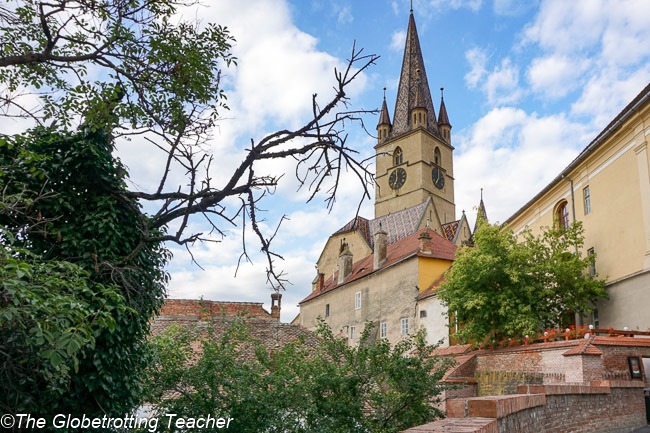
Plan to stay in Sibiu’s historical center in and around Piata Mare and Piata Mica.
You’ll find many of Sibiu’s sights, restaurants, and shops within easy walking distance. I had a great stay at Pensiunea Chic just 2 minutes from the Lutheran Cathedral.
The rooms were basic but super comfortable and included air conditioning. Breakfast is in the outdoor courtyard while taking in the Cathedral views overhead.
Book Now | Check Latest Prices in Sibiu | Explore Local Lodging
Pro Tip – Sibiu is host to many festivals and cultural and sporting events. For what to do in Transylvania and Sibiu, check the calendar of events to see what’s happening when you plan to visit.
How to Get to Transylvania
Transylvania is easily accessed by car or by train.
From Bucharest, direct and local trains run to all of the towns listed above. When possible, book tickets for direct trains. Not only will you arrive quicker, the trains are a bit newer and are likely to be more comfortable with better seating and air conditioning.
Local trains, while perhaps a bit warmer and more cramped, offer an up-close look at daily life in the countryside.
Check the Romanian train website for schedules and tickets. If you know your schedule and the tickets are available for purchase, buy and print your tickets online. In the smaller towns and villages, it may be slightly more challenging to find a train station agent who speaks English.
Pro Tip – If you finish your trip to Transylvania in Sibiu, take the overnight train to Budapest to extend your travels and/or for better international airport access.
So, which places in Romania would you like to see? Which Transylvania points of interest top your list?
Like this post? Please share it on social media using the share buttons below.
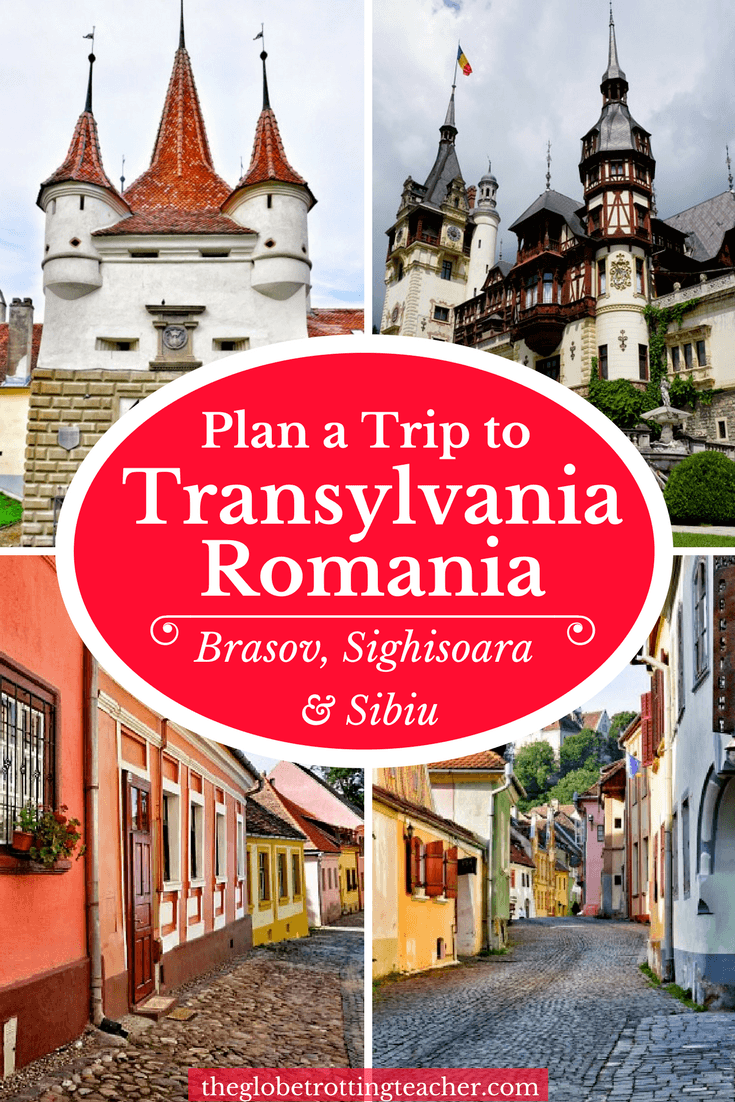
Related Posts

Why You Should Drive the Icefields Parkway + Trip Planning Tips
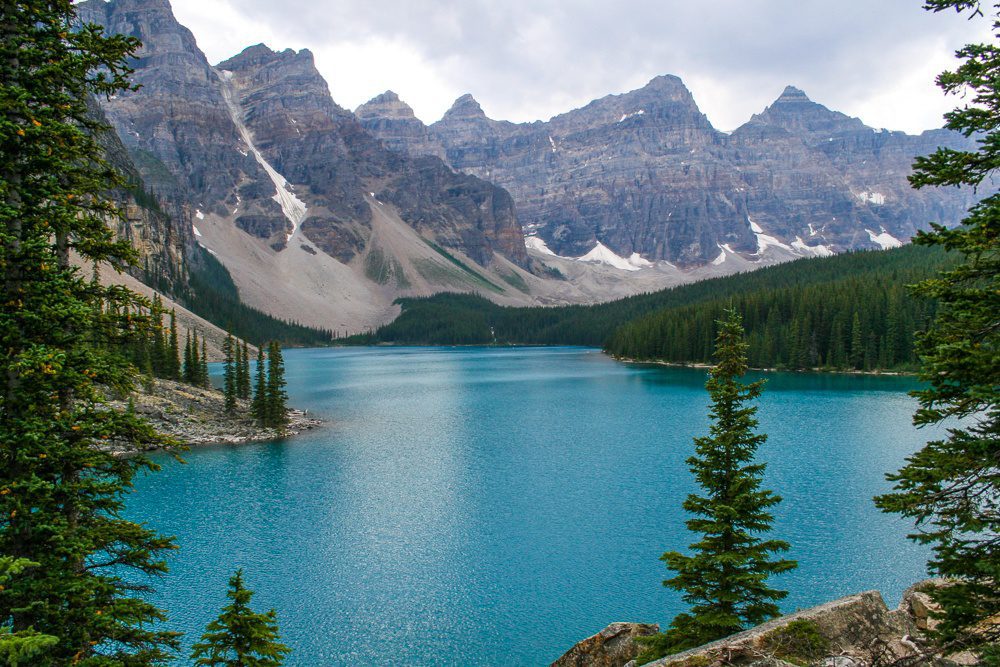
3 Reasons to Visit Banff National Park Immediately
38 thoughts on “how to plan a trip to transylvania romania”.
Amazing post! I’ve always wanted to visit Romania, it looks beautiful and full of history and culture. I think I fell in love with Sibiu and Brasov only by seeing the pictures!
Thanks, Miguel.
Thanks so much, Miguel! Sibiu was my fav…so easy to fall in love with Transylvania!
Super helpful tips Jackie, thankyou! I love finding itinerary ideas from travel blogges who have been, little gems that you can’t often find elsewhere 🙂 In all my time in Europe I never visited Romania, definitely in the plans for the future!
Thanks so much, Kim. You’ll love Romania when you make there. 🙂
Love the pro tips in the post, your pics are excellent. I can see why you feel for Sibiu – gorgeous. I have to get to Romania…
Thanks, Dorene. Hope you make it to Romania soon!
I’ve heard such great things about visiting Romania- would love to enjoy the view from the Clock Tower in Sighisoara!
Thanks for reading, Tamara. You’ll absolutely love the view from up there! 🙂
This looks so awesome! I’m hoping to get to Romania next summer. I’ve never heard of Sighisoara, but it looks absolutely incredible. It’s now on my Romania wanderlist.
Thanks for reading, Paige! You’ll fall head over heels with Sighisoara, for sure! 😉
I instantly think Dracula when I hear or read Transylvania. How beautiful it looks. It really is somewhere I want to visit. The cobblestone picture would have swayed me to visit too.
Glad you understand, Sara! 😉 Too much temptation not to visit.
Seems like such a quaint, cozy area! I love that you touched on it being a borderland between East and West. That geography never fails to create rich histories! Great post and great pictures!!
Agreed, Becke! The history from crossroads like this is so interesting.
Love those funky homes with “eyes.” Have never been to Romania, but have being seeing many articles recently about the area. Sibiu looks like a gorgeous place and the first place I’d visit on my trip. Great read and nice to take a virtual trip through your words and pictures.
You have a good eye (no pun intended!), Rosemary! Sibiu deserves to be at the top of your Romanian bucket list.
I will be in Slovenia this September and I’m strongly considering making my way over Transylvania. The photo of cobblestone lane and colorful houses has just grabbed my attention too!!! lol I’ve always liked the story of Dracula. I like that it’s a quick train ride from Bucharest.
If you have the time to spare, Christopher, I definitely recommend heading further east to Romania! 🙂
I was not much aware of Transylvania. But reading your post is indeed a revelation of sorts. The place has a kind of vintage and old world charm which is so endearing. Romania has so many hidden treasures and we do not see many posts about it. It is heartening to read your post about this lovely country.
I’m so glad you enjoyed the read, Sandy. Hope you can visit Transylvania someday.
I can’t wait to visit this part of Europe, and I would love to plan day trips to see Bran Castle or to hike into the mountains, so 10 days or more it is! Thanks for the helpful tips – I’ve fallen in love with Transylvania through your photos of the scenery and architecture – such stunning castles, and colors and spires – incredible access to heritage and history!
That sounds like a great plan, Megan! I was so glad to have extra time built into my Transylvanian itinerary. It allowed time to take day trips and also soak up the charm, particularly in Sibiu. Hope you can visit soon! 🙂
I loved your article about visiting Romania. Just made me want to go travel around my own country again. There are many hidden jewels like the ones you have seen here. Next time make sure you go to Cluj-Napoca and Alba-Iulia as well or the Danube delta.
Hi Olga, thanks for reading! 🙂 You name 3 places at the top of my list for my next visit to Romania. I loved my trip to your country and I can’t wait to return.
Romania is a tiny yet pretty country. I completely fell in love with Brasov and Sighisoara. As I am from India, the architecture of these medieval places was something new to me. We have different architectures here. 🙂
I’m so glad you loved Romania, Deepak. Brasov and Sighisoara are so pretty. I’d love to make it to India to admire the architecture there, too. 🙂
Did you travel between cities by train or bus?
Thanks for reading, Kymberly. I traveled by train for my whole trip. It was easy to do and I bought most of my tickets just before traveling.
Hi Jackie, thanks for your great insights, we are visiting Romania in September this year and have 4 nights to share beween Brasov, Sighisoara, and Sibiu. We are hiring a car from Tulcea after a week travelling the Danube Delta. So our first stop will be Brasov. Which of these beautiful places would you spend 2 nights in? Many thanks Jeanie
Thanks for reading, Jeanie. Romania is fantastic. Brasov tends to be the typical base in Transylvania. You can easily get to spots outside of Brasov like Peles Castle, Bran Castle, or the Rasnov Fortress, and the town has interesting sights like the Black Church. But, in terms of charm and still plenty of to do in and just out of the city, I’d choose Sibiu for 2 nights. I loved the vibe there and the old town has so many nooks to wander in and out of. There’s also a great open-air museum just outside of town that’s a great way to see Romanian daily life and culture. Enjoy Romania! 🙂
Thanks Jackie will book 2 nights in Sibiu and maybe a night in both Brasov and Sighisoura. Thanks for your help. Jeanie
Enjoy! Sibiu is fantastic. 🙂
Ok Jackie. Romania just jumped up to the top of our list and will likely be included as part of our trip to Austria next summer. Thanks for this guide. I will be pouring over it in the coming months. I do have a question for you – we will probably only be able to dedicate 4 days. We were thinking we would focus on Transylvania. Thoughts?
Thanks for reading, Christine! 🙂 Yes, definitely focus on Transylvania. It’s a great intro to Romania. You can see Peles Castle in Sinaia and still get to Brasov on the same day by train or by car. Brasov is typically where people like to base themselves. But, I wouldn’t miss out on Sibiu …The town is such a gem and the countryside all around is gorgeous. Let me know if you have more questions.
The best times to visit Transylvania is on Halloween. There is a very funny party in Sighisoara citadel with magician’s shows, Vampire Killing show and a Ritual Killing of a Living Dead. Nothing scary just people enjoying a well-organized masquerade party with contests. Another one is Bran Castle Halloween Party, which is a club like atmosphere and the biggest in Romania
Thanks for reading, Alexandra. It sounds spooky! 😉 But also perfect for the mystique around Transylvania.
My Father was born in or outside of Sibiu, He came to America around 1917. I Don’t think I’ll get there , however thanks for the photos and descriptions ,l enjoyed them.
Thanks for reading, Ted. I’m glad the photos and article helped you connect with your family roots. Sibiu and the surrounding area are very pretty and my favorite part in all of Romania. 🙂
Leave a Comment Cancel Reply
Your email address will not be published. Required fields are marked *
Save my name, email, and website in this browser for the next time I comment.
This site uses Akismet to reduce spam. Learn how your comment data is processed .
Privacy Overview
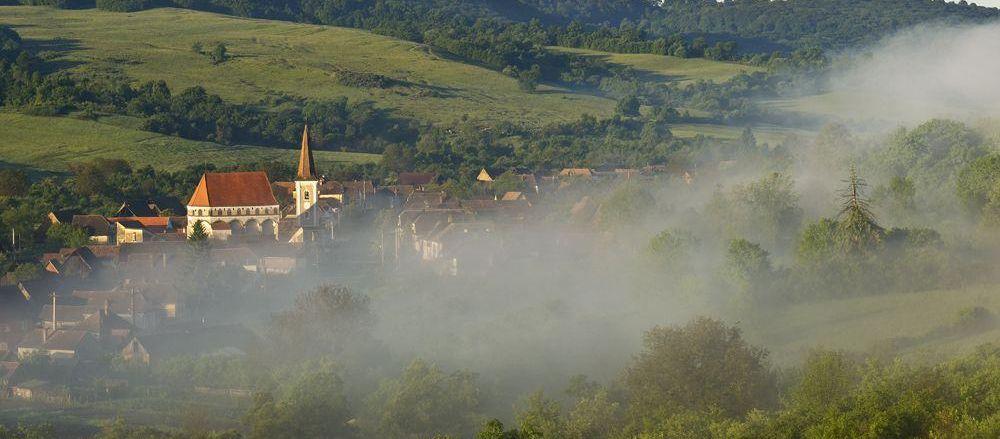
the 2024 guide made by locals for
The best 15 'must see' sights of transylvania.
Want to visit Transylvania in 2024? Great idea! In this travel guide, we'll tell you why this region is so famous, what are the best places to visit, things to do, and famous tourist attractions so you can plan an amazing holiday here!
You probably heard Transylvania is a place somewhere in Eastern Europe (actually part of Romania!) supposedly beautiful, mysterious and where (legends of) vampires come from, hidden in menacing medieval castles. In fact, the region is so shrouded in mystery and legend, that some people are not even sure if Transylvania is a real place or not.
Or perhaps you heard great things about its charming, authentic rural life from the UK's King Charles who owns 4 village houses in Transylvania?
Or maybe you've seen some beautiful pictures of famous tourist attractions, perhaps a medieval castle? While all these are true - except for the Count Dracula and vampires part - there is so MUCH more about visiting Transylvania you should know! So after reading this article, I hope you'll want to travel here and see for yourself :)
Table of contents
Practical info to plan your trip to Transylvania
- A short history of Transylvania and what you're about to see
- 1. Bran Castle a.k.a. Dracula's Castle
2. Saxon Villages with Fortified Churches (UNESCO World Heritage Sites)
3. wander through sighisoara citadel (unesco world heritage site), 4. see a gothic castle full of legends: corvin castle, 5. visit the spectacular (and healthy) turda salt mine, 6. take a day trip to rasnov fortress.
- 7. Visit Romania's spiritual capital: Alba Iulia Citadel
8. Transfagarasan Highway - a thrilling ride with awesome views!
9. transylvanian culture in cities and villages, 10. transylvanian food and wine - a must try, 11. go hiking in transylvania, 12. wildlife tracking and bear watching, 13. stay in family-owned boyar mansions or restored village houses.
- 14. Relax in one of Transylvania's many thermal baths and spa resorts
15. Attend cultural events and festivals
During my travels, lots of people told me ‘I want to visit Transylvania’, but what many of them fail to realise is how big it really is. It's not easy to travel through the whole region of Transylvania and see it all - the region is 1/3 of Romania and it's larger in size than Austria! Therefore, you need to make a proper plan and match the available time you have for a holiday with your interests and your travel style. Usually, you have to choose between crossing the main attractions of Transylvania off your list, with little time available for each one, or choosing one or two sub-regions and really diving into the history and culture of the places.
- Local tip: I really recommend the second option, because slow travel is guaranteed to give you the best experience.
Either way, there's a lot to do and see in Transylvania and you still need to do a lot of research before embarking on the journey or rely on local guides to take you from one place to another - or both!
To get more basic info (tourist cities, sights, public transport) you might want to start with our travel guide on how to visit Romania for the first time.
- Pro tip: Beware of some "expert travel bloggers" and foreign-made travel guides that think all of Romania's attractions are in Transylvania, for example, Peles Castle or include commercial, TripAdvisor-style attractions such as Clay Castle in their list; while these are examples of Instagrammable places in Romania, they have nothing to do with Transylvania's culture or history.
Transylvania is a cultural melting pot because of various populations that influenced its inhabitants or came to settle here over the centuries. Nowadays, the most noteworthy ethnic minorities are Székelys (a Hungarian ethnic group) and Saxons (a German ethnic group).
Latin for land beyond the forests, Transylvania is also called Erdély in Hungarian and Siebenbürgen or Transsilvanien in German (or Siweberjen in the Transylvanian Saxon dialect). Probably based on an adaptation of the Hungarian name (the etymology is disputed), Romanians also commonly name the region Ardeal.
Long story short, the region of Transylvania is the whole area inside the arc formed by the Romanian Carpathian Mountains and is made up of many sub-regions:
- Saxon Transylvania is a triangle-shaped region in central Romania between Sibiu - Sighisoara - Brasov known for its Saxon culture and villages with fortified churches
- The region of Maramures (N-W), is the most authentic for Romanian culture and is famous for its UNESCO Wooden Churches
- Bukovina (N-E), equally Romanian, famous for its UNESCO Painted Churches
- South-West of Cluj-Napoca, Motilor Land in Apuseni Mountains and Natural Park , for rural mountain villages
- Banat - the region around the city of Timisoara
Each of these regions has its distinct cultural identity with local celebrations, cuisine, folk costumes, unique places to visit, and tourist attractions.
And even if the many castles in Transylvania and medieval cities made the region popular, locals in rural areas have preserved their traditional way of life as if in a time bubble - far from modern civilisation and mass tourism - which is the #1 reason why you should come visit!
As our historians say, the heart and spirit of Romanian culture are best experienced in the *ancestral Romanian village*. There, a lifestyle of hard work, self-sufficiency, community, faith, simplicity, and harmony with nature has been cherished and passed down through the generations.
A post shared by National Geographic (@natgeo) on Nov 11, 2017 at 12:24am PST
This is why King Charles fell in love with this region and owns 4 village houses where he spends his summer holidays!
So the most important thing you should know is that visiting Transylvania is NOT just about seeing its top tourist attractions to snap some quick pictures, grab a tacky Dracula souvenir from gift shops, or do a day trip from Bucharest to the city of Brasov and Bran Castle , the main tourist destination in the region.
The best thing to do is to experience the magical Transylvania countryside to meet locals, see how they live, and eat a home-cooked meal with produce from their households. This is by far one of the best activities to do in Romania , and Transylvania especially.
A vacation in the region of Transylvania is also a good way to slow down and disconnect from the busy, digital, and sedentary lifestyle that the COVID pandemic accelerated, and to reconnect with nature! As you'll see, there are many things to do and places to visit and this is why more tourists come here compared to the other two regions of Romania - Wallachia and Moldova. Get inspired by our handpicked collection of day trips in Transylvania and unique experiences:
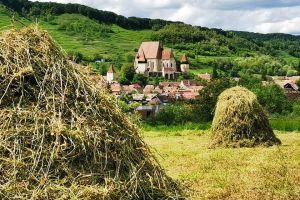
Transylvania Tours and Trips
If you're planning to visit Transylvania you'll need min. 3-5 days to travel between different cities and tourist attractions. If you're short on time and want to get a condensed tour of the region with the best places to visit, starting from Bucharest, check out this amazing and unique itinerary we prepared for this:
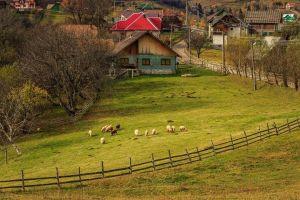
3-Day BEST of Transylvania Tour: Brasov, Sighisoara, Bran & Viscri
Start from: Bucharest
We prepared a similar one starting from the city of Cluj-Napoca, the largest city in Transylvania:
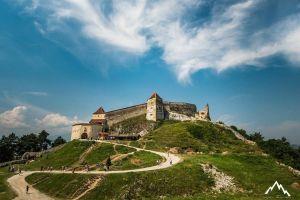
3-Day Transylvania Tour: Cities, Sights & Local Life
Start from: Cluj-Napoca
But if you want to have an authentic holiday in Transylvania, then you need min. 4-6 nights in the region. You can alternate between:
- visiting major tourist cities: Brasov, Sibiu, Cluj-Napoca, Oradea, and Timisoara (also the most beautiful cities in Romania)
- day trips from these cities to popular tourist attractions and places to visit ( Bran Castle , Corvin Castle , Sighisoara Citadel , Rasnov Fortress , the Saxon villages with fortified churches , Transfagarasan Highway etc.)
- do some cool things and tourist activities popular in Transylvania: hiking in the Carpathian Mts, brown bear watching, have an agro-tourism experience, do wine tasting in the picturesque hills
- experience authentic rural life by visiting Transylvania's sub-regions, staying in family-owned guesthouses and doing the best thing you can on your vacation - relax!
And for 2024 we're planning a 8-day shared trip for a small group with fixed departure dates, that includes the best of what Romania can offer:
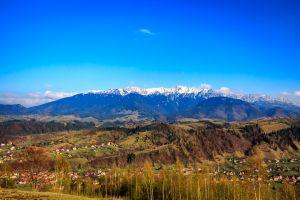
8-Day Exclusive Romanian Experience [Shared Group]
Before we get on with the list of the best castles, places to visit, and tourist attractions in Transylvania, I want to tell you a few things about the region's history so you understand why these places are important and how to make sense of what you're about to see!
A short history of Transylvania and what you're about to see
Transylvania is arguably among the most beautiful regions for tourism in Europe, easily comparable with Tuscany or Provence. Yet, what truly sets it apart is its intricate past, reflecting a multicultural identity. If you're a history buff, Transylvania's story unfolds like a captivating saga, intricately weaving together tales of conquest, settlement, and cultural exchange. Wikipedia has a whole page about the full history of Transylvania , but if you want a TL;DR version, here it is:
Over 2,000 years ago large parts of the region were settled by our ancestors, the Dacians, leaving behind visible remnants of their civilization at Sarmizegetusa Regia (former capital of Dacian Kingdom), Costesti-Cetatuie, Costesti-Blidaru, Luncani-Piatra Rosie, Banita, Capalna. The ruins of Dacian citadels are now a UNESCO World Heritage site called by "travel bloggers" the Romanian Stonehenge - what a way to disrespect two tourist attractions at the same time...
Dacia was conquered by the Roman Empire in 106 A.D. and became a wealthy Roman province renowned for its agriculture, wines, and gold mines. The remnants of this era, including the "Germisara" Roman Thermal Baths (in Geoagiu-Băi resort) or the Roman ruins of Apulum (now in the city of Alba Iulia), offer glimpses into the opulence of ancient Transylvania. Over the next centuries, the combination of locals, Roman settlers, and migrants is what eventually gave birth to the Romanian population who continued to live in these parts. After the Roman Empire disintegrated, the province of Transylvania became part of various empires and kingdoms mostly under Austrian and Hungarian rule. The medieval period saw the rise of fortified strongholds dotting the landscape, bearing witness to the tumultuous power struggles of the time.
Starting from the mid-12th century, German settlers colonized South-Eastern Transylvania under the reign of King Géza II of Hungary. They built the Saxon villages with fortified churches mainly in the area between Brasov, Sighisoara, and Sibiu. If you want to visit one or more of these villages, you can choose between Viscri (where King Charles of Great Britain owns a house), Biertan, Prejmer, Saschiz, Valea Viilor, Darjiu, and Calnic. Majestic fortresses like Bran Castle and Corvin Castle, also stand as enduring symbols of the medieval period, when Hungarian and German settlers left an indelible mark on the region's history. Let's not forget about the iconic medieval cities Brasov, Sibiu, and Sighisoara - a must on the itinerary of any traveler who seeks to discover Transylvania. Rasnov Fortress is another attraction that has a long history linked to the Teuton Knights (who built it) and the Saxons (who fortified it).
Fertile ground with rich resources and a clear natural border (the Carpathian arc), it was caught between the power struggles of the Ottoman, Habsburg, and Russian empires which defined the history of South Eastern Europe for the past seven centuries. So alliances, betrayals, battles, and truces every couple of decades were the norm here...
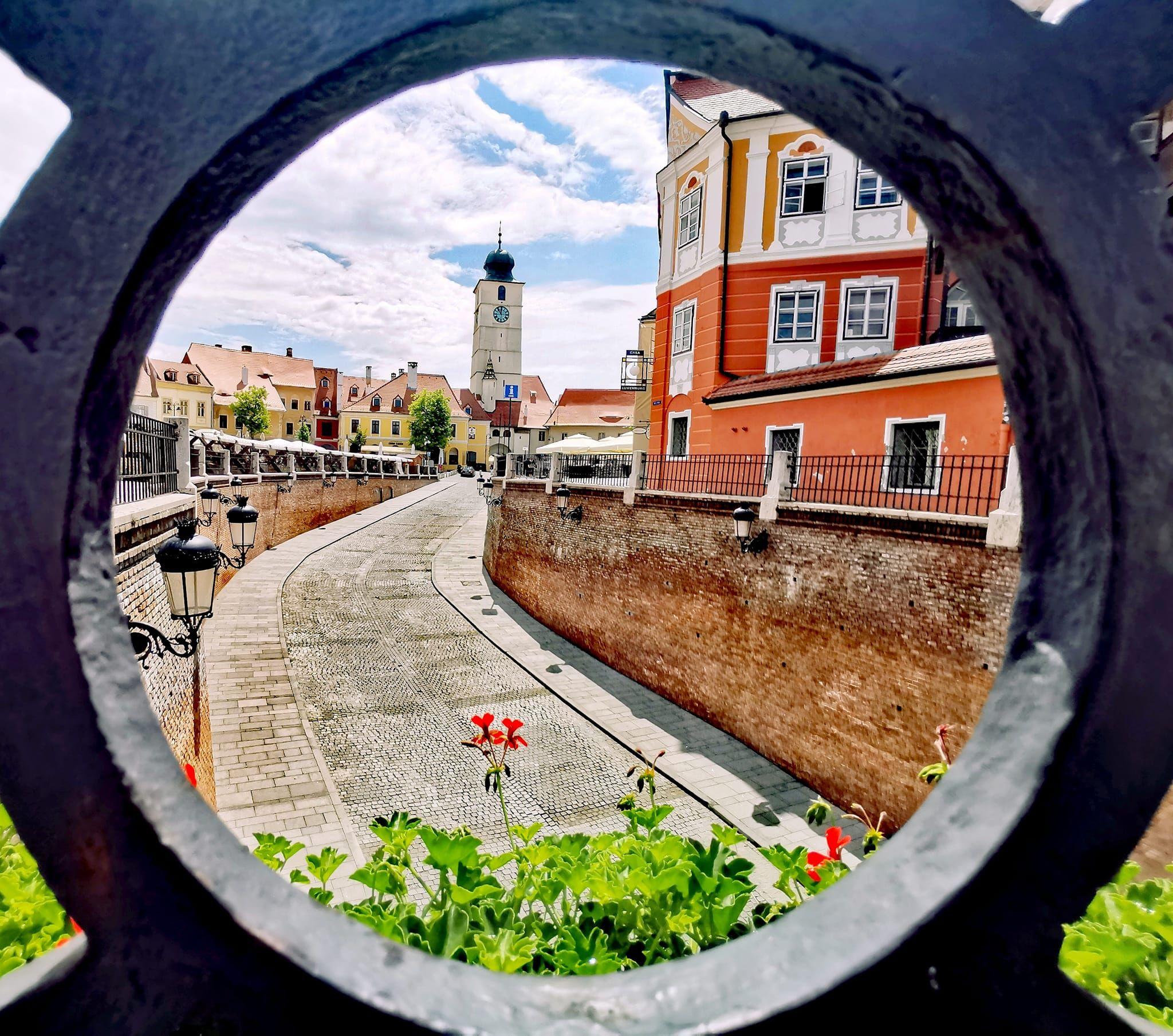
The popular tourist city of Sibiu Despite its very complicated political history, Romanians peacefully coexisted with Transylvanian Saxons, Hungarians, Jews, Slovaks, and many other minorities. So you can imagine the melting pot of cultures, traditions, and lifestyles you will see in cities, villages, and tourist attractions in the region.
And even though Romanians were always the most numerous - we never had political autonomy and independence during the Middle Ages time period. Our language, culture, and religion were not recognised - and even forbidden! - which is why Romanian churches played an important role in keeping our culture alive. There are a number of churches that were included in the UNESCO heritage sites in different areas of Transylvania - the painted churches in Bucovina, the wooden churches in Maramures, and the fortified churches in Saxon villages (southeastern part of the region).
All this lasted until the Great Union of 1918 was proclaimed in Alba Iulia when Transylvania united with the Kingdom of Romania (formed in 1859 when Wallachia and Moldova were united and later King Carol was put on the throne). This was our people's struggle and dream for at least 300 years!
So you see, there is much history behind all the castles, churches and cities you'll see. That's why authentic Romanian culture was best preserved in the rural villages where Romanians could be free and themselves, far from foreign controlling powers and wars, or city aristocracy and prohibitions.
And now, let's unfold our list of what to do in Transylvania:
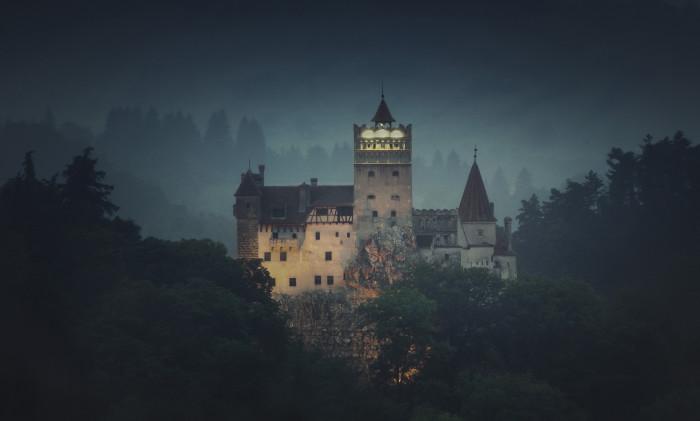
1. Bran Castle a.k.a. Dracula's Castle
Let's begin with Transylvania's most famous spot, Dracula Castle, known historically as Bran Castle. Despite its fictional associations, it's a real place and a medieval marvel, standing tall amidst the dramatic landscapes of Bran.
The castle became hugely popular thanks to Bram Stoker’s Dracula novel about a fictional character supposedly inspired by the Romanian prince Vlad the Impaler (or Vlad Tepes or Vlad Dracul), known for his cruelty. The 1992 classic Hollywood movie Dracula propelled it into mainstream fame and turned it into Romania's #1 tourist attraction.
- Local tip: The 'local' vampires are called vârcolaci which are similar to werewolves, and there are lots of stories and myths in Romanian folklore about them.
However, the connection between Dracula and Vlad Dracula , is purely fictional. Bram Stoker never visited Transylvania or Bran Castle and it's unlikely he knew about Vlad the Impaler who died in 1476 - almost 400 years before the novel was written! Google and Wikipedia didn't exist back then :)
- Local tip: The Dracula thing is a blessing and a curse for Romanian tourism - everything is Dracula-branded, from souvenirs, products (including wines and chocolate no Romanians buy!), and tours to attract naive tourists; they're all fake, cheap, and of low quality so watch out!
- Local tip: If you want to find the real residence of Vlad the Impaler, you need to get to Poenari Citadel , a site worth visiting for enthusiasts seeking authentic connections to the legendary figure.
Located in Bran, this is the most visited castle in Romania and is accessible on day trips from Brasov , Bucharest , and Sibiu .
Tickets cost 11 euros or $12. And if you want to avoid all the Dracula tourist traps and (false) stories around this sight - our guides will give you the real story behind this famous castle in Transylvania.
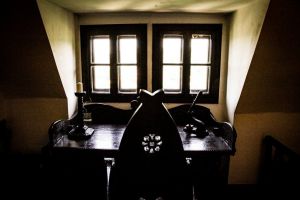
Bran Castle Tours
Perched on a mountain ridge in dramatic landscapes and woodlands at the base of the Bucegi Mountains, the badass looks and menacing towers will surely impress you. Built 700 years ago as a strategic fortress to defend the mountain crossing against invaders, the castle has a fascinating history of its own. Its rooms are simple because that's how they were in medieval times with narrow corridors and staircases.
Once overlooked, it gained new life in 1920 when donated to the Royal Family, becoming a beloved retreat for Queen Marie, who lavishly restored and decorated it. You can check some old pictures here to see what that looked like.
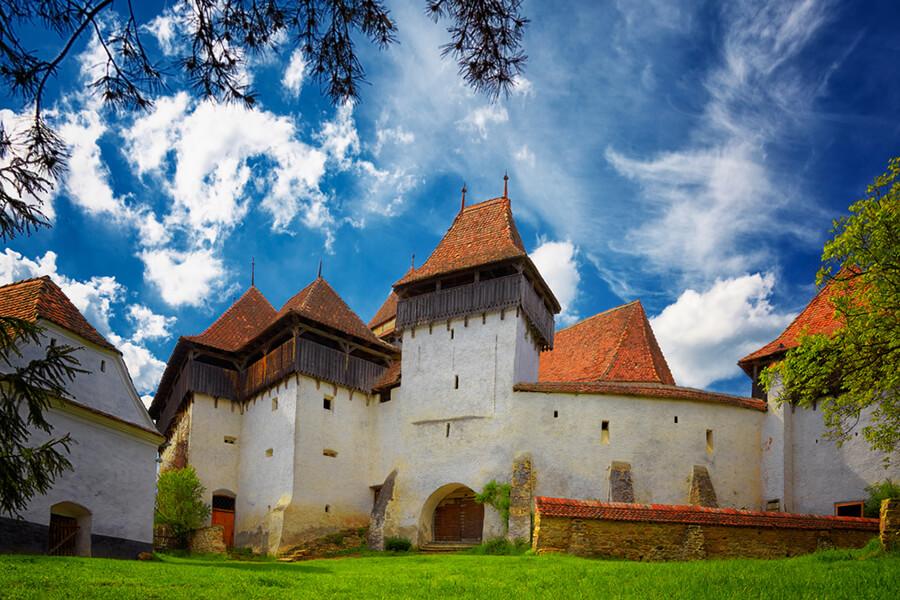
Viscri fortified church
There was a lot of migration going on in the Middle Ages. So in the 12th century, the king of Hungary who ruled the province of Transylvania invited Saxon Germans from Western Europe to colonise the area around Brasov - Sibiu - Sighisoara in exchange for land and benefits. With help from Teutonic Knights, they were tasked to build fortifications and defend the empire's borders against pagan invaders.
So that's why there are so many fortified villages, and small medieval towns surrounded by walls and castles in Transylvania. These well-preserved historic sites are a living testament to Transylvania's fascinating, plot-twisting history. In total, there are over 150 fortified attractions to visit, most of which are well-preserved, so tourists passionate about history will have a busy itinerary!
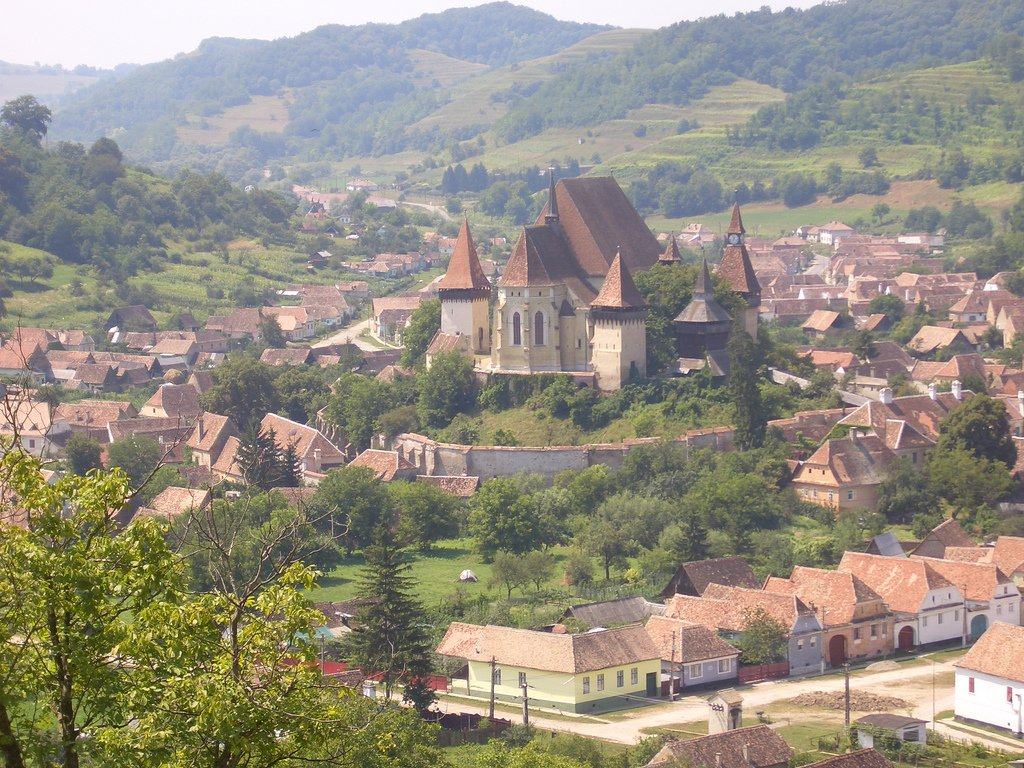
Biertan Fortified Church, another UNESCO World Heritage site
There is a group of seven villages with fortified churches out of the many Saxon villages in Transylvania - Viscri, Biertan, Prejmer, Saschiz, Darjiu, Valea Viilor, and Calnic - that are inscribed on the list of UNESCO World Heritage Sites. Of this group, the village of Viscri is the most popular thanks to the UK's King Charles who fell in love with the area and bought and restored a house to spend there his summer holidays.
Other beautiful villages in Transylvania you should consider visiting are Malancrav, Copsa Mare, Crit, Alma Vii, Cincsor, Richis, and Cisnadioara. In most of them, you'll find traditional houses that are restored and transformed into gorgeous, boutique guesthouses where locals love to escape the busy city life on a weekend break.
- Pro tip: Fortified churches don't have typical visiting hours, and they're still in service; without a guide, or very good local info, you won't be able to get in or know what you're looking at.
Besides being incredibly old, these medieval villages preserve our rural culture and ancestors’ way of life as if in a time bubble. You will literally make a trip 100 years back in time if you go visit them on a day trip or spend a couple of nights there.
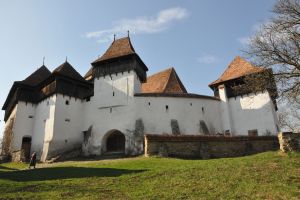
Transylvania Culture & History Day Trip: Viscri, Sighisoara & Rupea
Start from: Brasov
Sighisoara Citadel is one of the best-preserved citadels in Europe dating back to the 13th century where people still live! Since 1999, Sighisoara Citadel is on the UNESCO World Heritage list. With its cobblestone streets and colourful houses, this is an accessible and must-see attraction in Transylvania. Perched atop a hill overlooking the picturesque countryside, the citadel exudes medieval charm at every turn. Its well-preserved fortifications and architectural wonders, including the iconic 14th century Clock Tower (that you can climb to the top for panoramic views), offer visitors a glimpse into the region's rich history.
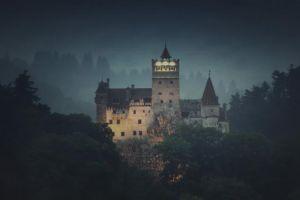
Castles, Fortresses & Historic Tours
You can wander through the citadel's narrow streets lined with artisan shops to get a better feel of the local culture and then stop at one of Sighisoara's many excellent restaurants to try traditional Romanian food.
Also, don't miss the Covered Starway and the enchanting *Church Hill*, home to a historic church and a tranquil cemetery dating back centuries.
A stunning castle in Transylvania
In our opinion, this is the best castle in Transylvania even though it can't compete with Bran Castle's popularity! Corvin Castle, also known as Hunyadi Castle is a splendid gothic-meets-renaissance historic tourist attraction with an authentic medieval feeling.
Built in the 15th century as a fortified residence for a regional ruling dynasty, there is much history to be learned and seen here - and on a different plot line than at Bran. There are also some legends about the family’s seal and symbol of the castle - a raven, Corvus in Latin, with a golden ring in his beak.
- Local tip: We think Corvin Castle is the best castle in Romania! It's more authentic and has a fascinating history compared to any ‘Dracula’ fantasies you’ll ever hear at Bran Castle - so we highly recommend you put this stunning castle on your list of things to do on your vacation in Transylvania!
With well-preserved crenels, towers, and meeting halls, including original stained-glass windows depicting Iancu de Hunedoara, the ruling prince of this impressive sight. Corvin Castle is one of the best attractions in the region even if it's not the most famous castle in Transylvania.
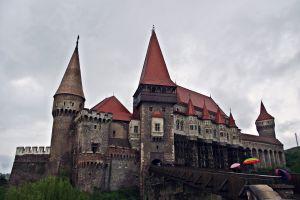
Corvin (Hunyadi) Castle Tours
- Fun fact: Contrary to the reputation and looks of most Gothic Castles, Huffington Post considered it as one of the ten most fairytale-like constructions of this kind in the world!
Corvin Castle is in the city of Hunedoara and can be seen on day trips from the cosmopolitan cities of Sibiu and Timisoara but also from Cluj-Napoca .
Although the castle has been growing in popularity considerably over recent years, getting there using public transport is quite a hassle so a car or a guided tour would be your best option. Ticket costs 8 Euro or $9.
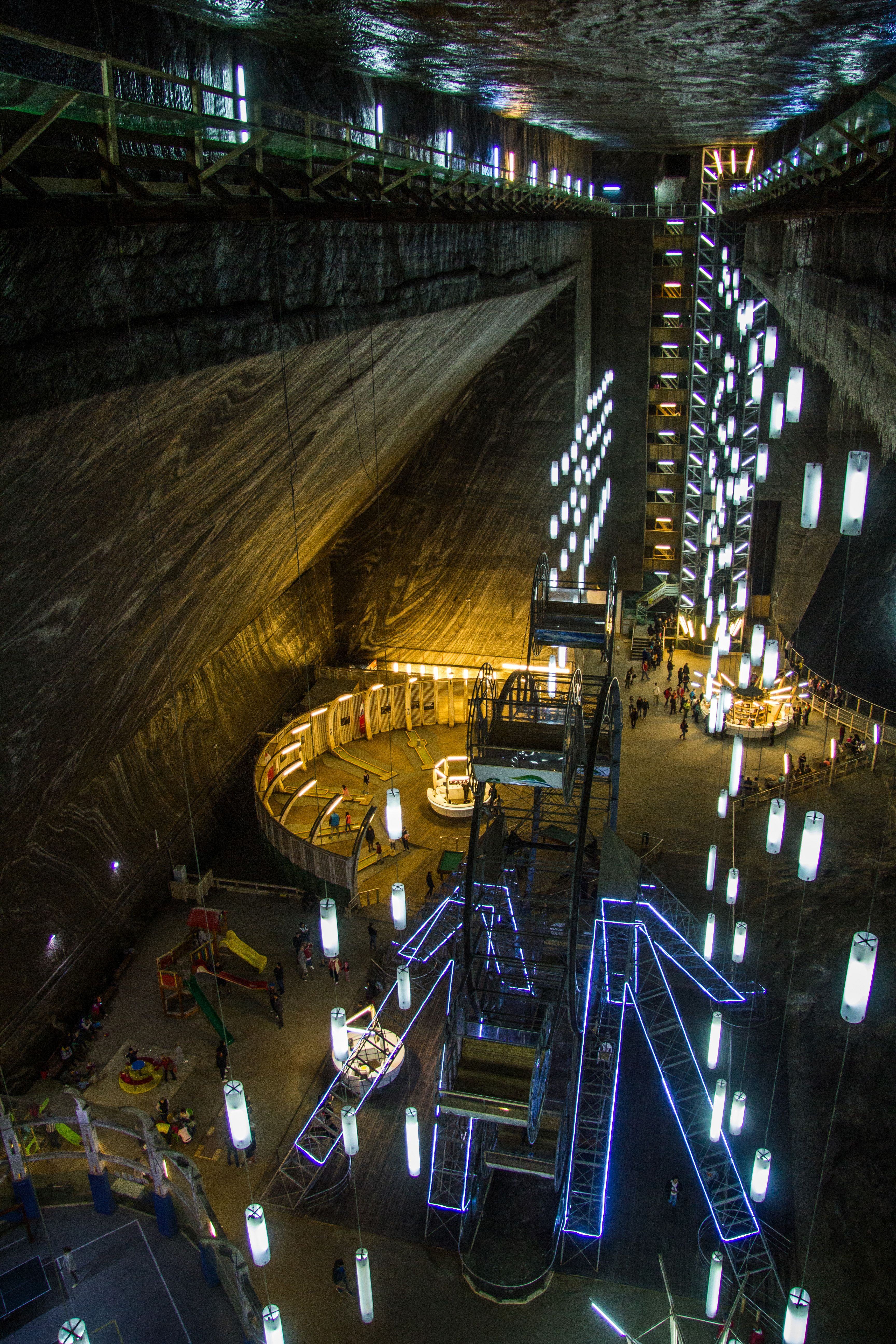
If you're looking for a unique place in Transylvania then Turda Salt Mine should be on your list. The difference between salt mines and all other mines is that breathing salty air is good for your lungs.
This is a good place for people with respiratory problems such as asthma and doctors often recommend ‘salt therapies’ aka sitting and breathing the air. There’s even evidence the Romans spent time in salt mines 2,000 years ago for the same reason!
Since 2008, with the help of cleverly designed lighting installations, the abandoned Turda Salt Mine has become one of Romania's top attractions. With stunning views of the underground, visitors will discover huge grottos and many galleries to go for a walk while detoxing their lungs.
Besides walking and sitting, Turda Salt Mine literally has an amusement park to keep people busy. You can ride an underground Ferris wheel or go on a boat ride on an underground lake. Wait... what?
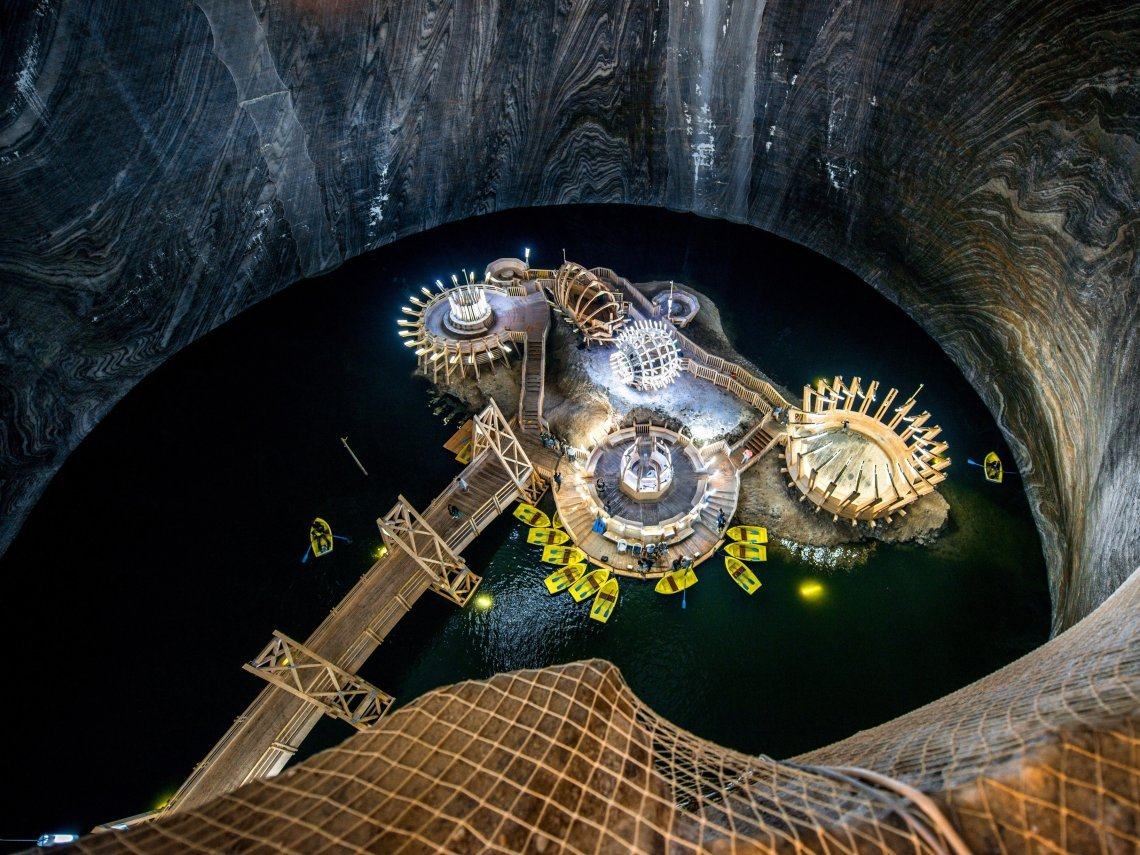
Turda Salt Mine is one of Transylvania's best attractions
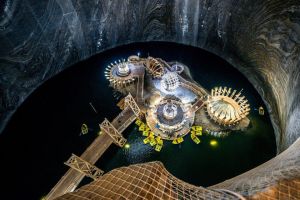
Turda Salt Mine Tours
Yup - going to a salt mine in Romania is like going to the park on a chilly day. It's a great place to spend time reading, socialising, playing all sorts of games or just walking around. No cellular reception - and you're not allowed any food or drinks other than water to avoid air contamination. The idea is to spend at least 2 hours inside and for this reason, salt mines in Romania are usually set up as small amusement parks.
And Turda Salt Mine does a great job at that. I personally like to take mindful walks through its galleries and admire the beautiful patterns on the walls. It's easy to visit on a day trip from Cluj-Napoca or Sibiu . Entrance ticket costs 10 Euro / $11 and be sure to bring a jacket or something to keep you warm.
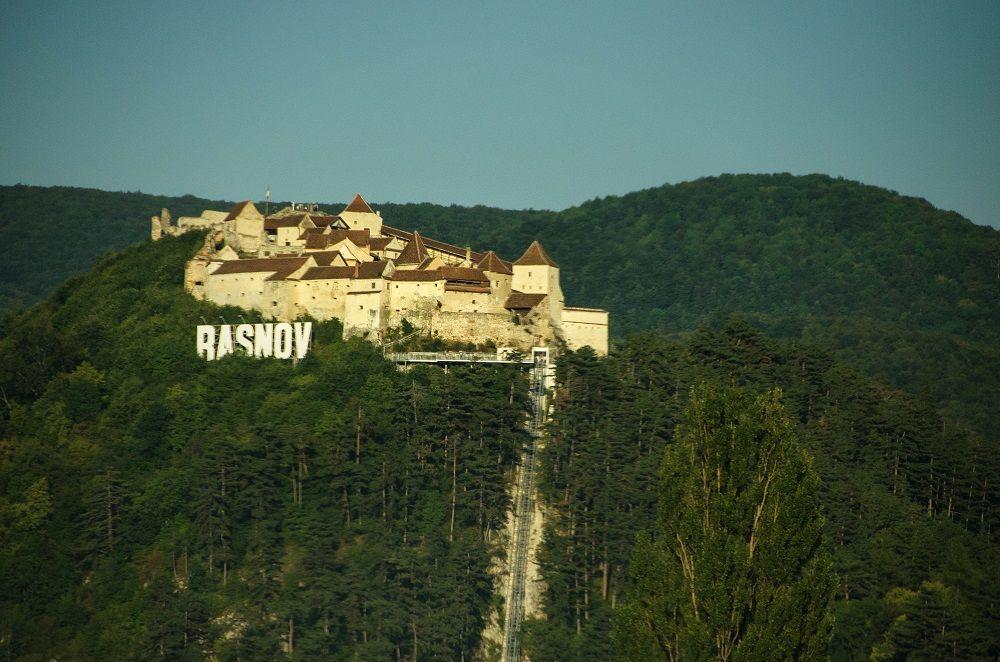
Transylvania's beautiful Rasnov Fortress, built on a rocky hill, is a testament to the region's strategic significance and rich history. It was built in the 13th century by the Teutonic Knights, then owned mostly by the Saxons, who expanded and fortified it, especially around the 17th century. This impressive medieval fortress served as a vital defensive stronghold during a tumultuous era marked by conflicts between the Ottoman, Habsburg, and Hungarian empires.
Today, Rasnov Fortress stands as one of Transylvania's most iconic attractions, drawing visitors from around the world to marvel at its imposing walls, picturesque surroundings, and rich historical significance.
Because it's in the Brasov area, Rasnov Fortress is a great day trip idea and can be visited on the same day as another close-by attraction - Bran Castle.
- Pro tip: If you're visiting Romania with kids , in the close proximity of Rasnov Fortress you can find Dino Park, which is an open-air museum with full-size and realistic dinosaurs.
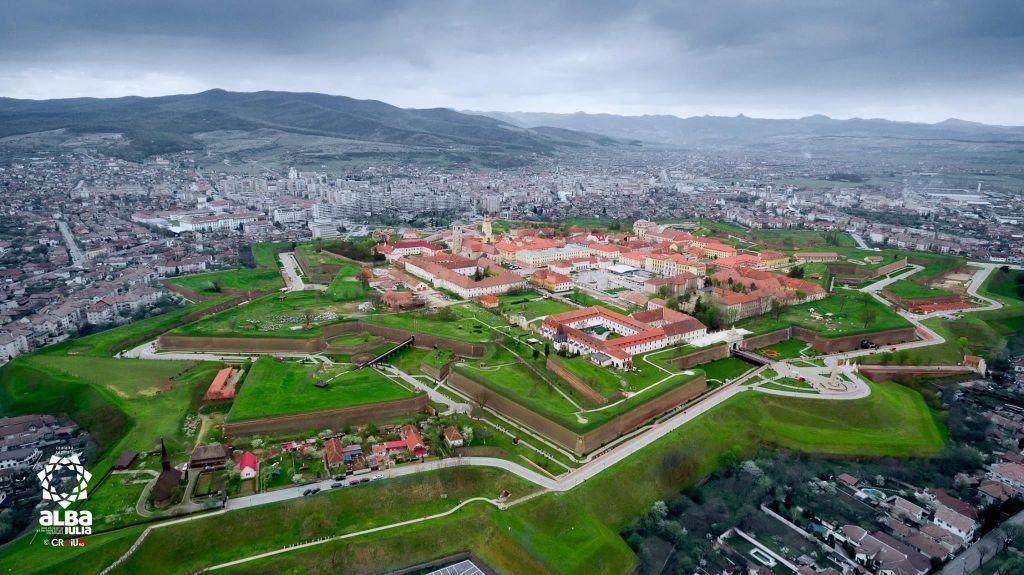
7. Visit Romania's spiritual capital: Alba Iulia Citadel
Alba Iulia Citadel in the small town of Alba Iulia, is considered the spiritual birthplace of modern Romania. Within its walls, the 1918 Great Union was proclaimed unifying the principality of Transylvania with the rest of Romania (Wallachia and Moldova) after WWI.
A few years after this pivotal event in Romanian history, King Ferdinand and Queen Marie had their coronation ceremony at Alba Iulia Cathedral within the Citadel Walls. They became the first king and queen of Greater Romania, something Romanians have been dreaming of for a very long time!
That's why Alba Iulia is considered Romania's spiritual capital and why on 1 December (National Day) the celebrations here are impressive.

Cluj Top Attractions: Turda Salt Mine, Alba Iulia Citadel & Rimetea Village
Start from: Cluj-Napoca (pick-up)
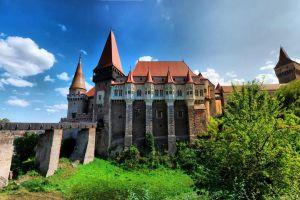
Sibiu Day Trip to Corvin (Hunyadi) Castle & Alba Iulia Citadel
Start from: Sibiu
The citadel itself has a rich history too! Built in the early 1700s on the remnants of a Roman castrum it served as a strategic fortification and centre of power in the heart of Transylvania. Today, Alba Iulia Citadel is a gorgeous and restored historical sight in Transylvania that breathes history through its many buildings and cobblestone alleys.
It regularly hosts outdoor activities, events, and fairs, and every day at 12:00 there's a changing of the guard ceremony. Consider visiting Alba Iulia Citadel on a day trip from Cluj-Napoca or Sibiu . Both Transylvanian cities are close to Alba Iulia and it only takes about 1,5h by car from any of the two locations.
The best driving road in the world!
Have a quick look at our video - this popular tourist attraction in Transylvania needs no other introduction! It was named by Top Gear's Jeremy Clarkson as the best driving road in the world for good reason: every twist and turn only gets you more beautiful views than before! Built during communist times for military purposes, it's also known as Ceausescu's folly due to the huge resources spent to build it.
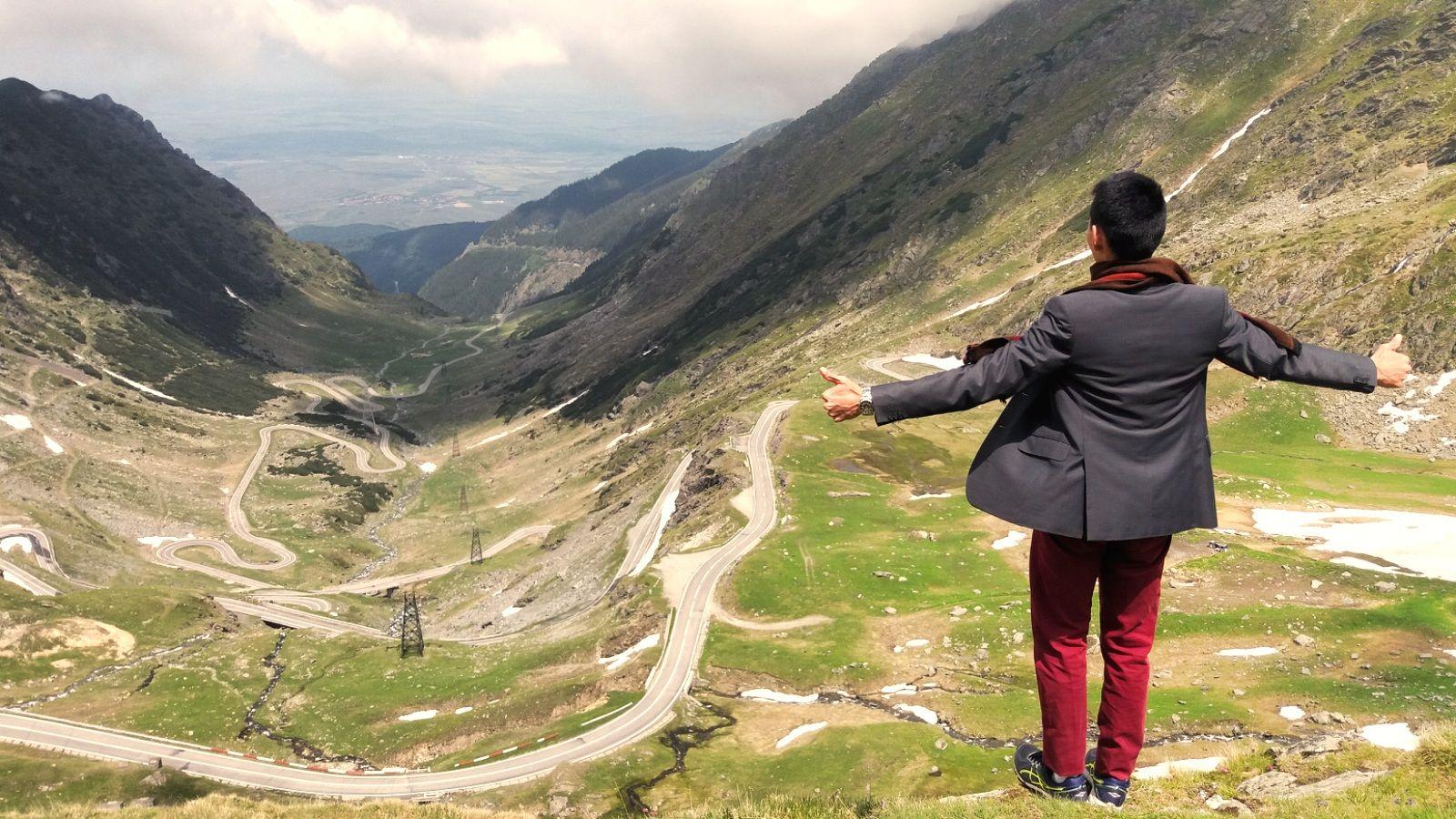
Reaching 2,042m at its highest point, this is the main road crossing the mighty Fagaras Mountains from Cartisoara to Curtea de Arges (DN 7C). These are the highest, most beautiful, and wildest mountains in our country and a favorite destination for nature lovers who want to go hiking in Transylvania .
As you go on the road trip, you'll see their impressive ridges and peaks, and when at the top you'll be rewarded with the most breathtaking views of Transylvania's vast plains between mountain ridges!
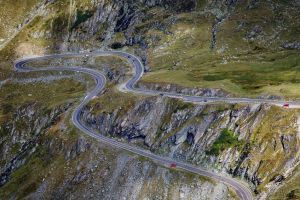
Transfagarasan Road Tours
- Local tip: Due to snow, the road is open for driving only 1 July - 30 Oct so that's the best time to visit if you want the driving experience or if you're planning to visit from Bucharest.
Outside this period, Transfagarasan Road can be seen from above! Coming only from Brasov or Sibiu and driving partially on the road and then taking a cable car across the closed section all the way to the top of the road at Balea Lake, a mesmerising glacial lake. Once there, you can go on a short walk above it to get the best view of the area or on longer hiking trips in the Fagaras Mountains. So visiting this place is one of the top things to do in Transylvania.
- Local tip: If you enjoy breathtaking scenery and winding roads, then you'll love Transalpina Road also known as King Carol Road. West of Sibiu, this is the highest road in Romania reaching an altitude of la 2.145m. It crosses the Parang Mountains from Sebes to Novaci (DN 67C). It has even more restrictions than the Transfagarasan Road but is equally breathtaking.
Each tourist city in Transylvania has its unique personality, vibe, and reputation. If you ask locals, they're all very different!
Here are the main medieval cities you should consider visiting (on each link you'll find our selection of tours and the local city guide):
- the hip, bustling, IT and student town of Cluj-Napoca the largest city in the region and second largest in the country, the unofficial capital of Transylvania
- multicultural and artsy Sibiu with its bohemian Old Town made up of Piata Mare (Big Square) and Piata Mica (Small Square), and the best Christmas market when winter in Romania comes
- medieval, laid-back Brasov with its Black Church, the largest Gothic Church in South-East Europe towering over the main square Piata Sfatului (Old Town) and its many well-preserved defensive walls and seven bastions (most of which have small museums inside). If you're interested in visit Brasov , check out our complete city guide.
- the little town of Sighisoara in the heart of Romania with its famous Sighisoara Citadel that's like a small museum for medieval times and the impressive Clock Tower dating from 1350
- the less-popular small towns of Medias, Sebes, Bistrita and even Targu Mures shouldn't be overlooked as they're also representative of Saxon heritage with their medieval architecture, large town squares, and small museums
These medieval cities are the reason why in German Transylvania was called Siebenburgen translated as 'the seven citadels' Bistriţa (Bistritz), Braşov (Kronstadt), Cluj (Klausenburg), Mediaş (Mediasch), Sebes (Mühlbach), Sibiu (Hermannstadt) and Sighişoara (Schassburg).
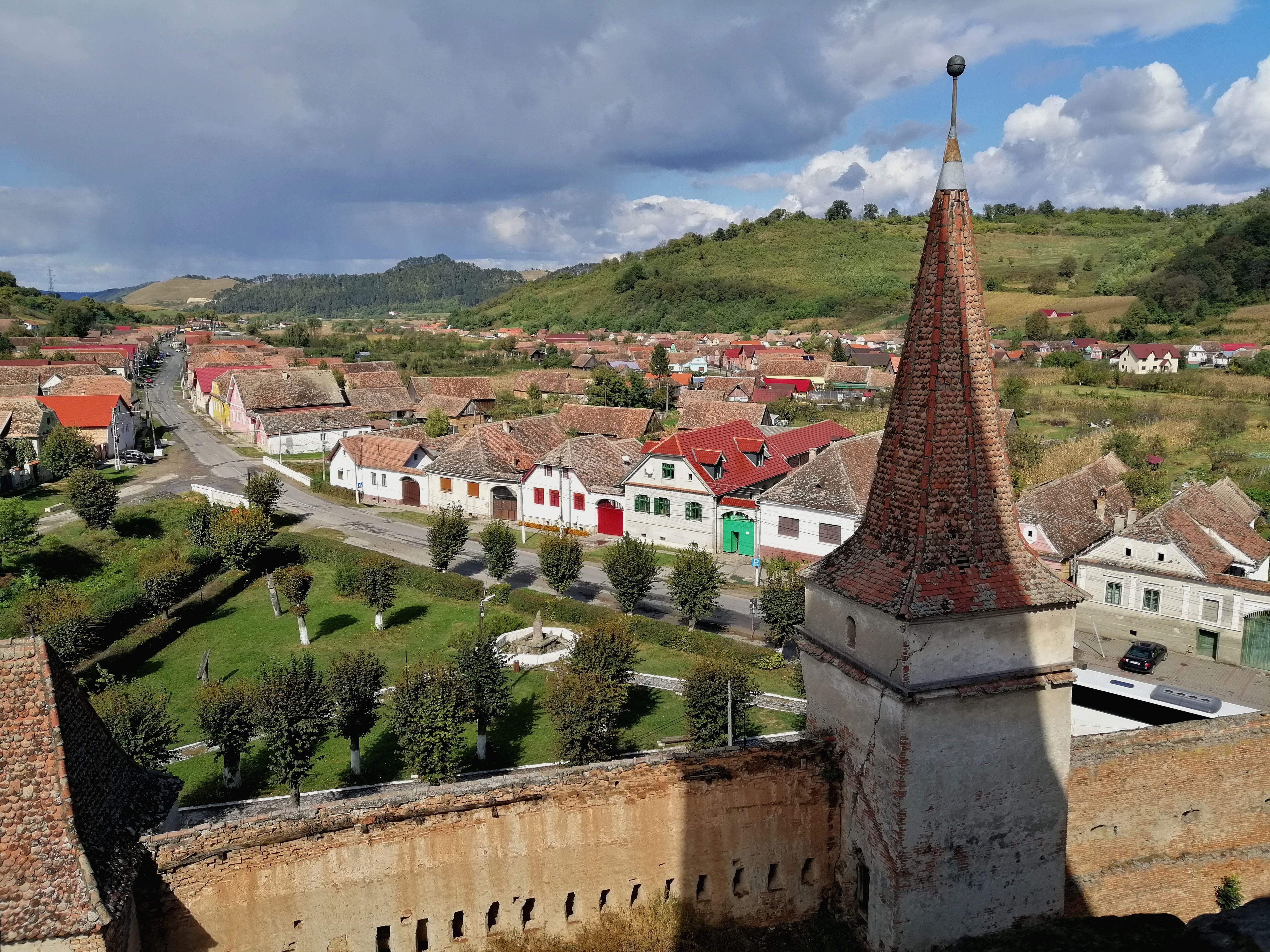
A typical village Saxon village Transylvania
But Transylvania’s true beauty lies in its famous countryside and rural areas, in traditional villages where the simple way of life of locals, their sense of community, and hospitality will capture your soul instantly. Add to the mix picturesque landscapes and quiet village life you've got yourself a perfect holiday in Romania to disconnect and wind down far from the business of city life.
There are lots of day trips or trips where you can experience this. You can go by car to visit villages, or on hiking trips from village to village, photo tours, horse riding, agro-tourism experiences -- you name it! Although without a guide who knows the area and locals, it will be harder to have the experience you want. Check our suggestions below - or contact us if you'd like a private custom tour .
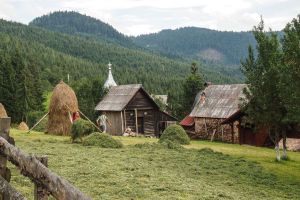
2 Day Hiking in Apuseni Natural Park: Culture & Local Life
Start from: Cluj-Napoca or Sibiu
There are lots of bike paths connecting the Saxon villages of Transylvania and this is a great way to explore the area!
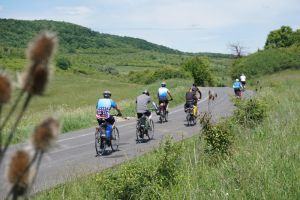
2-Day Transylvania Bike Trails Tour: Viscri & Saxon Villages
Or perhaps you'd like to stay in a traditional farm turned modern guesthouse and have an agro-tourism experience?
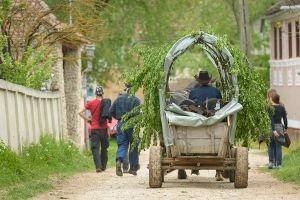
2-days of Agro-Tourism in Transylvania at a Local Farm
Start from: Cobor or Brasov
Besides Saxon Transylvania, the greater region also includes the traditional sub-regions of Maramures, Bucovina and Motilor Land in Apuseni Mountains which will give you the most authentic experience of Romanian culture and countryside you can find in our country.
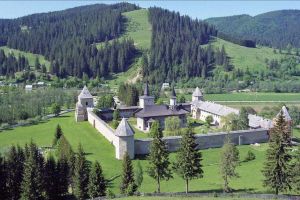
5-Day Complete Tour of Traditional Maramures & Bucovina
For example, in Maramures centuries old Romanian traditions and customs are still part of everyday life. You'll see wood-carved decorations everywhere and locals who wear their best traditional folk costumes on Sundays to go to church (the Romanian traditional blouse called ie by the way).
Besides the delicious food (all with home-grown ingredients!), there are some interesting things to do in Maramures such as visiting the Ethnographic Museum, the Merry Cemetery of Sapanta or the famous UNESCO Wooden Churches . Going on a ride on the Mocanita Steam Train is a favorite too! To visit this region, another must see sight of Transylvania, it's best to start from Cluj-Napoca and have min. 2-3 days.
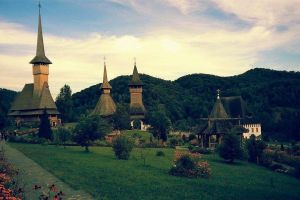
2 or 3 Days in Maramures: Wooden Churches, Traditions & Village Life
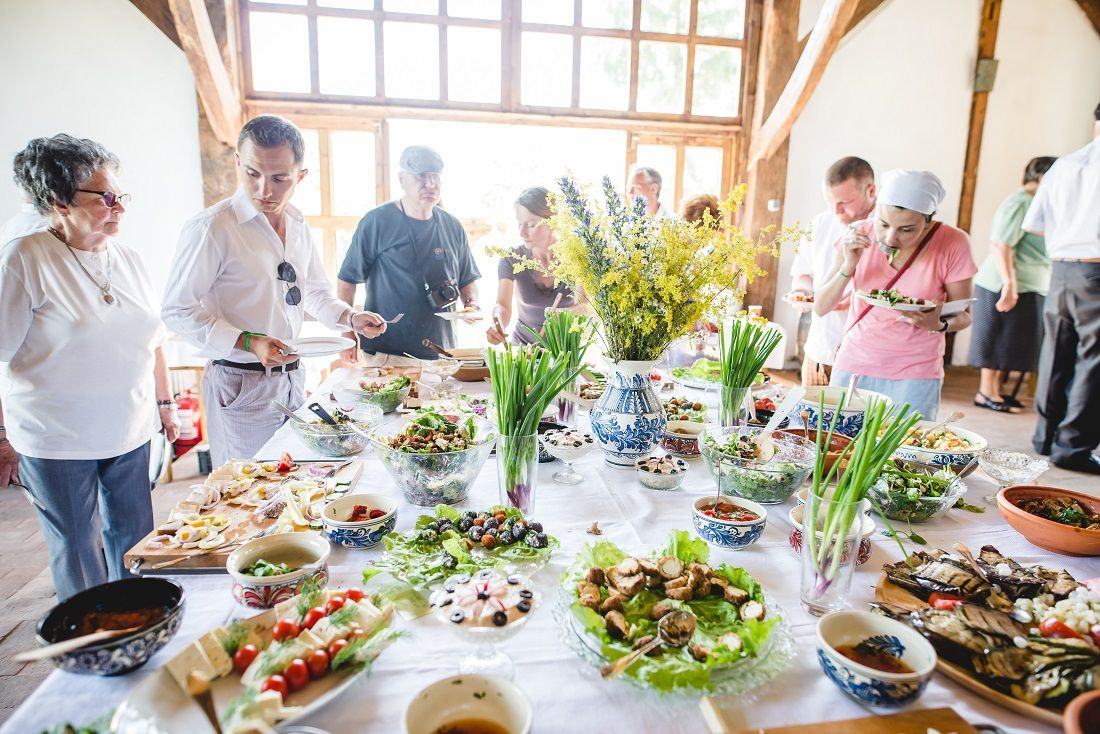
The whole region is naturally blessed with fertile lands and sun-bathed hills. With its mix of cultures and rural traditions of farming and self-sustainability, Transylvania has a reputation for its delicious food and wines. Much of Romanian traditional food and products come from the region and they're famous and preferred even by locals.
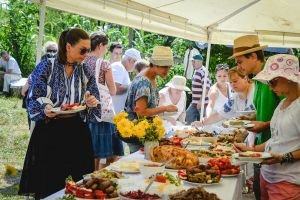
Food & Wine Tours
The region of Sibiu is particularly famous for its products (cheese, fresh sour cream, cured meats, salami, and jams) and typical dishes, which is why it was awarded the European Region of Gastronomy title in 2019.
In the city as well as on day trips to tourist villages nearby (called Marginimea Sibiului) you'll find lots of small, old-school food producers, or hip restaurants with young chefs who reinterpret traditional dishes with a modern twist.
For years, locals have had a clear preference for homemade, organic produce from small, local producers - which makes food in the region truly delicious! Sibiu has several restaurants known for this (check our Sibiu attractions guide for more) and on day trips our guides will take you to family households and small guesthouses where locals will cook for you!
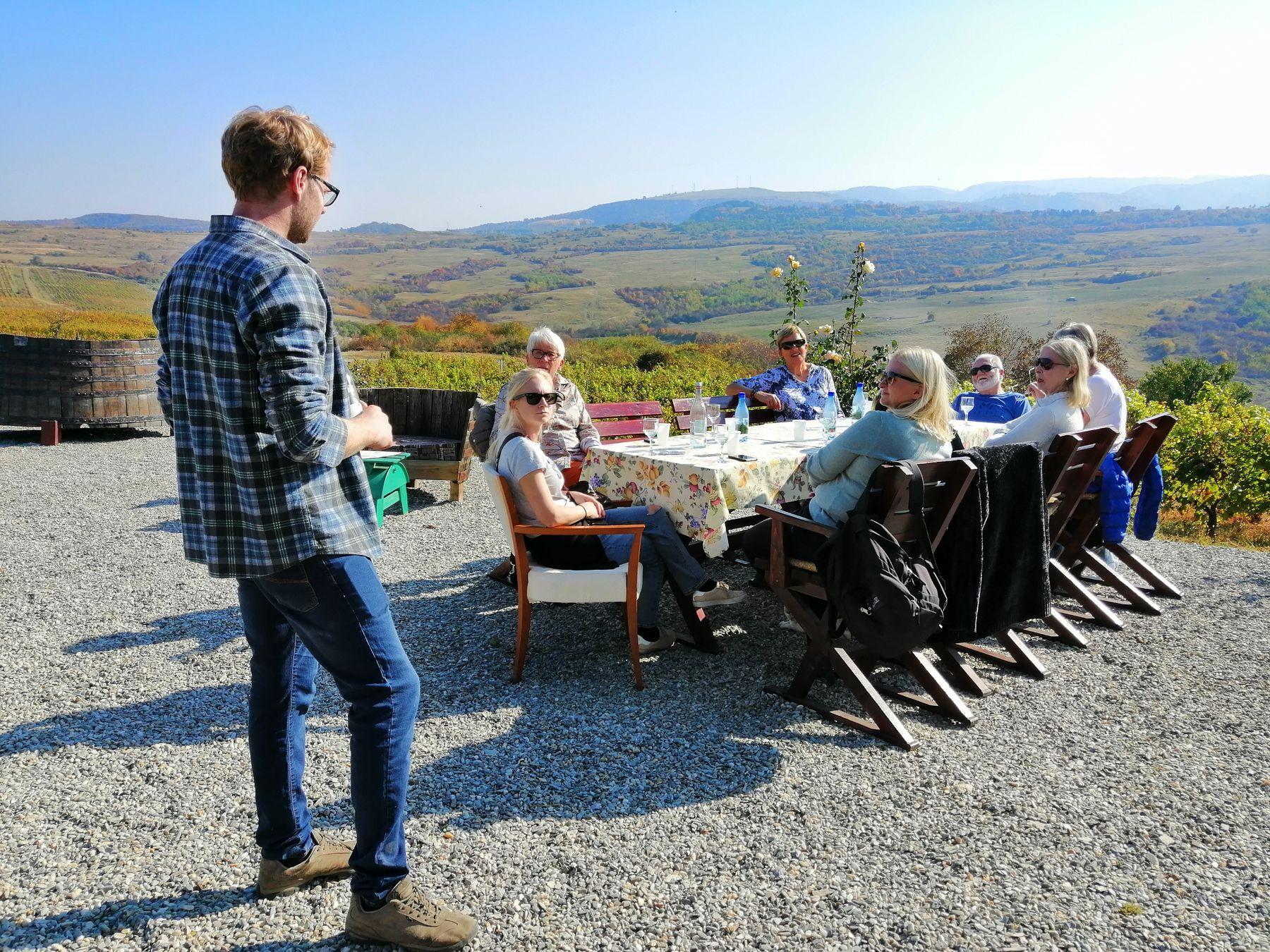
A wine tasting trip in Transylvania Even 2,000 years ago Transylvania's wines were famous among the Dacians, Romans, and migrating people. There are lots of wineries in central Transylvania perfect for vineyards! From old-school, large-scale wineries to boutique, specialised producers, in the last 10 years the quality and popularity of Romanian wines have increased significantly - and so has wine tourism!
- Local tip: Unfortunately most wineries don't offer 'walk-in' tastings for 2 people, but we can arrange that for you on a custom tour . But you can also order a glass of Romanian wine in any restaurant or bar - we're sure it will surprise you!
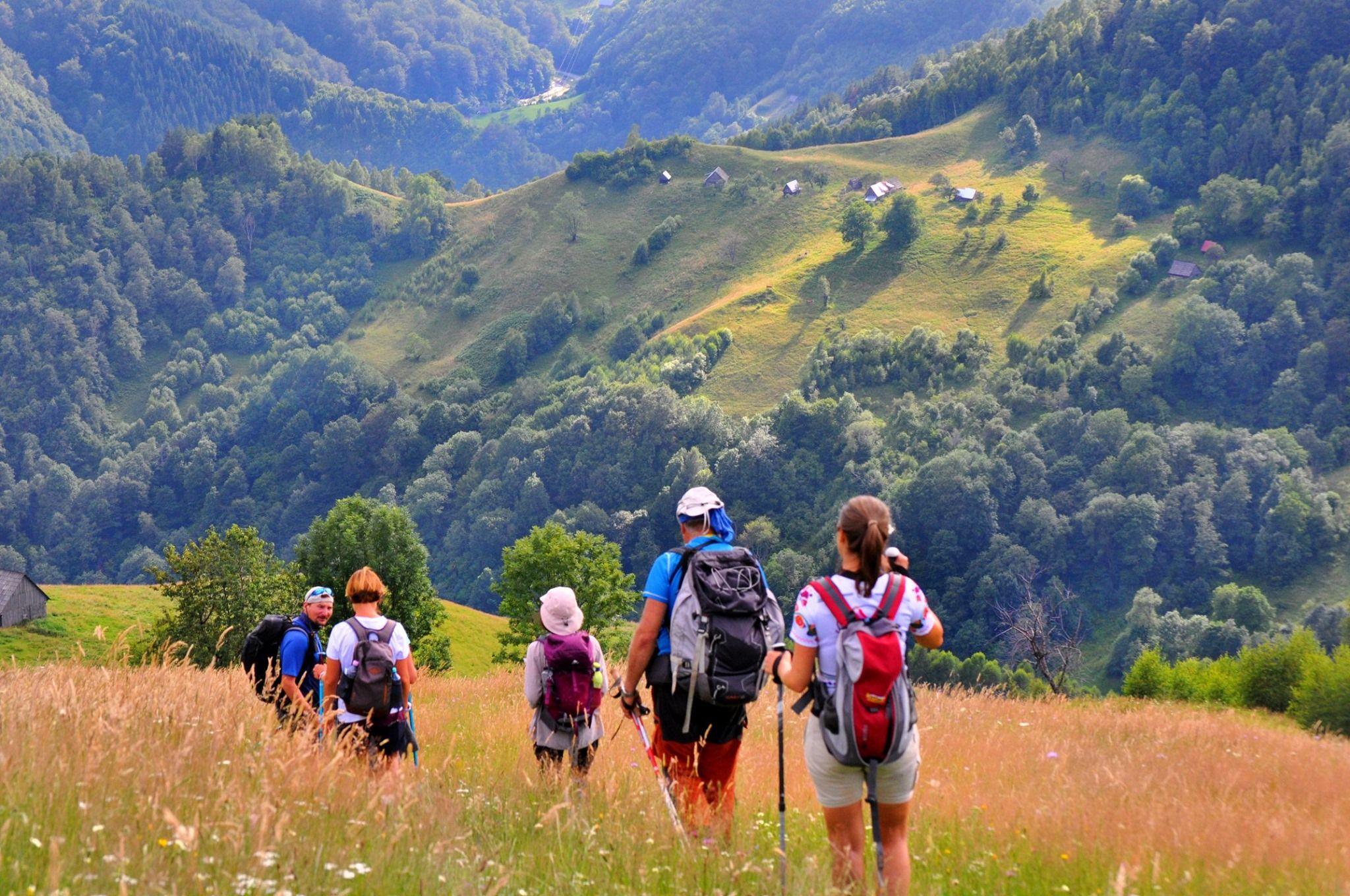
The entire region exists because of the natural border the Carpathian Mountains form around it! Read our full guide on hiking in Romania to find out the huge - and undiscovered - outdoor potential of our country.
In short, there are mountains and trails for EVERYONE no matter your physical condition or how much time you want to spend in the mountains. So exploring Transylvania's beautiful outdoors and unique natural landscapes is one of our most recommended things to do on your holiday here!
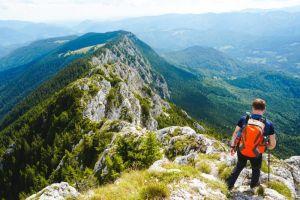
Hiking & Trekking Trips
Brasov, Sibiu, and Cluj-Napoca are the best starting points to go on hiking day trips or multi-day tours in the Carpathian Mountains. The best time for hiking in Transylvania is between May - October, although outside of this is also possible with the right gear and experience.
- Pro tip: In the winter months, you can trade hiking trails for ski slopes. We have an article ready if you want to check the best ski resorts in Romania .
The best part? On a guided trip our guides can take you through picturesque foothills with traditional villages (600 - 1,200m) to medium mountains (Apuseni Mountains or Piatra Craiului) or the high peaks (over 2,200m) in Fagaras or Bucegi. It all depends on your interests!
Famous natural attractions you should see:
- Zarnesti Gorges and the the Seven Stairs Canyon close to Brasov
- the impressive Turda Gorges , White Cliffs, Scarisoara Ice Cave or the steep hill Szekler's Stone close to Cluj-Napoca
- Balea glacial lake (NOT for dipping!) and Red Lake.
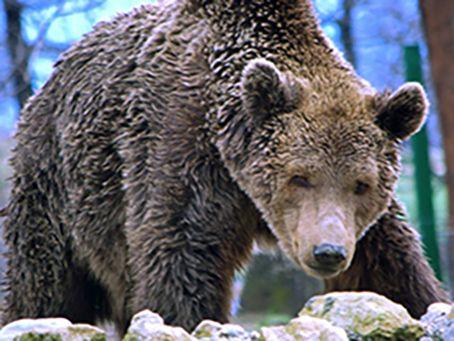
In the natural beauty and pristine wilderness of Transylvania, wildlife thrives in its natural habitat, offering enthusiasts unparalleled opportunities to observe animals that are almost extinct in other parts of Europe. Romania is known as Europe's last wilderness reserve thanks to its vast and untouched Carpathian Mountains that provide a haven for a diverse array of wildlife, including brown bears, wolves, lynxes, and wild boars.
Around the area of Piatra Craiului National Park, you have the best conditions to hike through wild forests, stay in animal observatories (and watch them safely), or check wildlife observation cameras for recent sightings in the area.
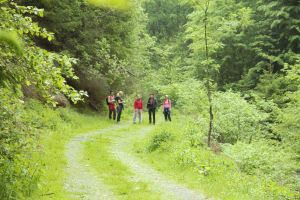
Hiking & Wildlife Tracking Trip in the Carpathians
Start from: Rucar, Arges county or Brasov
Also, with the Carpathians boasting one of Europe's largest populations of brown bears, organized bear-watching tours offer an immersive experience for nature lovers.
While these majestic creatures can be found in many Carpathian mountain ranges, you can join bear-watching safaris in the area near Brasov. These tours promote conservation efforts and responsible wildlife viewing practices, ensuring the preservation of Transylvania's rich biodiversity for generations to come.
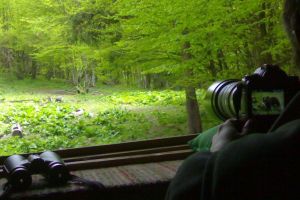
Short Bear Watching Experience from Brasov
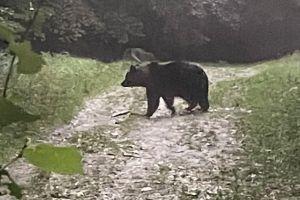

Bear Watching Safari in the Wild
- Pro tip: While these tours usually run from spring to autumn, the summer months are when the animals are the most active and you have the most chances to see them roaming around.
The combination of Transylvania's multiculturalism, heritage buildings, picturesque countryside, and sustainable, ancestral way of life attracted many locals tired of the big cities and looking to create a different life.
From 2008 onwards a trend started where many traditional houses in villages, old boyar estates, or bourgeois manors were bought by corporate city folk looking to escape busy life. These were restored and transformed into boutique, luxury guesthouses for tourists.
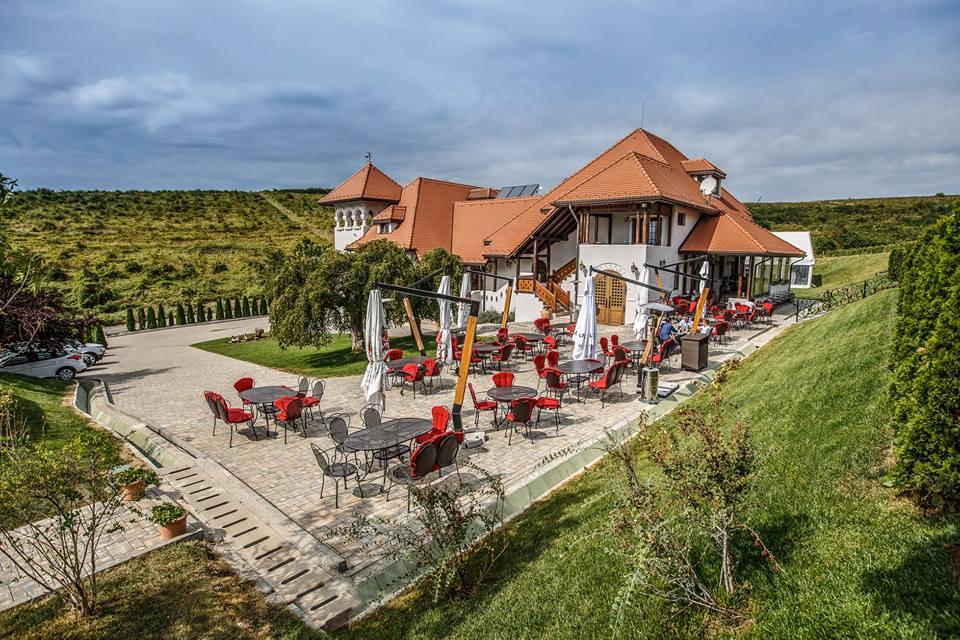
Offering premium accommodation services, locally sourced organic foods, amazing views, and a beautiful example of how rural life can blend with modern needs, these guesthouses are so beautiful and popular that they're in high demand all year long!
Check here for some inspiration and you can find most of them on Booking.com or Airbnb. However, most of them are in remote areas accessible only by car and are on the expensive side. Nevertheless, spending one or two nights there will be a unique memory from your holiday in Transylvania!
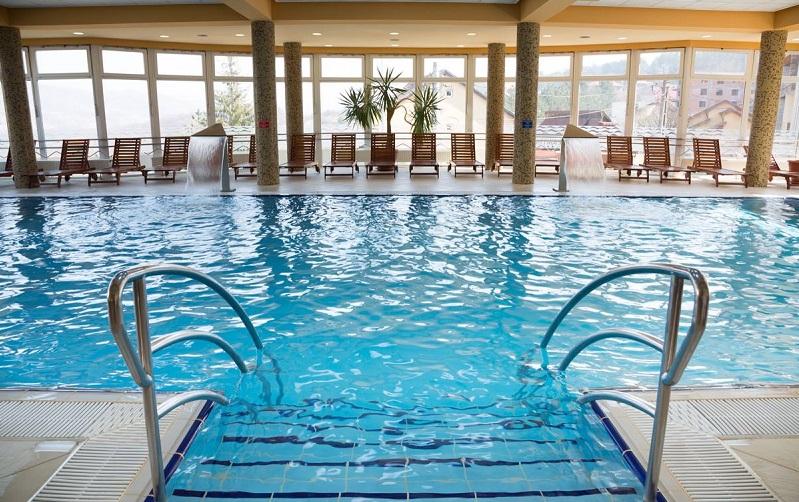
14. Relax in one of Transylvania's many thermal baths and spa resorts
Transylvania boasts an array of spa resorts and thermal springs renowned for their therapeutic properties, offering visitors a tranquil escape from the bustle of everyday life. Whether nestled within historic towns or tucked away in picturesque countryside settings, these spas invite guests to indulge in soothing mineral-rich waters, renowned for their healing benefits.
My favorite location for relaxation is Geoagiu-Băi Resort, a place that combines historic sites with modern wellness facilities. Located in the southeast part of the Apuseni Mountains, in the proximity of Orastie and Deva cities, you will find pools with natural thermal water, good for rheumatic, neurological, and cardiovascular disorders, skin conditions, and more. Near the resort, you can visit the ancient ruins of *"Germisara" Roman Thermal Baths*, a place used since the times of Dacians, but modernized by the Romans. This amazing site is not officially included in the local tourist circuit, so unfortunately, the authorities don't do a good job maintaining it, but on the bright side, at the moment there is no entrance fee to visit.
Other thermal baths and spa resorts worth visiting are Baile Felix (near Oradea), Baile Tusnad and Baile Balvanyos (near Tusnad), and Baile Cojocna (near Cluj-Napoca).
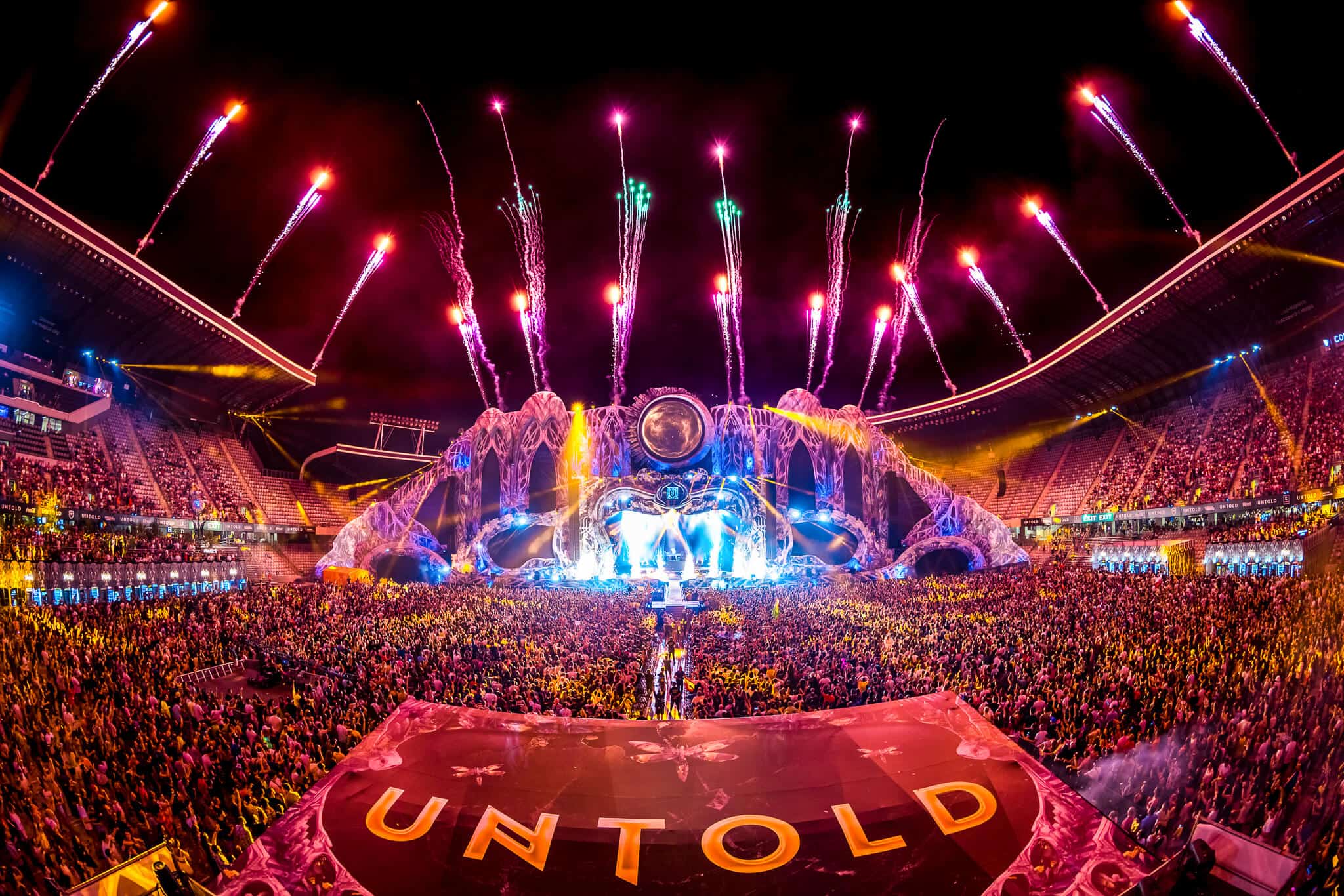
Transylvania is not only known for its stunning landscapes and rich history but also for its vibrant cultural scene, which comes to life through various events and festivals held throughout the year. One of the highlights for music enthusiasts is the Untold Festival, one of the world's largest electronic music festivals, held annually in Cluj-Napoca. Other notable music events are the Electric Castle Festival (near Cluj-Napoca), ARTmania Festival (Sibiu), Rockstadt Extreme Fest (Rasnov), and Jazz in the Park (Cluj-Napoca).
Beyond music festivals, Transylvania hosts a myriad of cultural events celebrating its heritage, including traditional folk festivals, medieval fairs, and theatrical performances. Some examples include International Theatre Festival (Sibiu), Sighisoara Medieval Festival (Sighisoara), Transilvania International Film Festival (Cluj-Napoca).
For more music festivals and events in Romania , check out our article.
And since we're talking about events, if you happen to visit Transylvania around the winter holidays, you can check out our beautiful Christmas markets, where you'll see artisan products, traditional food, folk costumes, concerts, and much more. The most beautiful Christmas markets in Transylvania are in Sibiu and Brasov. ***
Seriously underrated, Transylvania is many times included in renowned travel guides such as Lonely Planet or Conde Nast.
But I hope you see how the best things to do in Transylvania are not just simple tourist attractions to tick off your list like most foreign bloggers and travel guides tell you...
It's about discovering how a unique mix of cultures is kept alive, about experiencing rural life, admiring nature and relaxing. It's about using slow travel to get to the heart of Romanian culture and history.
It's about being present on your holiday - not just rushing from one famous castle to another top sight....
I hope this article gave you a taste of what to do in Transylvania and help you plan your visit here - and if you have any questions contact us , we're here to help!
Your Romanian Friend
Check our tours
- By category

Local insights from Romania
4 times a year we prepare a newsletter with local stories, places and our special insights about Romanian culture and local life that will inspire you to visit our country and have an authentic local experience. Would you like to get it?
#romanianfriend
Visit Transylvania: Wilderness and Medieval History in the Heart of Romania
Home » Facts about Romania » Regions of Romania » Visit Transylvania: Wilderness and Medieval History in the Heart of Romania
Visit Transylvania with one of our private tours
‘The land beyond the forests’ is the best-known vacation destination in Romania, and you will probably find it difficult to choose only a few places to visit in Transylvania. The magic of its traditional villages enchanted Prince Charles and many travelers who became travel ambassadors of authentic Transylvania, while its labyrinth of history, old cities, and terrific nature create countless options for your travels.
Viscri Fortified Church
A short history of Transylvania
Transylvania has an eventful history. Inhabited by the Dacians, ancient Transylvania was conquered by the Roman Empire nearly two millennia ago. After the Romans abandoned the land, Transylvania witnessed various waves of migratory invasions, and starting with the 11th century, its territory was conquered by the neighboring Hungarian Kingdom.
In the following two centuries, the Magyar kings brought German colonists to defend the borders and build new towns. Their important heritage is still visible in the counties of Sibiu and Brasov. The province remained under Hungarian rule until the 16th century when it entered under the suzerainty of the Ottoman Empire.
In the late 18th century, the region became a part of the Habsburg Empire and later a province of the Austro-Hungarian Empire. At the end of WW1 , Transylvania reunited with Romania on December 1st, 1918 , an event celebrated as the National Day of Romania.
The most beautiful places to visit in Transylvania
If you’re still figuring out your plan to visit Transylvania, we have a detailed list of the best sites. Don’t worry if you can also see a few. Slow travel is the best way to uncover this destination.
Alba Iulia is the symbolic capital of Romania and the site of the historical unification from 1918. One full day is enough to discover the citadel of Alba Iulia and its ancient, medieval, and Baroque sites.
Alba Iulia Cathedral
Just a three-hour drive from Bucharest, even less by train, Brasov deserves at least one full day of your vacation. Medieval fortifications, old streets, and the imposing Black Church are just some of the attractions that make it one of the most beautiful cities in Romania.
The Black Church, Brasov
Cluj-Napoca
Cluj-Napoca is a multi-cultural space, influenced by the heritage of the Austrian-Hungarian Empire. Occupying a privileged location since ancient times, Cluj is now a dynamic city, powered up by its young population.
Many events, including the world-scale festival Untold, transform it into a favored place to visit in Transylvania. Plus, Cluj has great museums and historical monuments for travelers looking for more cultural fun.
The old capital of the German colonists, Sibiu was for hundreds of years the most important center of their heritage. Its well-conserved Upper Town, impressive churches, and medieval fortifications are the main attractions. Like Brasov, Sibiu is a great option if you want to visit Transylvania taking day trips to nearby sites. One of the closest destinations is next on our list.
Evangelical Church, Sibiu
Sighisoara is a must for travelers looking to visit the UNESCO Heritage Sites from Romania. Hundreds of old houses, surrounded by medieval fortifications, walls, and towers, occupy the narrow streets where once the richest members of the community lived.
Located at the end of a bumpy road that takes you to the middle of nowhere, Alma Vii is one of the loveliest places to visit in Transylvania. You can book a room for the night and visit the fortified church, walk around the village, and get to know the hard-working locals.
Alma Vii Fortified Church
The small village of Malancrav is just a half an hour drive from Sighisoara but seems to be ages away from the real world. Its isolation influenced its past and even its present. As you’ll soon discover after your arrival, you have no cell coverage and few cars drive by. All for the best, you’ll have more time to enjoy the peace, visit the 14th-century church and admire its unique pre-Reformation frescoes, walk or cycle around the village.
The scene with the death of the Virgin Mary, Malancrav Church
Pestera and Magura
Threatened by modern development, the villages of Pestera and Magura are the panoramic gateway to Piatra Craiului Mountains . Hurry up, and visit while the herds of cows, goats, and sheep still graze freely on the alpine pastures.
View from Pestera
Ramet is one of the most beautiful mountain villages in Romania. The nearby abrupt Rametului Gorges and the monastery of Ramet, one of the oldest in Transylvania, are among the popular destinations from Trascaului Mountains. After the tourists leave, it becomes a place of almost complete tranquility. Only a few families live in Cheia and Bradesti and less than 600 people in the 13 villages of Ramet commune.
A must if you’re driving from Alba Iulia to Cluj, Rimetea is one of the best-conserved villages in the country. A medieval mining center, Rimetea enjoys a panoramic location, at the foothills of Piatra Secuiului cliff, in one of the many valleys of the Trascaului Mountains.
The most famous village in Transylvania, Viscri is the absolute star of heritage conservation. Founded by the German colonists in the 13th century, Viscri succeeded in keeping its typical architecture and promoting local and sustainable programs. Don’t miss its white fortified church, listed as a UNESCO Heritage Site.
Daily life in Viscri
UNESCO World Heritage Sites
Rosia montana.
Recently listed as a UNESCO Heritage Site for its ancient Roman mining system, Rosia Montana is at the heart of the biggest environmental campaign from Romania. Its nature and historical sites came under serious threat after plans for cyanuric-based exploitation of its underground gold were approved years ago. The new UNESCO status offers much-needed protection against new mining campaigns.
Mining galleries, Rosia Montana
Photo source: www.facebook.com/adoptaocasa
The ancient fortresses of the Dacians
Spread across Orastiei Mountains, the ruins of the ancient Dacian fortresses are in most cases hard to find. But it’s an experience that’s more than worth the effort considering the age of the ruins, more than two millenniums. The easiest to reach is the capital of the Dacians, Sarmizegetusa Regia . The other sites are Banita, Blidaru, Capalna, Costesti, and Piatra Rosie.
For a complete tour of ancient sites, visit also the ruins of the Roman capital, Ulpia Traiana Sarmizegetusa .
Check the visiting schedule on www.sarmizegetusa.mcdr.ro
The fortified churches and their villages
Seven fortified churches from Transylvania are UNESCO World Heritage Sites. The core of the Saxon heritage, these monuments best represent the original architectural solutions used to protect the villagers against enemy invasions. You’ll find them in Biertan , Calnic , Darjiu, Prejmer , Saschiz , Valea Viilor, and Viscri.
Biertan Fortified Church
History & Culture Landmarks
Corvin castle.
Corvin Castle is an impressive Gothic-style construction and a popular attraction. It’s one of the most important historical landmarks in the region which can only mean you should plan an early morning visit. The same goes for the most visited place in Romania, Bran Castle.
Check the visiting schedule on www.castelulcorvinilor.ro
Bran Castle
This 14th-century medieval fortress became world-famous after being labeled as Dracula’s Castle. Far from vampire stories, Bran Castle has a fascinating story of its own, one that involves Queen Maria saving it after WW1.
Check the visiting schedule on www.bran-castle.com
Banffy Castle
Banffy Castle was known in the past as the Versailles of Transylvania. An overstatement when it comes to size, but nonetheless a beautiful place with over 600 years of history. Almost destroyed during WW2, used as an agricultural cooperative by the communists, the castle is undergoing restoration. It hosts every year the Electric Castle Festival.
The stone churches from Hateg
Mysterious and original, the stone churches from the old Country of Hateg share an unusual construction technique. The best-known, Densus Church , was partially built with stone from the nearby ancient Roman capital Ulpia Traiana Sarmizegetusa. Visit also the stone churches Sanpetru, Santamaria-Orlea, Ostrovul Mare, and Colt.
An ancient inscription, Densus Church
Rupea Fortress
Transylvania wouldn’t be the same without its many medieval fortifications, built on cliffs or abrupt hills, for defensive purposes. Dating from the 14th century, the fortress of Rupea is one of the best examples of the evolution of military architecture in Transylvania.
Check the visiting schedule on www.rupeaturistica.ro
Coltesti Fortress
We head back to the gorgeous Trascaului Mountains for the 13th-century Coltesti Fortress . Although only the walls and partially the donjon tower survived, its dramatic look and mountainous backdrop make it a great destination any time of the year.
Discover more fortresses to visit in Transylvania
Carta Abbey
Dating from the early 13th century, the Abbey of Carta is the only monument of this powerful medieval order that exists today in Romania.
Zarnesti Bear Sanctuary
The Bear Sanctuary from Zarnesti is the largest brown bear wildlife reserve in the world and one of the must-visit places in Transylvania for animal lovers. The sanctuary hosts over 100 bears saved from horrible captivity conditions. This is a unique and bold wildlife conservation project in Romania, the country with the highest number of brown bears in Europe.
Bears playing in the sanctuary
Photo source: www.facebook.com/Bear.Sanctuary
You can support the Libearty Sanctuary by donations , shopping , or visiting.
Check the visiting schedule on https://www.ampbears.ro
Fagaras Mountains
The highest group of the Carpathians, the Fagaras Mountains are the top destination for hikers in search of challenging experiences. Always double-check the weather forecast before planning a hike here. With an annual medium temperature of -2 Celsius on its ridge and a high risk of avalanches in wintertime, Fagaras can turn into a dangerous destination if you go unprepared.
Capra Lake, Fagaras Mountains
Hasmas Mountain
Hasmas Mountain is one of the spectacular corners of the Eastern Carpathians, a perfect place for hikes any time of the year. You can take day trips from the small town of Balan to Piatra Singuratica or Hasmasu Mare, or you can embark on a longer hike until Bicaz Gorges and Red Lake.
Hasmas Mountain, Piatra Singuratica Hut
Piatra Craiului National Park
Piatra Craiului Mountains are one of the most easily accessible hiking destinations in the Carpathians. This national park has great options for both enthusiasts and experienced hikers.
Retezat National Park
The oldest national park in Romania, this is the ultimate hiking destination if you’re ready for multi-day long trails. With altitudes varying from 800 meters to 2,509 meters, Retezat National Park has 80 glacial lakes and tarns, half of the country’s bird species, almost 1,200 plant species, and 55 species of mammals. It’s biodiversity heaven.
Retezat Mountains
Gradistea Muncelului-Cioclovina Nature Park
Caves, gorges, karst formations, and many legends attract nature enthusiasts to this protected area. Over 400 caves, potholes, and mining galleries exist here, but you can visit only Bolii Cave without special equipment. Sureanu Mountains are the main hiking destination of the park.
Apuseni Mountains
Lower in altitude than most of the other Carpathian groups, Apuseni Mountains are, nonetheless, a lost world of traditional hamlets, impressive karst formation, and fascinating landscapes. This is maybe the best place in Romania if you want to discover the highest altitude villages in Romania, close to 1,600 meters, and imagine what daily life was like in the heart of nature.
Piatra Cetii, Trascau Mountains
Parang Mountains
More off the beaten track than Fagaras and Retezat, Parang Mountains are the best alternative if you’re looking for a more solitary hiking experience. Glacial lakes, impressive gorges, caves, peaks over 2,500 meters, isolated camping sites are all part of the experience.
Transfagarasan
One of the most famous images of Transylvania, the Transfagarasan road is a major infrastructure project of the communist regime. While its initial military purpose was never achieved, the road remained since its opening the most panoramic drive across the Carpathians.
Transalpina
The highest altitude mountain road in Romania (2,145 meters), Transalpina crosses Parang Mountains, offering one of the most beautiful drives in Romania.
Discover more attractions in Transylvania .
- No translations available for this page
Automated page speed optimizations for fast site performance

The Land of Dracula: Best Places to Visit in Transylvania
Are you curious about the land of Dracula but not sure where to visit in Transylvania? Read on and we’ll fill you in on the best places to visit in Transylvania to get your fill of Dracula.
Transylvania. A name that conjures images of vampires, Gothic castles and eerie moonlit nights.
It’s a land where the spirit of Dracula lingers in the shadows. But beyond the myths and legends, Transylvania is an enchanting region of Romania, just waiting to be explored.
Imagine cobblestone streets winding through medieval towns, pastel-coloured houses that are straight from a fairy tale, and towering castles perched atop rocky cliffs. Transylvania is all this and more.
Whether you’re a fan of Bram Stoker’s “Dracula” or simply looking to explore the charm of old-world Europe, here are the best places to visit in Transylvania.

Where is Transylvania?
Myths aside, Transylvania is a real place.
It’s not a town, like I had originally thought, but a historic region in Eastern Europe that forms part of modern-day Romania.
Bordered by the Carpathian Mountains to the south and east, Transylvania is centrally located within Romania and is easy to reach from the capital city of Bucharest.
A Quick History of Transylvania
Transylvania has a rich and complex history. Over the years, it’s been conquered by the Romans, ruled by the Bulgarians and the Hungarians and influenced by the Saxons and Ottomans. It became part of the Roman Empire during ancient times and later saw periods of Hungarian rule, followed by Transylvanian Saxons settling in fortified towns.
And then there’s the legendary figure of Vlad Ţepeş, also known as Vlad the Impaler, who ruled Wallachia and inspired Bram Stoker’s iconic vampire character.
The Origins of Dracula
While Dracula is a myth, the character is based on the historical figure of Vlad Ţepeş , who ruled the neighbouring region of Wallachia in the 15 th century. His brutal and gruesome methods of punishing his enemies earned him the infamous nickname of “Vlad the Impaler”.
Bram Stoker’s classic novel “Dracula” was inspired in part by the legends surrounding Vlad Ţepeş. Although Vlad Ţepeş ruled the neighbouring region, his connection to Transylvania and the eerie landscapes of the Carpathian Mountains contributed to the mystique of Dracula’s tale.
When’s the best time to visit Transylvania?
Transylvania is a great place to visit any time of the year. Summers are warm and gorgeous, but fall is beautiful as well with the changing foliage and the crowds are fewer.
October was when I REALLY wanted to visit. I mean, Dracula and spooky castles; what better way is there to really get into the Halloween spirit?

Now, I’ll be the first to admit, we fell in love with Romania. I’d come back and visit ANY time of the year. In fact, that’s definitely on our list.
But if you only have one chance, take my suggestion and visit in the Fall! There are fewer tourists in the off-season, the leaves are changing colour and you can visit the places from the spooky myths and legends you’ve heard as a kid! Who wouldn’t want to visit Transylvania in October?
Read more | What to Pack for Romania
How to Explore Transylvania
While the region of Transylvania is large, we’re concentrating on three main cities and towns in the region, often known as the Transylvania Triangle : Brasov, Sibiu and Sighisoara.
Travelling between these three towns is fairly easy, and there are guided tours or tours that arrange transportation, as well as public transport options such as the bus and train. Trains in Romania are notoriously slow, and we would recommend taking the bus or a tour, or renting a car.
We spent 2 weeks in Romania , exploring as much as we could in Transylvania, with a few days in the Maramures as well. We rented a car, and found this the easiest and most convenient option for us, although I’ll be honest – there were times (like trying to find Peles Castle as dusk was quickly approaching) that I wished we had opted for a guided tour.
We recommend DiscoverCars , which is an aggregate and checks the best car rental companies and options for you. Check here for the best rates.
Best Places to Visit in Transylvania

Bucharest, the capital of Romania is the most logical starting place, as most flights and trains connect through here. Spend a night or two here, but to be honest, the rest of the county is MUCH more interesting.
It is possible to opt for a day trip from Bucharest that visits some of the highlights of Transylvania, including Bran Castle, also known as Dracula’s Castle, Peles Castle, as well as some free time to explore the town of Brasov. However, it would make for a really long day with quick stops everywhere, but it would be a good way to see Transylvania if you are short on time.
In my opinion, a better option would be to start from Bucharest and spend a day or two in each place. Travel by train and bus is possible, but not always the quickest (buses are much faster than the trains though!). If possible, it’s best to rent a car and explore the area at your leisure. Check DiscoverCars for the best deals.
Brasov: A Medieval Gem
From Bucharest, head north to Braşov . It’s a little over a 2.5-hour drive from Bucharest, or just under 2.5 hours if you pick a car up from the Otopeni airport. Buses are frequent, or you could opt for a day trip from Bucharest, but I honestly feel it warrants more than a day trip. (If you only have time for one spot to visit in Transylvania – this is THE spot that most people visit.)

Braşov is the most popular town to visit in Transylvania, and with its historical charm and stunning landscapes, it’s easy to see why. Nestled in the Carpathian Mountains, this medieval town is a great place to explore and one of our favourite spots in Romania.
There are plenty of things to do in Brasov , but if you’re short on time, be sure to visit Piata Stafului , the main square, as well as the Black Church , Strada Sforii , St. Catherine’s Gate and Mount Tampa .
Where to Stay in Brasov:
Hotel Gott – a boutique hotel, just steps from Black Church and the main square Casa Mandl – fantastic private apartment on the main square Apart City Center – private apartment in a beautiful area of Old Town, and a 20-minute walk from Main Square (3 9.2/10 on Booking)
Bran Castle: Dracula’s Castle
Braşov also makes a great base for exploring Transylvania, and it’s easy to take a day trip to Bran Castle , supposedly “Dracula’s Castle”.
Bran Castle is about a 30-minute drive from Brasov if you’re driving yourself, or you can opt for a tour, like this full-day tour which visits Peles Castle , Bran Castle & Rasnov Fortress . It’s the one that we would have taken if we didn’t have our own transport.
Although Bran Castle was not actually home to Vlad Dracula, the tourism industry has popularized it and declared it ‘Dracula’s Castle’. While it may not have been Dracula’s residence, the castle is an imposing site, rising high above the town on a rocky point.

Once you climb the hill to the castle, you can enter and wander through the castle (although there is more information about Queen Maria inside than anything to do with vampires). The grounds of the castle are open to wander through and make a great spot for a picnic or snack. There are cafes back in town, but as it’s a tourist town, the prices reflect that!
There are LOTS of souvenirs at the bottom of the hill and entrance to the castle. You can find any type of Dracula souvenir here, although I’d suggest saving your money and buy souvenirs when you’re back in Braşov. Trust me, there are plenty of (slightly cheaper) opportunities there too!
Around Halloween, the castle holds different events which are guaranteed to get you in the Halloween-ish spirit ! Although we didn’t attend it, there was a Halloween dinner at the castle that would have been perfect (without kids though). You can find more information on Bran Castle’s website .
Nearby, and often paired with Bran Castle if you’re doing an organized day trip from Braşov, is Râşnov Fortress . The medieval citadel is not as well-known as Bran Castle, but just as impressive and interesting to visit (and not as overrun with tourists!).
Sighişoara: The Birthplace of Dracula
From Braşov, head north to Sighişoara . The drive is scenic and takes about 1 hour and 45 minutes, or there are several buses and trains running between the two cities each day.
Sighişoara is an incredibly well-preserved medieval town and often called a fairy-tale city, with pastel-coloured houses, cobblestone lanes, a beautiful clock tower and other medieval towers and fortified city walls.
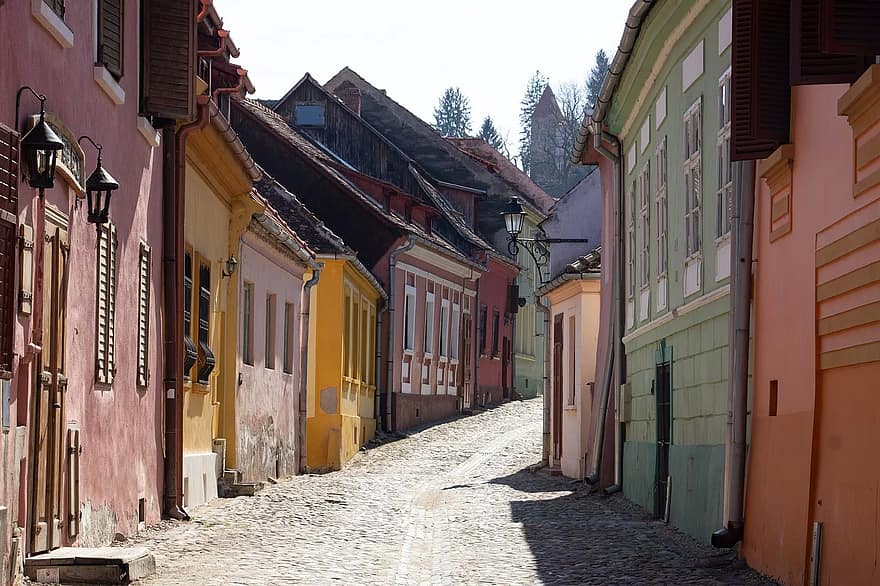
It’s also the birthplace of Vlad Dracula , and one of the most popular places to visit in Transylvania.
Sighişoara proudly claims to be the birthplace of Vlad Ţepeş, aka Dracula, and you can visit the house where the infamous ruler was born. The house is now a restaurant, and you can tour his old room above – we didn’t, but I’ve heard there’s a bit of a scare involved. Behind the nearby church, pose for a picture with the bust of Dracula!

Although many come to the city to see the birthplace of Dracula (wouldn’t you?), there’s so much more to see and do in Sighişoara . The UNESCO Old Town and Citadel is worth wandering around with its’ well-preserved nine towers, including the Clock Tower provides a bird’s eye view of the town.
Sighişoara, Dracula ties aside, is an enchanting town and one that you can easily spend a day or two exploring. Wander the narrow streets, climb the steps to the Citadel and explore this magical city where history and legends meet.
Where to Stay in Sighisoara:
Pensiunea Casa Sighisoreana – This fantastic place was where we stayed in Sighisoara. Traditionally decorated and only a short walk from the historic Citadel, it was a great location, and parking in the inner courtyard was a bonus. (The historic center is pedestrian-only, so something to consider if you are driving to Sighisoara). Hotel Central Park Sighisoara – another well-recommended hotel, only steps from the historic city center.
Sibiu: The City with Eyes
Head southwest from Sighişoara to Sibiu , the third town in this triangle of best places to visit in Transylvania.
Nicknamed “The City with Eyes”, Sibiu is known for the distinctive windows on its houses. Shaped like eyelids, the windows give the feeling that someone is always watching!
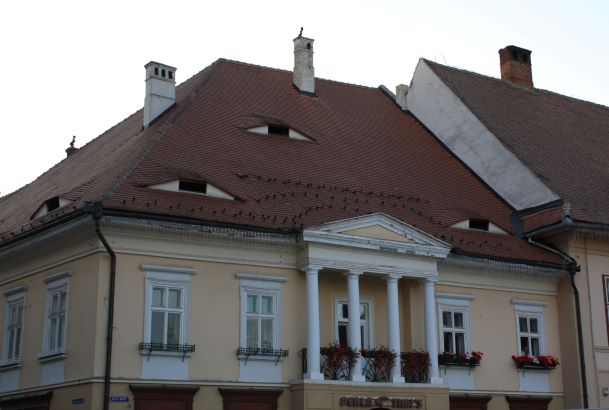
Also known for its culture, history and diverse architecture, Sibiu is a must-see spot if you’re wondering where to visit in Transylvania.
There are plenty of things to do in Sibiu , but be sure to take some time to wander around the Upper Town, where you’ll find the historic core of the city.
Then stop for a bite to eat at any of the cafes lining the main square , admire the architecture surrounding the square and climb to the top of the Council Tower for a great view over the city. And be sure to walk across the Bridge of Lies . Legend has it that the bridge will creak when someone tells a lie while crossing it.
Where to Stay in Sibiu:
Hotel Casa Luxemburg – a historical hotel with a great view of the Bridge of Lies, and a great location to explore the city. Downtown Residence – a great family-friendly place to stay in the Old Town, this one bedroom apartment has a fully equipped kitchenette, which is perfect for families, and is only a few minutes walk from the main square.
Transfagara ş an Road: World’s Best Road
Sibiu is also the starting point if you’re driving the Transfagaraşan Road . The road was voted one of the “World’s Best Roads” by the TV show Top Gear. It’s an adventure that not all will want to take!
Similar to driving the Vrsic Pass in Slovenia, this road is full of hairpin turns, steep cliffs and breathtaking views, which are all part of the adventure.

Driving the Transfagarasan Road is an adventure in itself, but it is only open seasonally until the end of October, weather-dependent. We were lucky and the weather was great, so we were able to drive it at the end of October.
If you don’t have your own car, this day trip from Bucharest lets you experience the Transfagarasan Road, with several photo stops along the way.
For those that complete the drive, you can see the REAL Dracula’s castle at the end!
Although not as impressive or photographed as Bran Castle, Poienari Citadel is where Vlad Ţepeş ( Vlad Dracul) actually lived and ruled from.
Unfortunately, the castle was closed when we were there, due to the presence of bears on the property. But it’s still formidable to see, towering high above the highway and guarding entry to the region of Transylvania.
Maybe it helped that it was a bit gloomy and close to dusk when we finally arrived. It seemed a fitting way to end our trip exploring the land of Dracula!

Cluj-Napoca: A Vibrant City
Cluj-Napoca, often referred to simply as Cluj, lies in northern Transylvania and is one of the country’s largest cities.
And while it’s definitely worth exploring, it’s a bit farther from the Transylvania Triangle, which includes Braşov, Sighişoara, and Sibiu. While not part of the core itinerary, Cluj is a city worth exploring if you have a few extra days to spare.

Explore the city’s historic center , with its unique mix of architecture ranging from Romania’s second-largest Gothic church to baroque buildings and medieval towers. The city also boasts a thriving cultural scene, with the National Art Museum , Ethnographic Museum , Pharmacy History Collection and National History Museum of Transylvania being some of the most prominent museums.
Cluj is also known for its vibrant atmosphere, with a large student population, numerous cafes and bars, and music festivals throughout the year.
It’s worth spending a day or two exploring Cluj. Thanks to some traffic and bad directions, unfortunately, we only had a few hours to spend in Cluj, but it’s a city that we would love to return to and explore further.
FAQ ’s: Visiting Transylvania
Is it worth visiting Transylvania? Absolutely! Transylvania is well worth visiting. Whether you’re interested in exploring medieval towns, visiting historic castles, enjoying the stunning landscapes of the Carpathian Mountains or experiencing the folklore and legends of Dracula, Transylvania has something to offer every traveller.
When is the best time of year to visit Transylvania? While Transylvania is a great spot to visit any time of the year, summer and fall are the most popular times to visit. Summer boasts warm temperatures, but also larger crowds, while fall has fewer tourists, stunning fall colours and the intriguing spooky atmosphere of Dracula in October.
How many days do you need in Transylvania? To truly experience Transylvania, 10 days would be perfect to visit multiple cities and explore their surroundings. However, if you’re short on time, 3-4 days would give you a quick glimpse of the best places to visit in Transylvania.
If you’re still considering where to visit in Europe, find out here why you should visit Romania .
Final Thoughts: Best Places to Visit in Transylvania
An important region throughout history, today Transylvania is known for its unique blend of cultural influences, historic landmarks, and the enduring legacy of Dracula.
From the cobblestone streets of Brasov to the medieval charm of Sighisoara, or the imposing Bran Castle to the unusual architecture in Sibiu and the impressive Transfagarasan Road, there are some great places to visit in Transylvania.
Whether you’re intrigued by the legacy and legends of Dracula or simply looking to soak in the magical atmosphere of old-world Europe, Transylvania is an amazing place and one that promises an unforgettable experience.

For more inspiration and tips on visiting Romania, be sure to check out these posts:
- 10 Great Reasons to Visit Romania
- What to Pack for Romania
- Top Things to Do in Sibiu with Kids
- Best Things to Do in Brasov
- Things to Do in Sighisoara
- Driving the Transfagarasan
You can find other information on Romania here, or check out our Destinations section for other ideas and kid-friendly places to travel to.
Erin Martin is the founder and sole writer for Wanderlust with Kids. Together with her twin boys, they have travelled to over 20 countries and five provinces within Canada. Erin is responsible for planning and facilitating all of her family's travel itineraries and adventures, whether locally or internationally. An explorer at heart, Erin aims to make any travel adventure kid-friendly and shares all her favourite family-friendly things to do, both in Canada and abroad.
Oh how I would love to visit Dracula’s castle🤩 I love anything and ever mystery. One day I will definitely go. Thanks for the awesome post😊
This is a great post! Romania is definitely on my bucket list! ❤️
So sad you couln not climb the 1480 steps to Poienari… But I’m glad you visited Transylvania. I was born and raised in Brasov and never tire of visiting every chance I get. Great read!
I can’t wait to travel again. This is all definitely on our list of places to visit.
I would love to visit Transylvania – the castle looks so intense and I love the history behind the region as well.
Comments are closed.

Discover Romania!
- Best of Romania
The ultra-complete guide before you travel to Transylvania (26 tips)
- January 2, 2022
One thing is sure. You know that Transylvania is beautiful. Magical. Mythical. Otherwise, you wouldn’t be standing arms crossed with a pile of clothes that need to find space in your luggage. Should I travel to Transylvania?
Hmmm … but what if Transylvania is not such a fabulous place after all, you know … There are many myths…
Well, that’s why I’m here…to put in the sincerity light the good and the bad about Transylvania and give you an objective and competent opinion.
Stop wasting precious time; your suitcase is waiting, so let’s just start!
This is the complete guide before you travel to Transylvania!

Show contents
The very basics! Travel related issues Transylvanian stuff

1. Rule no 1!
Many people live with the impression that Transylvania is a country. Alas no, it is a region situated right in the heart of Romania , in central-eastern Europe. A rather large area, it’s true.
You will most likely find two definitions of Transylvania .
The first says that Transylvania is the area comprised within the Carpathian arc, (so a much smaller area), while the second incorporates a much larger area that includes the regions of Ardeal (also called Crisana), Maramures and Banat.
This can create ambiguity for any tourist who faces two opposing definitions. It also explains the fact that some travel blogs write about the above-mentioned areas as Transylvania.

A complete guide of travel to Transylvania comprises basic info, things about travelling, as well as things related to this land beyond the forest, as the primary meaning says.
The very basics!
2. make sure you don’t need a visa.
If you want to find out if you need a visa (for Romania) it is best to check a serious site: http://evisa.mae.ro/NeedVisa .
Shortly, if you are from a European country or from the US, you need no visa if you plan a stay no longer than 90 days.
3. Insurance is useful
It’s a mandatory thing before travelling. It is common sense to cover theft, loss and medical problems.

4. Currency and exchange
The Romanian currency is leu (also called Ron sometimes).
1 euro is around 5 lei, and 1 USD is 4.92 lei (July 2022).
If you are the type to use plastic, this is the rule of thumb: in the city there’s no problem. There are lots of ATMs and you can pay by card in most places and restaurants, but in the country, you need cash . There are lots of exchange offices in the city and most of them do not charge commission.

5. Survival kit
Before you travel to Transylvania, you should know that Romania uses 230 V , so, depending on your country of origin, you may need a converter for your electronic devices. Bring a converter to plug in and charge your devices, but there’s no problem if you forget. You can buy one in any electronic store.
6. Time zone
Romania’s time zone is EET (Eastern European Time) and it is GMT +2 .
You can usually find a tourist info office in every travel destination, placed next to a strategic point.
Romania uses the metric measurement system , like most European countries.

Travel related issues
7. rent a car – very useful.
This is a must for travelling in Transylvania .
On the one hand, trains are rather slow, and, on the other hand, there are remote places that can only be explored by car. There are buses of course, but I wouldn’t recommend them either unless you don’t have another option.
However, there are many rent a car companies for affordable prices. Usually, they ask for a deposit worth around 100 euros. You can find many rental companies in every bigger town.
8. Driving in Transylvania
Travel in Transylvania implies driving occasionally. I read in many parts that Romanian drivers are crazy and it’s too dangerous to drive there.
It is not true. Not like this.
What is true is that the country doesn’t have a good road infrastructure and not enough highways, which translates in few roads that can be crowded with cars, trucks, even horse carts sometimes.

I have driven in other countries as well and although there is a bit more discipline, I haven’t felt menaced by the Romanian drivers. If you obey the rules and do not exceed the speeding limit, nothing bad will happen.
Speed limits for cars are 130 km/h on freeways, 100 km/h on express, national and European roads and 90 km/h in other areas. In towns and built-up areas, the limit is 50 km/h.
The blood alcohol limit is zero. Random breath tests can occur and penalties are severe.

9. Where to fly in
Although most of the people who visit Romania start rigorously from the capital, Transylvania offers some landing opportunities not to be overlooked. Cluj Napoca is the largest and most vibrant city in Transylvania, so consider it a good starting option. It operates regular flights of TAROM (the Romanian carrier), Lufthansa or low-cost companies such as Wizz Air, Ryan Air or Blue Air.
Sibiu is a smaller city, but very chic and is surrounded by amazing landscape.

10. How many days to plan
Well, well, this is a difficult thing to say. It depends of course on the number of days planned for your vacation.
To make things straight, I’d say it is an insult to travel to Transylvania and spend less than 3 days. Ideally, a trip to the region should last between 4-5 or over 5 days. There were people who came, loved it, bought a house in the countryside and settled down.

11. Best season to visit
This is a simple one. Transylvania is versatile from this point of view. It’s got the real deal for all the 4 seasons . Most people come in summer, which is okay from all points of view. Yeah, it is more crowded, but Transylvania doesn’t yet get hordes of tourists, so with a bit of careful planning you won’t have to spend your time queueing.
Insider tip!: book tickets ahead for Bran Castle as it is Romania’s no 1 attraction!
Spring and autumn can be ideal seasons if you flirt with the idea of seeing more of Transylvania for yourself. Watch out though, even if the weather can be pleasant and warm throughout the day, early mornings and evenings are chilly!
Winter is perfect if you also consider skiing in one of the mountain resorts!

12. Prices and affordability
I’ve been reading articles about how affordable and cheap Romania is for tourists.
It is true, prices are much lower in Romania than in other countries, such as the US or many other European countries. Romanian prices are a little lower than in neighbouring countries and considerably lower compared to western Europe.
Romania is an affordable country for travellers and travel nomads who can easily accommodate and live here for a longer period of time.

For accommodation, the average hotel price for a couple/night is around 50 euro. The average price for food/meals for one day/person is around 100-125 lei (20-25 euro), while transportation varies between 75-100 lei (15-20 euro) if you use means of transportations, trains or taxis. If you only travel within a city by bus or tram, these costs are much lower. Many tourist attractions are free, or they only charge a few euros per attraction.
You should expect higher rates for nightclubs and bars, as well as festive meals held at special events, such as Christmas, Easter or New Year’s Eve. Entertainment is also pricier, such as not so common sport attractions: paragliding, canoeing, rafting or buggy rides.

13. Tipping
This is common practice in Romania. People usually leave a tip that is around 10% for service in restaurants, bars or at the hairdresser.
14. Travel gear + what to pack
Travel to Transylvania speaks the same language as the universal clothing style. So, the ladies should bring skirts, trousers, T-shirts, while some jeans, trousers, shorts, T shirts or polo shirts will do for gents. It is highly advisable to bring comfy shoes and trainers. And yes, leggings, hiking pants plus a raincoat if you plan to attack the mountainous areas.
Other compulsory elements include: credit card, cell phone charger, convertor, a detailed driving map, driver’s licence to rent a car, passport, professional camera or phone to immortalize fabulous places, sunscreen lotion for summer and obviously, good mood. The rest is provided.

15. Safe travel – no need to worry
A visit to Transylvania is commonly considered safe . Romania is a safe country for travel and living, so you needn’t worry.
Walking around after darkness is also carefree, but of course you should avoid shady neighborhoods. However, you should pay attention to pickpockets and never leave your bag unattended. Pay attention to taxi drivers, as some of them scam foreign tourists by trying to get more money.

16. Travellers with disabilities
Transylvania can sometimes prove an unfriendly destination for travellers with disabilities. The Romanian system hasn’t provided wheelchair access in all buildings, so it is better to check on the website before arrival.
Then, almost every downtown destination from the cities has cobbled streets that make the wheelchair displacement more difficult. The smaller the town/village is, the fewer chances to find assistance.
Transylvanian stuff
17. transylvanian history made super short.
Historically, Transylvania was conquered by the Hungarians by the 12 th century and was part of the Kingdom of Hungary. Then, Teutonic knights and Saxon inhabitants (from Germany) were brought to populate the land and defend the borders. Transylvania was later part of the Austrian-Hungarian Empire.
Despite the unification from 1918 that put together all Romanian provinces (Transylvania included), the beginning of World War II annexed northern Transylvania to Hungary and the situation remained so until 1944. Ever since, Transylvania has been Romanian land.
Today, the Hungarian and German ethnic minorities are decreasing, but the area preserves important cultural and architectural influences.

18. What to expect
Transylvania is for good reason the most famous region in Romania . And not only in Romania. Its reputation crossed the borders due to the beauty and variety of landscape and activities. This is the country’s most developed region from an economic point of view and an important cultural hub.
This area awaits the visitor with castles ( Bran , Corvin ), the almost unique Saxon fortified churches ( Viscri , Biertan , Harman , Prejmer , Crit , etc), natural parks (Apuseni, Retezat ), hiking and sports opportunities ( Tarnita Lake , Colibita Lake, Bucegi mountains, Canionul 7 Scari near Brasov, etc), wildlife (Libearty Bear Sanctuary), vibrant cities, ( Cluj , Brasov ) medieval and charming atmosphere ( Sighisoara , Sibiu ), hospitable people, cultural events and festivals (TIFF, UNTOLD), delicious dishes and authentic guesthouses.
This is the moment you just realized the number of days planned doesn’t overlap with the plans in your head.

19. No vampires or Dracula, but lots of garlic
Contrary to the classic belief that you will meet Dracula , you can only dream at night about Count Dracula digging his vampire teeth into your immaculate skin. So, a travel to Transylvania wouldn’t be complete without a visit to Dracula’s castle.
Although Dracula was a fictional character invented by Bram Stoker who never visited Transylvania, Eastern European folklore largely used garlic to ward off this creature. Moreover, garlic is seen as a remedy that protects people and homes from evil spirits , as well as curing colds and coughs.

Romanians are big fans of strange superstitions and mythic creatures. The strigoi (meaning witch or evil spirit in Latin) are, besides the real Vlad the Impaler, another source of inspiration for the famous bloodthirsty creature. They are some sort of Romanian vampires with troubled spirits that have risen from the grave.
The strigoi are believed to suck the milk from mothers and cows, which is why Romanian peasants have long protected their livestock by covering their horns with garlic.

20. Transylvanian people and jokes on Transylvanians
Like in other countries, Romanians have this inner segregation according to regions. People from Transylvania are considered smart, preoccupied with their families, and somehow superior to others.
Still, there’s a stereotype about ardeleni (another name for the inhabitants of Transylvania) that says that they are very slow and speak without hurrying because all good things require a lot of time.
So, let me translate two jokes for you to see my point:
You know why the ardeleni don’t go to the theatre on Saturday?
Not to laugh in church on Sunday.
And here comes the other:
Why do the ardeleni put bread in the soup?
Not to open their mouth twice.
Maybe these anecdotes are a key in understanding Transylvanians’ behaviour in being slow.

21. Good to know about drinking…
Romanians will never refuse a shot of palinca . And nor should you.
A strong spirit usually made of plums, the palinca is usually served as an appetizer. Reaching sometimes 5o degrees , it is the real deal. If you are invited for a shot of palinca/tuica (another name) as a hospitality sign, it is impolite to refuse. Moreover, you should drink it as a shot. If you think it is too strong, you can stop after the first one, even if the hosts don’t.
Although you can find palinca in the restaurant or even store, true palinca is homemade. Romanians pride themselves with their own distillation.

22. …and eating
Eating in Transylvania is mainly about hearty dishes with meat. But also about eating organic in the country. And affordable.
Transylvanian cuisine is not for diet, but it sure is finger-licking good (as some famous slogan says!!). It was born from the combination of various cultures and influences that add some extra flavour to the Romanian dishes.
In order to feel what this land tastes like, you should try a piece of slab of pork fatback, called slănină with onion, freshly baked bread and a glass of pălincă . Or cabbage made in Cluj style, or bulz, or soup, or kurtos kalacs, or rhubarb pie….and the list can go on!

Insider tip!: If you want to experience traditional dishes and feel Transylvania on a plate, opt for accommodation in a traditional guesthouse. In many cases, they have their own providers from the village, which totally changes the taste.
Extra tip: You needn’t worry if you are a vegetarian. Yes, you have less options, but there are some good ones. However, every city offers you at least one tasty vegetarian restaurant. Try Samsara in Cluj, Simone in Brasov or Kombinat Gastro-Brewery (vegetarian friendly) in Sibiu!

23. Can you get along with English?
The younger generation is a big fan of English, whose words they frequently use in combination with Romanian. So, a visit to Transylvania will go smooth if you use English. You won’t have difficulty finding (especially young) people who can speak English in the city.
There is a different story in the countryside , but even if they cannot communicate with you, people will do anything to reach out to you through body language.
A simple translation app on the phone can do the job, though.
24. Other languages you may hear
Of course, this is Romania, so people speak Romanian. However, witness to a long and troubled history and an intense cultural heritage, Transylvania is still home to Hungarians and Germans (even if to an ever smaller amount). So, sometimes you can hear other languages than Romanian spoken on the streets of Transylvania. Especially among older people.
25. Feel the nightlife
This is a must if you travel to Transylvania.
Everybody already knows that Bucharest is the new Berlin for its huge partying appetite. This is also applicable for all major cities in Transylvania. Romanians are huge fans of clubbing (suffer a lot because of the pandemic) that the young generation uses as the most common form of recreation and socializing.
If you want to experience nightlife, you should do as the Romanians do. They gather around someone’s place and drink a few drinks for a start, and it is only around midnight that they hit a club where they sometimes enjoy themselves till the break of dawn.

26. Hotels vs guesthouses vs hostels
It is your call considering the amount to spend. You can find a large variety here .
Hotels are the most classic type of accommodation. Hostels are mainly budget and offer accommodation up to 8 or 10 people in the same room, often with a shared bathroom.
Personally, I suggest trying a guesthouse whenever possible . They are (in many cases) family businesses that offer very decent conditions, cleanliness, lots of nature (if you aren’t in the city) and delicious dishes prepared by the locals for reasonable prices. Here are some guesthouses that I highly recommend: Harmonia Mundi near Cluj, Krauss House in Crit, Casa Chira in Viseu de Sus, or Transylvania Guesthouse in Cincsor. If you want to feel like a princess or valiant knight, opt for a castle, such as Zabola estate , or Haller Castle in Ogra.

In conclusion, Romania is a beautiful country with majestic landscape and affordable prices. We boast on great food and hospitable people. We have some of the last pristine forests in Europe scattered with wildlife. Transylvania is home to some stories and legends that go beyond its borders and bring its fame. Our traditions and remote villages where time stood still are unique for the traveller ready to experience authentic taste and feel the true sense of this land’s inhabitants.
In order to truly understand the Transylvanian spirit, the curious traveller should immerse in a journey that includes nature, remote villages, a few cities and genuine homemade food.
- TAGS: complete guide , transylvania , traveling tips , travelling tips
Other interesting posts

Best 2-Day Itinerary for Maramureș region (with map)

TTF Talks: Two Americans’ views on their Romanian trip

24 epic places to visit in Romania (with map + many bonus ideas!!)

How to travel smart: tested dos and don’ts for cheap flights
4 responses.
loved it!!!!!
thank you so much Adriana!
The post reflects the reality of these beautiful places with hospitable people
Thank you Cerasela. The places are amazing and the people warm.
Leave a Reply Cancel reply
Your email address will not be published. Required fields are marked *
Save my name, email, and website in this browser for the next time I comment.
I want to subscribe to newsletter
This site is protected by reCAPTCHA and the Google Privacy Policy and Terms of Service apply.
© All Rights Reserved.
- Privacy policy
- Cookies policy

Top Things To Know Before Traveling To Transylvania
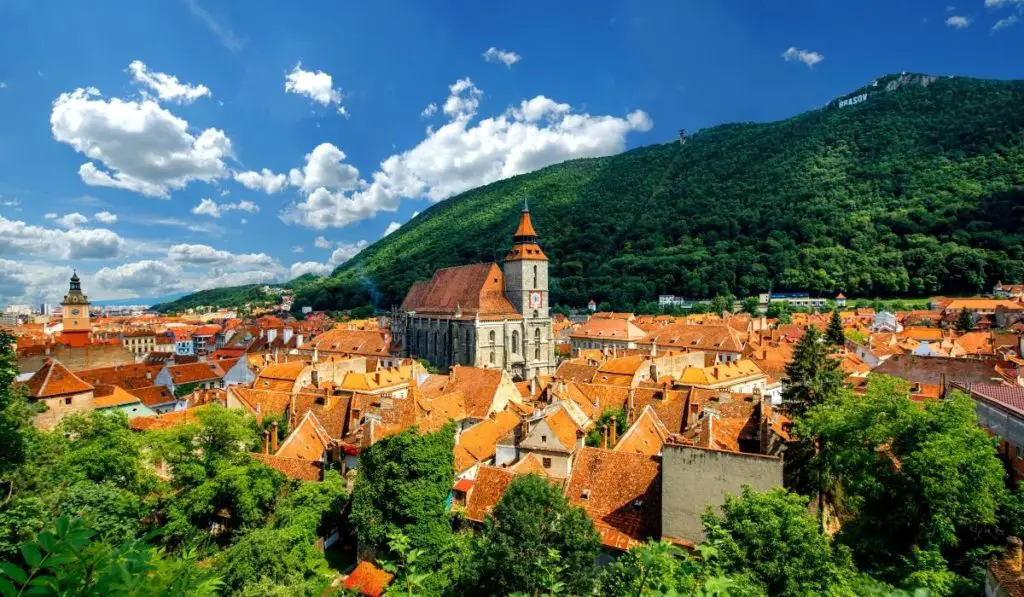
This post may contain affiliate links. At no cost to you, purchases made through these links may result in a small commission for Traveling Transylvania. We never recommend products that we don’t know and trust. Thank you for your continued support!
If you’ve stumbled across this page, I can only assume you’ve decided to take the plunge and travel to Transylvania! Congratulations. Start preparing yourself now for a land unlike any you’ve ever seen before.
Transylvania, Romania is one of the most unique and beautiful regions in the world. From the hearty traditional food, to the expansive mountain ranges in the region, to the hospitality of its people, Transylvania will feed your soul and make you feel as though you’re home.
Although I’m not from Transylvania, I’ve lived here for the past few years and compiled this list of helpful information for first timers’ visit to the Transylvania region (from an American perspective). It’s one of the most beautiful historical regions in Eastern Europe, with its medieval towns, magnificent castles, and stunning Carpathian Mountains. Bine ati venit to the land beyond the forest .
Territory Politics
From bucharest, from budapest, from belgrade, schengen status, romanian vs. roma, electricity & outlets, taxi & uber, public transportation, driving in romania, fortified churches of transylvania, rimetea village, historic center of sighişoara, dacian fortress of the orastie mountains, historic center of sibiu, wooden churches of maramureş, roșia montană mining landscape, historic center of alba iulia, the legend & inspiration, how to drink tuica, best things to eat in transylvania, safety in transylvania, best cities to visit in transylvania, be prepared to talk money, …and politics, byo tampons, bear protection, where is transylvania located, is transylvania safe, is transylvania a country, is transylvania in romania, is transylvania a real place, is transylvania worth visiting, where is transylvania.
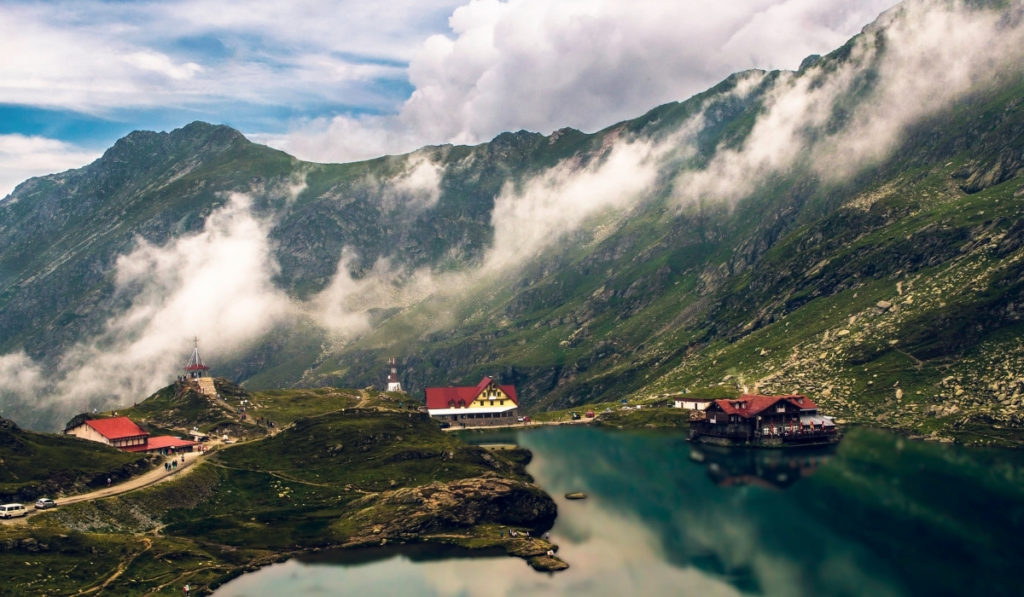
Transylvania is the largest region in Romania. Transylvania literally means ‘the land beyond the forest’. In addition to its colorful and charming cities, you can expect a great deal of quality time spent in the great outdoors. When planning your visit to Transylvania, be sure to allocate some time to get out in nature.
Transylvania is a plateau that is bordered on two sides by the Carpathian Mountains and on one side by the Apuseni Mountains (Western Carpathians).
For a more detailed geographic description of where Transylvania is located and what regions it includes, check out our post: Where is Transylvania?
The territory politics of Transylvania are complicated to say the least. Many people wonder if Transylvania is part of Hungary or Romania. The answer, in short, is that it belonged to both countries at different times throughout history.
Today, Transylvania is located in Romania. Prior to World War I, Transylvania belonged to the Hungarian Kingdom and was part of the Austro Hungarian Empire.
Following the world war and the Treaty of Trianon (1920), Hungary was forced to relinquish the territory of Transylvania. Prior to this, Transylvania had been part of the Kingdom of Hungary for centuries.
Many ethnic Hungarians who still live in the region continue to lobby for the region to become an autonomous principality.
You’ll find that most of Transylvania’s population of Hungarians live in Cluj, Miercurea Ciuc, and other towns and villages in Northern Transylvania.
I am getting confused for a Hungarian often these days, since Szilard and I got married and I have a Hungarian name now! Though the confused look I give when someone starts speaking Hungarian to me lets them know I certainly am not, haha!
How to Get to Transylvania
Curious about how to get to Transylvania? Transylvania is equidistant from Bucharest, Budapest, and Belgrade. It’s pretty easy to reach Transylvania from Budapest and Bucharest, but from Belgrade things get a little trickier. You can often find flights from elsewhere in Europe as well, as there are a number of international airports in Transylvania, including in Sibiu and in Cluj.
Getting to Transylvania from Bucharest is done by plane, train, bus, or car. You can sometimes find cheap flights to Cluj-Napoca. The fastest way is by car. If you’re flying into Bucharest, be sure to tack on a few days to this city in the southern part of the country before or after your trip to Transylvania.
Getting to Transylvania from Budapest is faster than from Bucharest or Belgrade. You can reach Transylvania by train, bus, car, or plane.
Coming from Belgrade, you have to either take an indirect bus or drive your own vehicle. Train services from Belgrade are unreliable if available at all. Driving takes about 7 hours. It’s a better idea to fly into Bucharest or Budapest.
Best Time to Visit Transylvania
Situated to the west of the Carpathians, the climate on the Transylvanian Plateau is slightly cooler than other locations in Romania. This is due in part to its altitude, which is (on average) 400 meters above sea level.
In short, there is not necessarily a best time to visit Transylvania, as each season has something to offer. It all depends on your personal preferences. Transylvania has four distinct seasons each year. With that, comes unique offerings depending on the time of year you wish to travel to Transylvania.
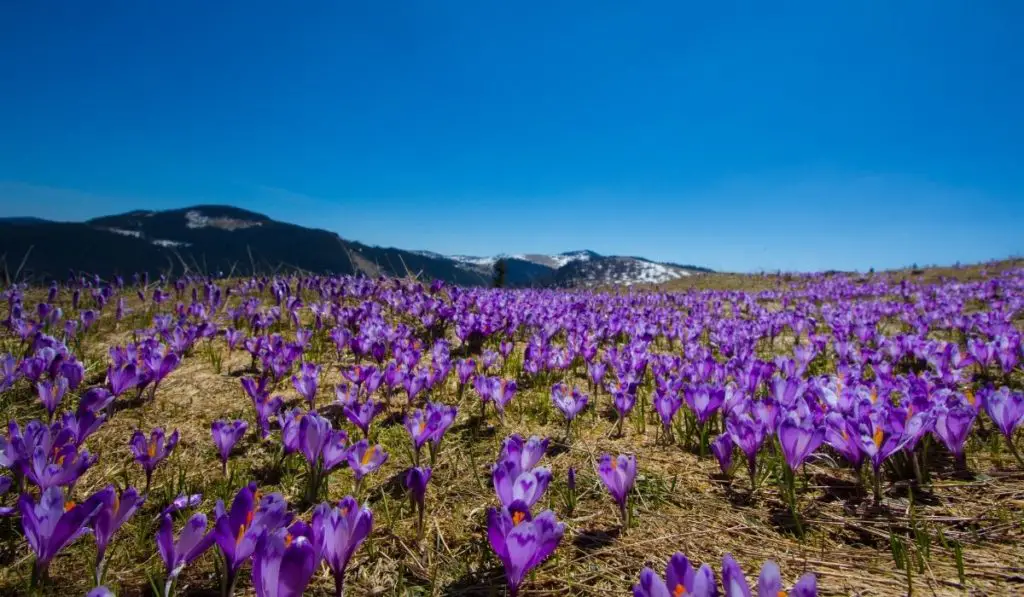
Spring in Transylvania brings bursts of color to a previously brown and dried landscape. The region truly comes alive and is one of the most beautiful places to celebrate spring and new beginnings.
Mărțișor, Women’s Day, and Labor Day are all holidays that Transylvanian citizens look forward to each year. Have a barbecue on Labor day for a bit of Romanian culture!
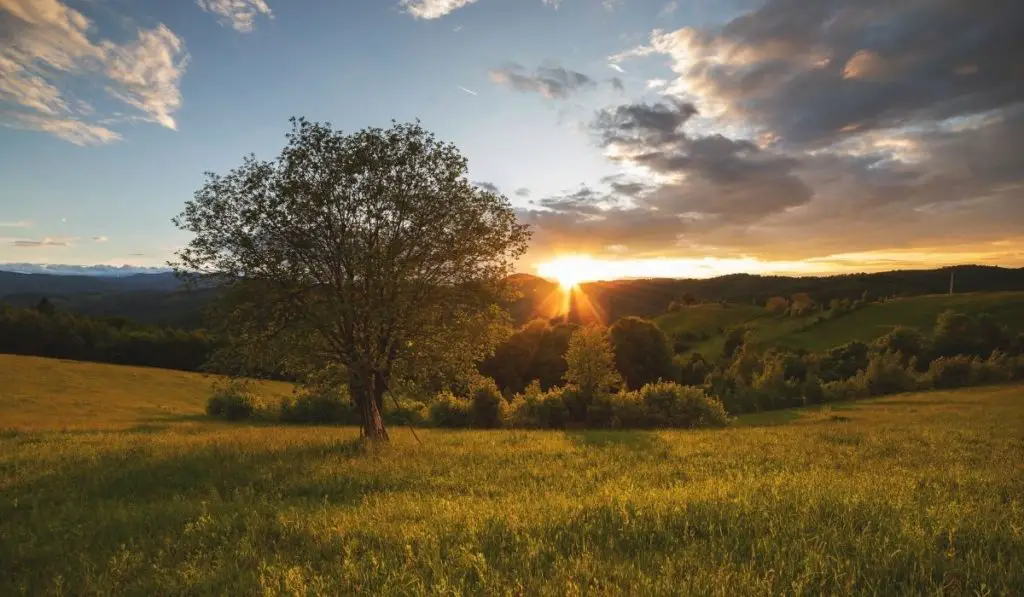
Summer in Transylvania, though hot, is a great time to visit. This is a popular season to visit, particularly among concert-goers and lovers of festivals. Whether it’s the Medieval Festival of Sighisoara , the Film Festival in Sibiu, or Electric Castle in Cluj-Napoca, you’ll find a festival for every interest in Transylvania during the summer.
Head to Lake Tarnița for a quick dip to cool off, if you haven’t already headed to the Black Sea coast.
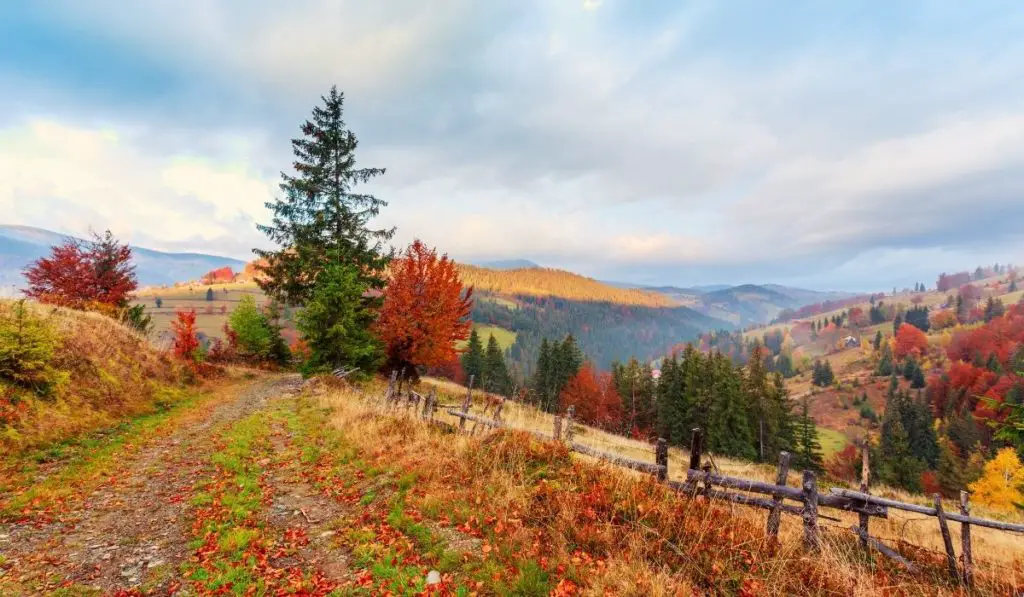
Autumn in Transylvania is stunning. Photographers especially will love to drive through the mountains, stopping at every photo opportunity. They look absolutely magical!
Given the associations with bloodthirsty vampires , Halloween is a great time to visit Bran, where Dracula’s Castle is located just outside Brașov. Though you won’t witness a ritual killing or a vampire killing show, head to the Bran Castle Halloween party , a well organized masquerade party. Bran Castle is the official name of Dracula’s Castle, so you can be sure it’ll be a spooky Halloween.
If you’re into all things Dracula, soup season, and partying at Bran Castle, fall is the best time to visit Transylvania.
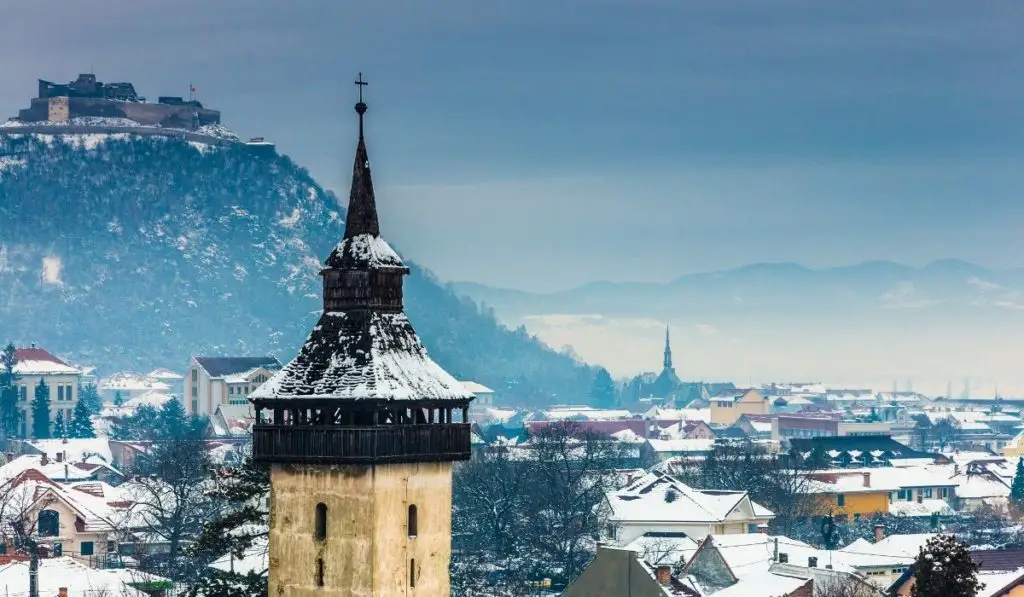
Winter is the best time to visit Transylvania for snow sports enthusiasts or lovers of Christmas Markets ! Transylvania is imbued with a sense of magic as the first blanket of fresh snow covers the ground, particularly in the mountains. There are a ton of snow resort areas to go skiing or snowboarding , or take the little ones tubing.
Sibiu is known to have one of the most magical Christmas markets in all of Europe, but Brașov and Timișoara both have Christmas markets worth visiting.
For some excellent photo opps, consider heading into the mountains to the village of Mărișel. It’s an easy day trip from Cluj-Napoca or even Alba Iulia, where you can take a horse-drawn carriage through the snow.
Language in Transylvania
Considering the fact that Transylvania is in Romania, you shouldn’t be surprised to learn that Romanian is the official and most widely spoken language in the region. A few key Romanian phrases will go a long way if you take the time to learn them.
Though, I’ll warn you – despite being a Romance language, the Romanian language has proven to be very difficult for me. Both in terms of pronunciation and grammar. Godspeed!
Although I say that Romanian is a difficult language to learn, Hungarian is one of the most difficult languages in the world. But it is widely spoken in Transylvania, particularly in the northwest, where the region shares a border with Hungary.
In some small villages, you may not hear any Romanian at all, as these villages are predominantly ethnic Hungarian.
Currency in Transylvania
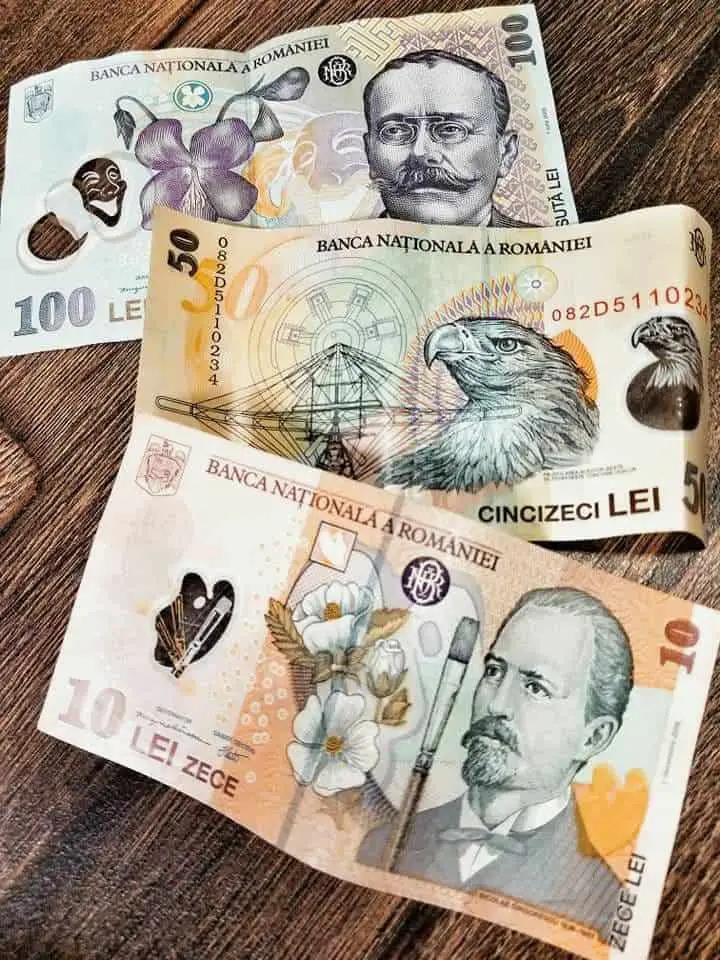
The main currency in Transylvania is the leu (plural lei) which is translated as ‘lion’ in Romanian. The bills themselves are made of plastic (perfect in case you forget money in your pocket when doing laundry) and consist of different sizes and colors.
Romania is not part of the EuroZone, so you won’t find many places that accept Euro as currency (if any, at all). The only time that we use Euro in Romania is for large purchases, like rent, cars, or property.
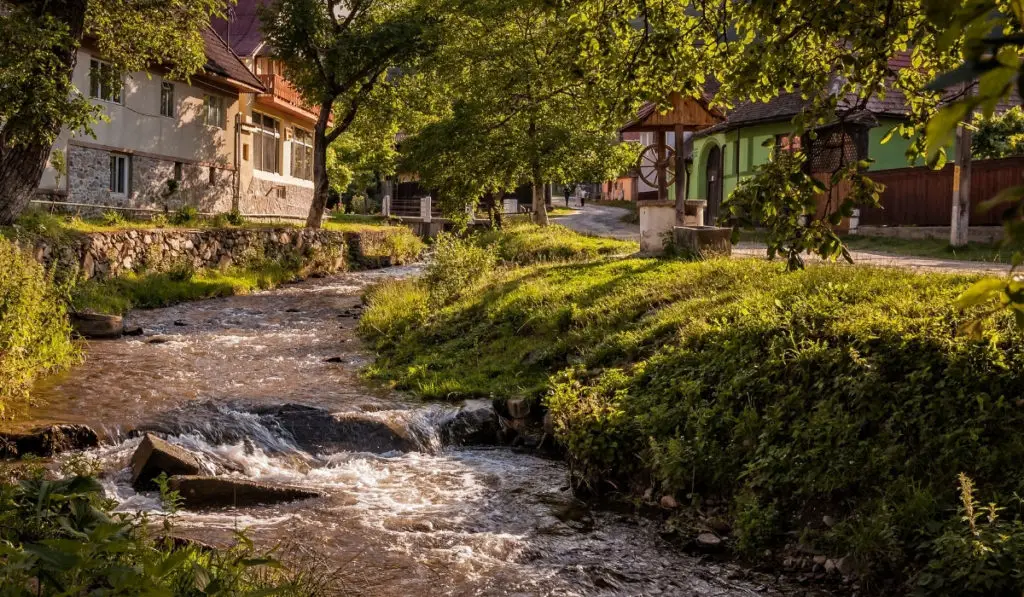
Although there have been ongoing talks for years about Romania joining the Schengen zone, it is not included yet. This can be a good or a bad thing, when you consider it. Traveling to Transylvania from outside the EU usually means that you can stay in Romania for 90 days without a visa out of a period of 180 days (this is true for Americans – please consult with your local embassy or consulate for visa requirements from your country).
This is great for people who are spending a lot of time in Europe and need to get out of the Schengen zone for visa reasons.
For me, who lives in Transylvania, I’d love Romania to join Schengen as quickly as possible so that my husband no longer needs a visa to travel to the United States! That’s right – even though Americans do not need a visa to travel to Romania, Romanians need a visa to travel to the USA.
When I lived in Italy, I would frequently hear Italians talking about the gypsies from Romania. I (incorrectly) assumed they were talking about Romanians (I think they believed this too). But this is not the case. They were talking about Roma people, which is an entirely different ethnicity.
Unfortunately the Roma people have a bad reputation in Romania and abroad for stealing things and living in squalid conditions.
In Romania the plugs and sockets are type F. The normal voltage is 230 V and the normal frequency is 50 Hz.
You can pack an adapter, but I’d recommend actually purchasing a phone charger from an Orange store in Romania. They’re cheap (around $15 USD) and you won’t have to worry about slow charging due to a poor adapter.
Plus, now you have a phone charger to bring to other European countries as well.
Getting Around Transylvania
Transylvania is about the size of New England. It seems much larger once you’re here! It takes forever to get anywhere by train as the Romanian rail system is painfully slow. I swear, I could run faster.
Public transport within cities is usually reliable and easy to navigate. In smaller towns, you may have to hitch a ride with a local! It’s a normal part of the culture here.
Uber is not as prevalent in Romania as in the States, but they do have Bolt. In general, Bolt is typically cheaper than taking a taxi (and their drivers are a bit friendlier, too). Taxi drivers in Transylvania might see you are a tourist and take you on a roundabout way to get where you’re going for a few extra lei.
I had this experience once in a taxi with Szilard. We were speaking English and all of a sudden Szilard started yelling at the driver. It was obvious the driver was taking us out of the way of our destination because he thought we were tourists.
Download the Bolt app and you won’t have to worry about this, since the route is predetermined by the app.
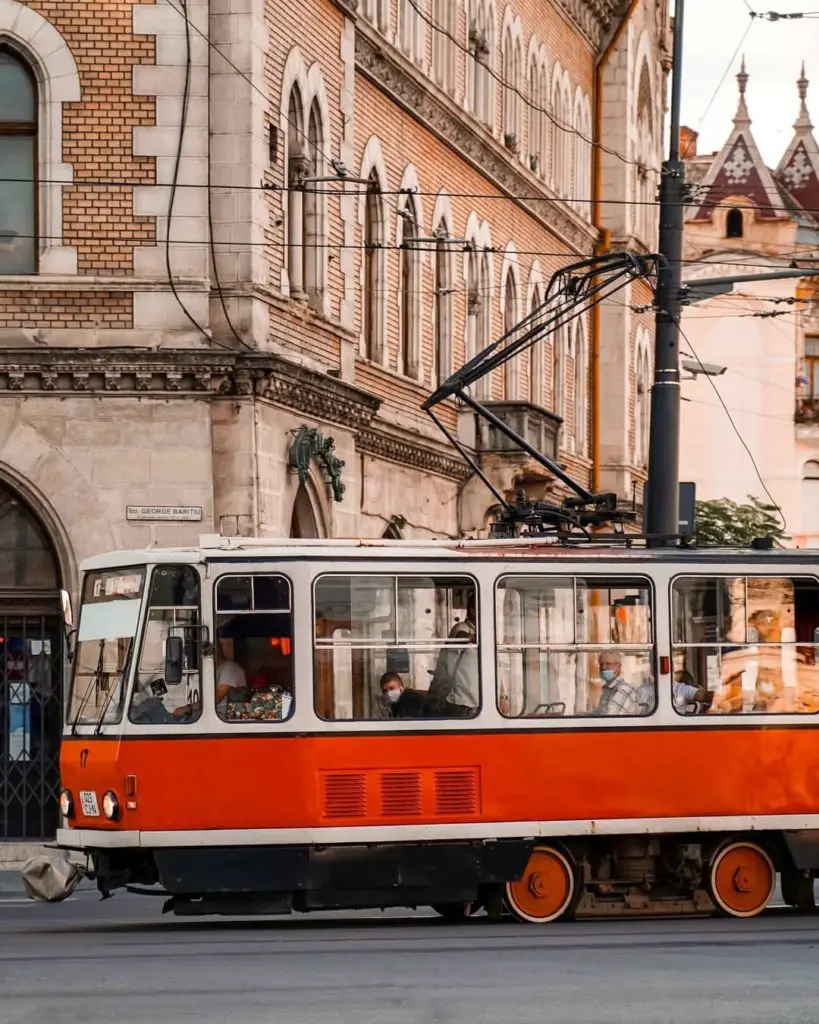
As I mentioned above, public transportation, particularly trains, tends to be very slow in Romania. A train to Budapest takes over 7 hours, while the drive will only take you 5, for example.
Night trains are a good option if you’re going somewhere far or to other regions of the country.
Buses are faster than trains but they tend to be unreliable if you’re going between cities or towns.
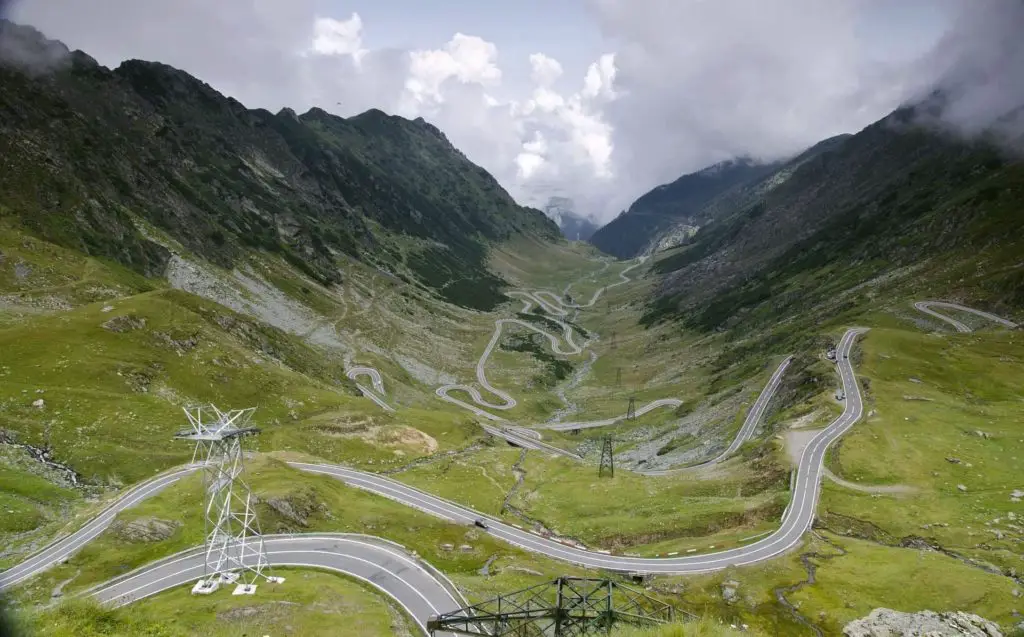
Romania has one of the highest fatality rates due to car accidents in all of Europe. The drivers here are literally scary. They drive like maniacs due in part to the fact that the infrastructure here is sorely lacking. There are only a few highways throughout the whole country!
So, when you’re driving between big cities or small towns and there’s only a one lane road going through villages, and maybe you’re stuck behind a semi, you can understand the frustration and why they tend to drive like savages.
Driving in Romania is not for the faint of heart. Rent a car at your own risk. I avoid driving at all costs, and usually only take the car to the market or the mall once a week.
UNESCO World Heritage Sites in Transylvania
If you’re looking to visit a UNESCO World Heritage Site or two while you’re in Transylvania, you’re in luck. There are quite a few in the region, all important components of the local culture and great travel inspiration.
We’ve included the official ones as well as a few that are on the tentative list (but still worth a stop!).
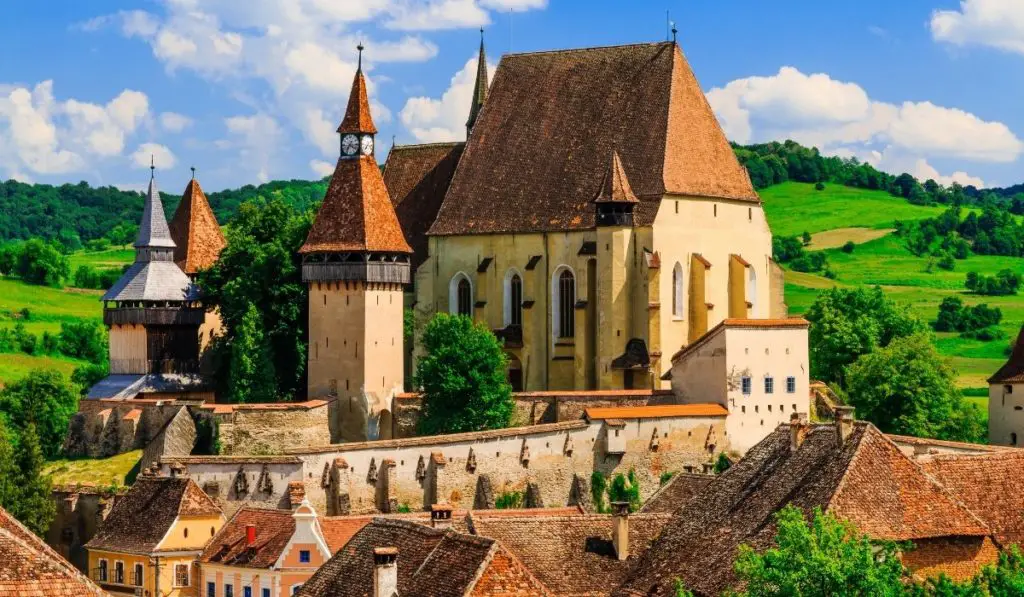
The Fortified Churches of Transylvania are probably one of the most popular UNESCO sites in Romania. Transylvania has hundreds of fortified churches, but only seven of them made the cut to be included as UNESCO sites. They are scattered throughout the region.
If you want to see most of them, basing yourself in Sibiu is probably the most convenient way to do so. Read up on the history of these magnificent churches before visiting to truly appreciate them!
The village of Rimetea is a Hungarian village located in Alba county. It’s one of the most beautiful villages in the entire country, with a predominantly Hungarian speaking population. There isn’t much to do here aside from admire the scenery and try some delicious food, but it’s still worthy of a visit!
Sighişoara is among the most beautiful and most visited places in Transylvania. It’s home to a wonderful Medieval festival, Vlad Dracula’s birthplace, and the Sighisoara Citadel. The walled Old Town is beautifully preserved and a great option for a day trip from either Cluj-Napoca or Sibiu.
Be sure to take some photographs of the epic clock tower in this medieval city. The clock tower is among the most beautiful parts of Sighişoara.
Insider Tip: For the best food, check out Cafe Martini in Piata Hermann Oberth. Since moving to Sighisoara, it’s become our favorite!
This incredible ancient site goes back to the times of the Roman Empire and the Roman-Dacian wars. Sarmizegetusa Regia is sometimes called the ‘Romanian Stonehenge’ and it’s easy to see why. It evokes a somewhat eerie vibe as you imagine yourself traveling back in time to the days of the Dacians .
Sibiu is the first city I ever visited in Romania. I lived there for the duration of the 2020 lockdown and it is by far my favorite place in Transylvania (in all of Romania, for that matter). Sibiu was a German-Saxon city that still retains a bit of Germanic influence.
Sibiu was the European Capital of Culture at one point and it’s easy to see why. The historic center is the most beautiful I’ve seen, right on par with Sighișoara.
Get lost in the cobblestone streets, check out the Bridge of Lies, or take some day trips to the fortified churches and beyond. There are a ton of things to do in Sibiu .
Though sometimes not included in the definition of ‘Transylvania proper’, the wooden churches of Maramureş are one of the most popular historical sites to visit in the country. Maramureş itself is stunningly beautiful, nestled along the Ukrainian border.
Be sure to visit Breb for a taste of what life is like in these remote villages.
In part of the Apuseni Mountains lies Roșia Montană, a small village that’s home to an incredibly complex gold mining operation. There are over 7km of gold galleries and multiple water wheels in four different locations underground.
The site is included on the UNESCO World Heritage Site list for its incredibly advanced technology that was used in the ancient times and the Roman occupation of Dacia.
Alba Iulia is known for its epic citadel. It’s humongous, and very beautiful. The citadel in Alba Iulia is a lesser known site in comparison to Bran Castle or Sighisoara, and only a handful of visitors ever make their way to Alba Iulia. It’s totally worth spending a day here, though, and exploring the citadel and the surrounding gardens.
Sometimes there are markets held inside the citadel, selling mici and other snacks, handmade crafts, and authentic souvenirs to bring home.
Dracula’s Transylvania
Virtually everyone in the world associates Transylvania with Dracula and vampires. But where did this rumor start? Legend has it that Bram Stoker’s Dracula drew its inspiration from Vlad Tepes, a Wallachian prince who was rumored to have impaled prisoners he captured from Saxon cities.
Sometimes referred to as Vlad the Impaler, he is considered a national hero and an integral part of Romanian culture.
Though history tells us that Vlad the Impaler never actually lived in Bran Castle , he was rumored to have been imprisoned there before his death. The history of Bran Castle remains shrouded in mystery, which only adds to its mystery.
Sometimes you will also hear Vlad Tepes referred to as Vlad Dracula, as his surname was Dracul. Bram Stoker’s Dracula remains a forerunner of novels about the living dead, even with bestsellers like Twilight and other teen vampire books.
Transylvanian Food & Drink
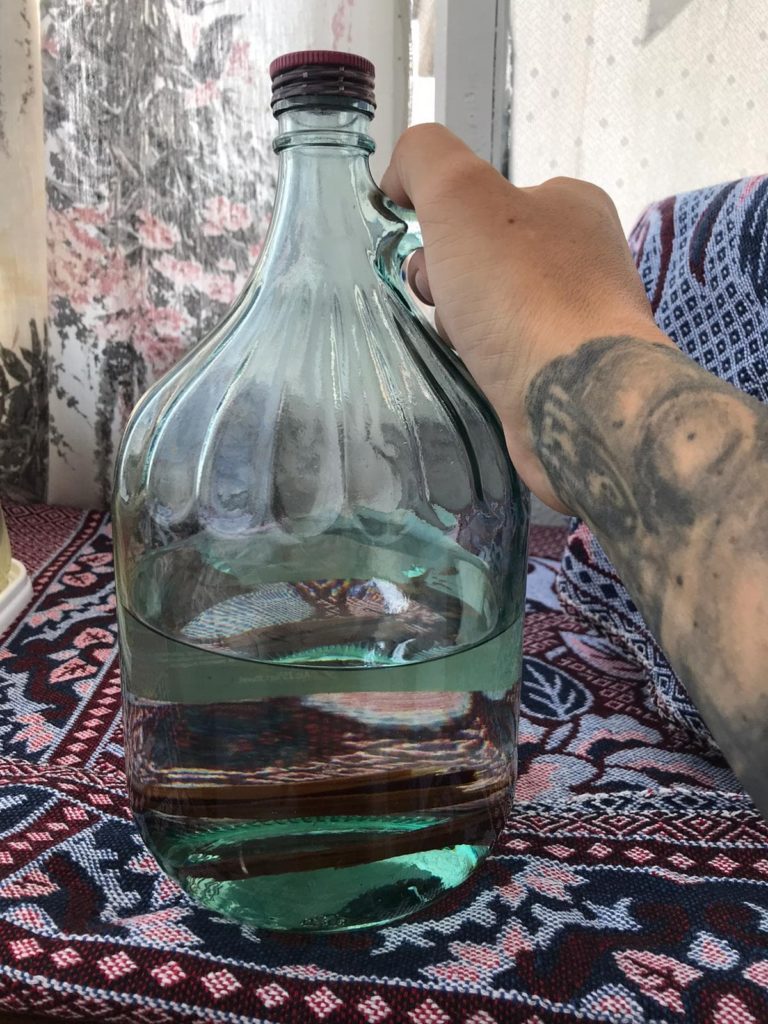
Țuică is an incredibly strong local spirit made from fruits such as apples, plums, apricots, or peaches. Sometimes referred to as pălincă, it has the ability to ‘transform you’, as my husband likes to say. This is in reference to the fact that it can turn a normal, fun person into an angry savage, kind of similar to the effects of tequila on some people.
When someone offers you pălincă in a shot glass, proper protocol is to sip it, not shoot it. I personally think it tastes disgusting, and unfortunately it ‘transforms’ me, so I tend to stay away.
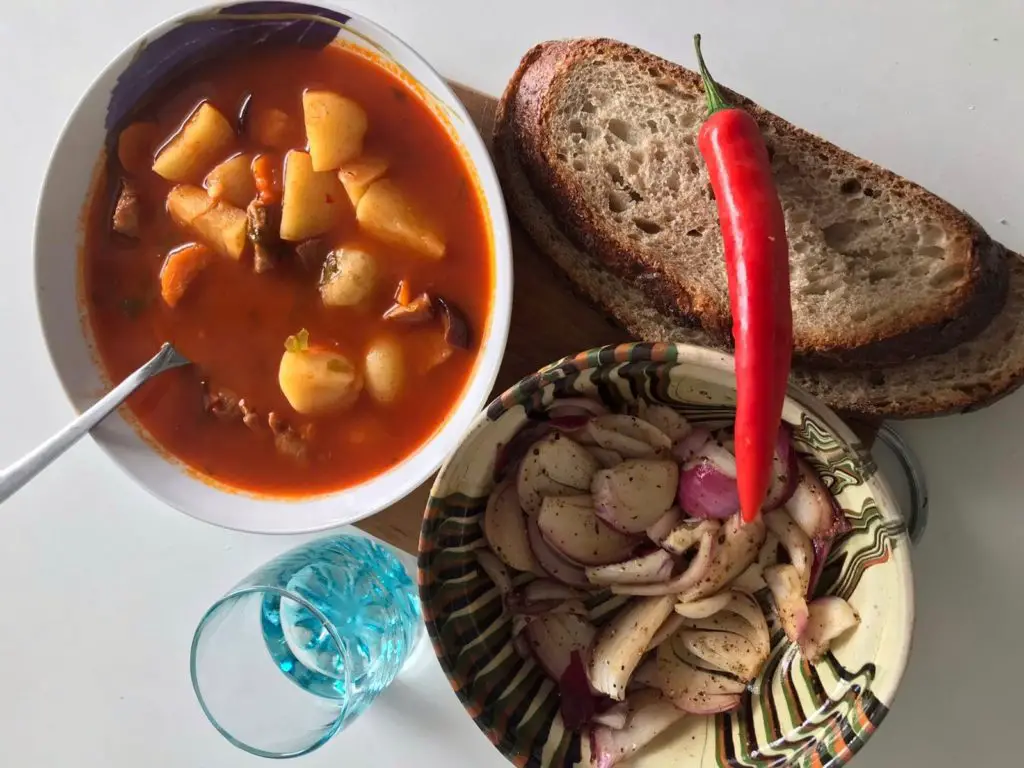
Transylvania is home to some delicious traditional Hungarian and Romanian food . Some influence is also seen from the Ottoman Empire and Habsburg Empire.
A few dishes that are considered traditional Romanian are actually Turkish in nature, such as sarmale, stuffed cabbage rolls. Other popular foods to try include mici (uncased sausages), ciorbă de burta (belly soup), and papanasi (fried donuts covered in fruit jam and sour cream).
Overall, Transylvania is a very safe place. As a woman, I never feel unsafe or uncomfortable going out alone at night. Of course, you should always keep your wits about you and follow your instincts if someone or something is making you feel uncomfortable.
Read up on individual cities you might visit and what the different neighborhoods are like to avoid going to the ‘bad part’ of town.
Use common sense and you will be fine!
There are a number of major cities and medieval towns to visit throughout the historical region of Transylvania.
My personal favorite is by far Sibiu! It’s the most beautiful, in my opinion.
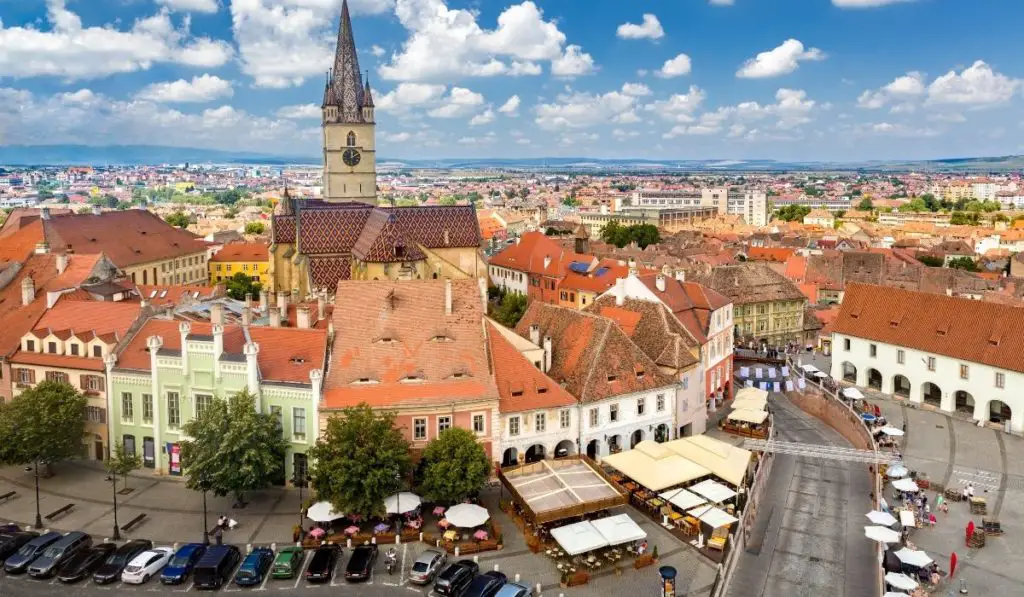
From Brasov, another beautiful German-Saxon influenced city, you can easily visit Bran Castle.
Cluj-Napoca is the largest city in the region, with a thriving student population and the best nightlife. From Cluj, you should take a day trip to Turda Salt Mine .
The Turda Salt Mine is like an underground amusement park, it’s pretty interesting! There is another salt mine in Praid. Other popular cities in Transylvania to visit include Timisoara and Oradea.
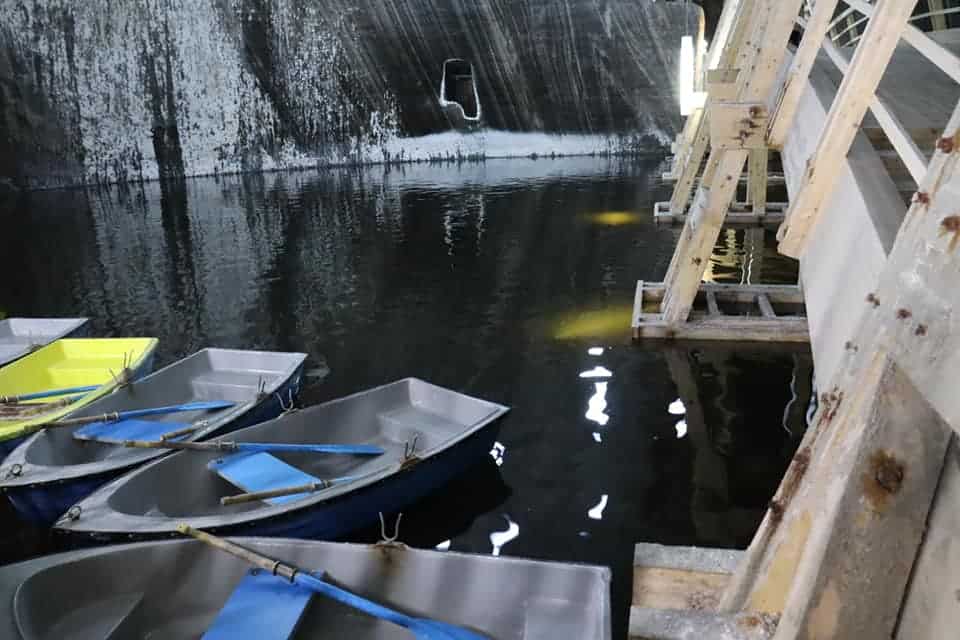
Most of the cities in Transylvania are very beautiful, though you can still see some (ugly) bloc apartments from the communist period.
Helpful Information
I’ve never been asked so often or by so many people how much money I make! While in the USA it’s considered taboo or in poor taste to ask about someone’s income, it’s pretty common in Transylvania and Romania in general.
People here are very open about their salaries! Don’t be shy, just make like a local and be prepared to discuss it.
This is mostly true of taxi and Bolt drivers I’ve encountered. They all seem interested in American politics. They’ve always got something to say about Donald Trump or Joe Biden! It’s a bit amusing, but can get old fast.
Ladies, I don’t know who needs to hear this, but if you use tampons, bring your own to Romania. While they do have tampons, they don’t have applicators, which can be uncomfortable to say the least.
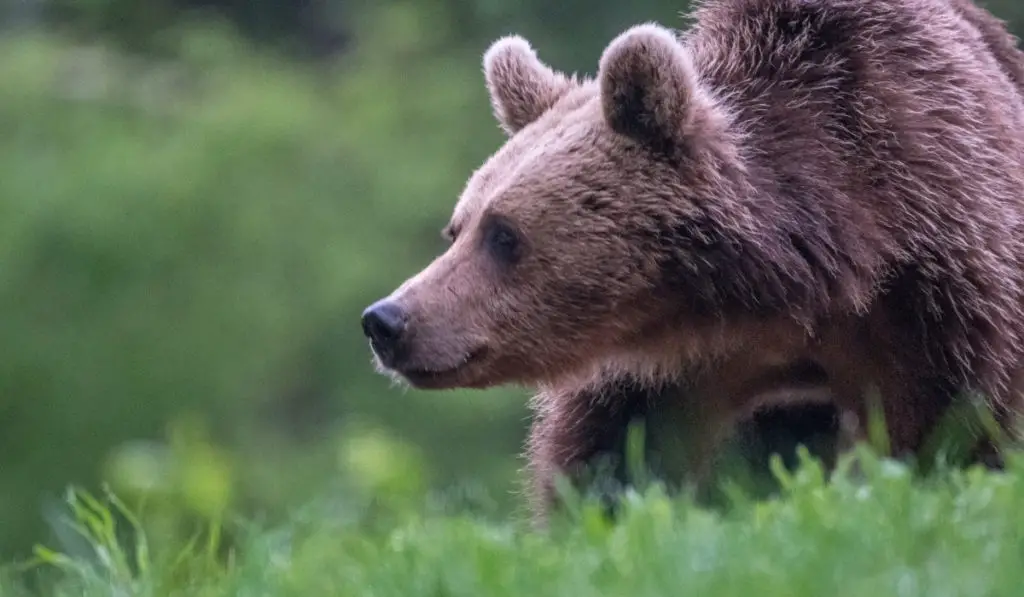
Before you travel to Transylvania, you may want to read up on ways to prevent an attack from the region’s many brown bears! Bears are very prevalent in the Carpathian Mountains, the Bucegi Mountains , the Apuseni Mountains, and all the other mountain ranges that Romania is known for.
Don’t feed the bears if you do encounter them, particularly the friendly cubs.
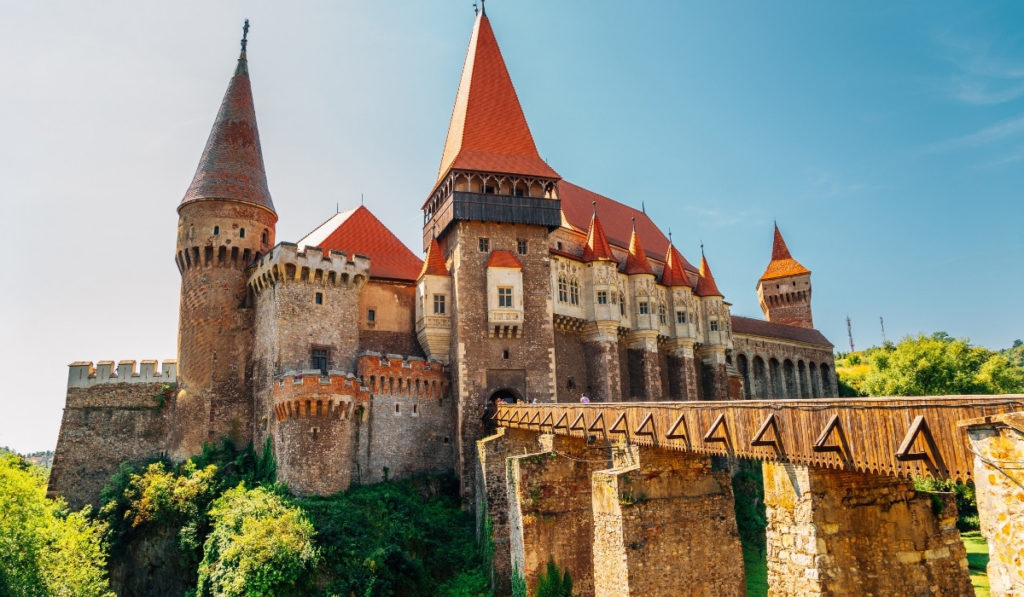
There are a ton of stunning castles throughout the historical region of Transylvania. Of course, you must visit Bran Castle (Dracula’s Castle). There is also Peles Castle , Corvin Castle (aka Hunyadi Castle), Rasnov Fortress, and more.
Peles Castle is technically between Wallachia and Transylvania, but it’s close enough that you can certainly stop there for a visit. Corvin Castle is a must in Hunedoara.
The castles in Transylvania are truly stunning, definitely worth visiting. Some are nestled in the mountains and forest, so be sure to take advantage of the surrounding natural beauty.
Things to Know Before Traveling to Transylvania: FAQs
Transylvania is located in central Romania, surrounded by the Carpathian Mountains. It’s a historical region that has been known for centuries, not just for its ties to the Dracula legend, but also for its scenic beauty and unique culture.
Yes, Transylvania is generally safe for tourists. Like any other destination, it’s essential to be aware of your surroundings and exercise common sense. Crime rates are relatively low, but always take standard travel precautions.
No, Transylvania is not a separate country. It’s a historical region within the country of Romania. Many people associate it with its distinct culture and folklore, but politically and administratively, it’s part of Romania.
Yes, Transylvania is a region located in the central part of the country, in one of the most beautiful parts of Romania. While it has its own unique cultural and historical identity, it remains an integral part of Romania. However, this hasn’t always been the case – in fact, there is a lot of controversy to this day over whether Transylvania should belong to Romania or Hungary.
Absolutely! While it’s often associated with mythical creatures like vampires, thanks to tales like Dracula, Transylvania is a genuine and historically rich region in Romania. It boasts stunning landscapes, medieval castles, and vibrant cities.
Definitely! Transylvania offers a mix of history, architecture, natural beauty, and unique cultural experiences. From the captivating Bran Castle, often associated with the Dracula legend, to the charming streets of Sibiu and Cluj-Napoca, there’s something for every traveler. Its blend of Gothic tales and authentic Romanian culture makes it a must-visit destination.
Sharing is caring!
Privacy Overview

Getty Images/Dorling Kindersley
Nestled in a slender fir-clad valley, Sinaia teems with hikers in summer and skiers in winter. Backed by the imposing crags of the Bucegi Mountains, it's a dramatic place for a to hike for the day, or, using the network of cabanas open to walkers, several days.
Your next trip starts here
Go from dreaming to planning with trip planning options made to help you craft your ideal itinerary.
Attractions
Must-see attractions.
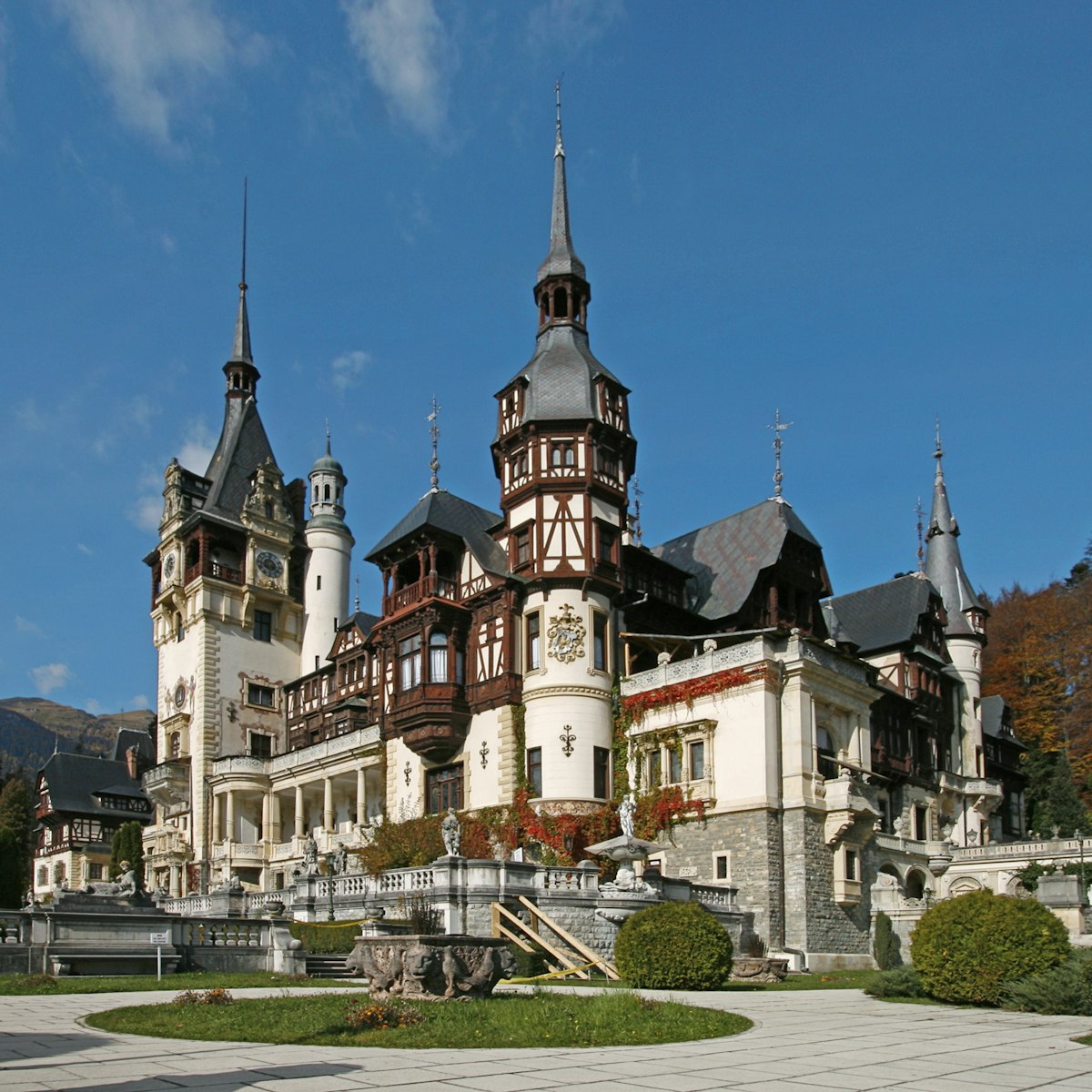
Peleş Castle
Over 40 years, dozens of builders, artists and wood-carvers brought Peleş Castle into existence. The neo-Renaissance masterpiece was commissioned by…

Pelişor Palace
It’s hard to believe that Carol I’s nephew Ferdinand (1865–1927) could have been unsatisfied with lavish Peleş Castle; nonetheless, Pelişor Palace was…

Sinaia Monastery
The church and monks’ cells on this site during the 17th century weren’t ample enough to accommodate Sinaia’s growing religious community, so in 1846 this…

Foişorul Hunting Lodge
At the western end of the Peleş estate is the Swiss-châlet-style Foişorul Hunting Lodge, built as a temporary residence by King Carol I before Peleş…
Latest stories from Sinaia
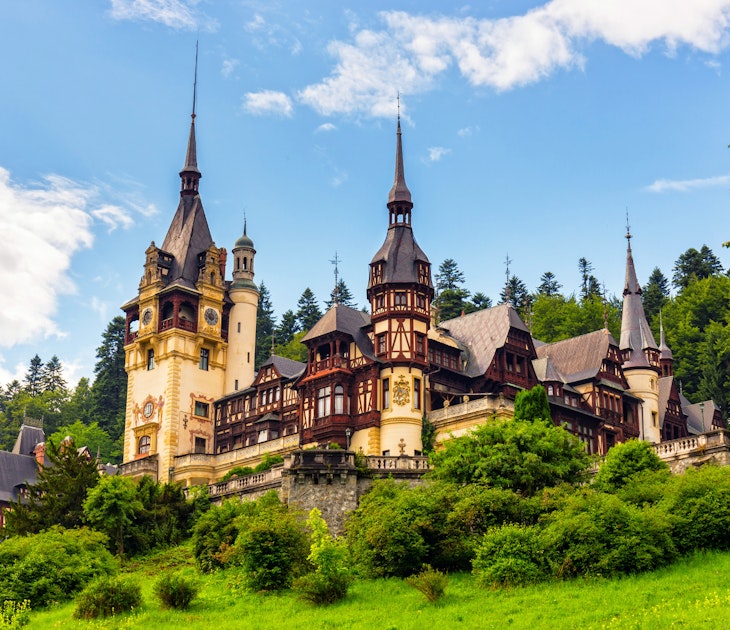
Apr 15, 2019 • 5 min read
There’s no shortage of things to do in Bucharest, home to Romania’s top museums, a thriving dining and nightlife scene, and pleasant parks and gardens…
in partnership with getyourguide
Book popular activities in Sinaia
Purchase our award-winning guidebooks.
Get to the heart of Sinaia with one of our in-depth, award-winning guidebooks, covering maps, itineraries, and expert guidance.

Your portal into magic Transylvania !
… nature and traditions
Discover Transylvania !
… history and culture
Charming Transylvania !
… legends and stories
- Transfer Tours
- OR Get a quote
Why visit Transylvania ?
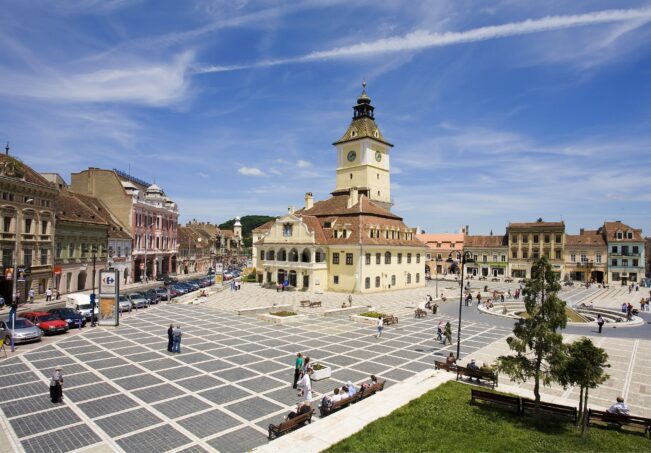
Transylvanian Cities
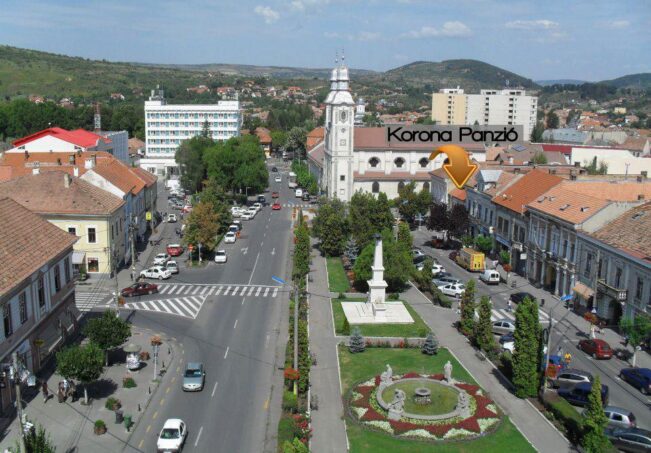
Festivals and events
This is a short description about festivals and events
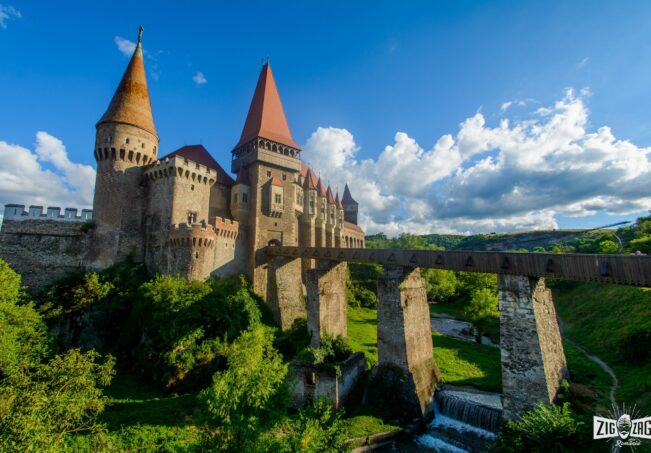
Mansions and castles
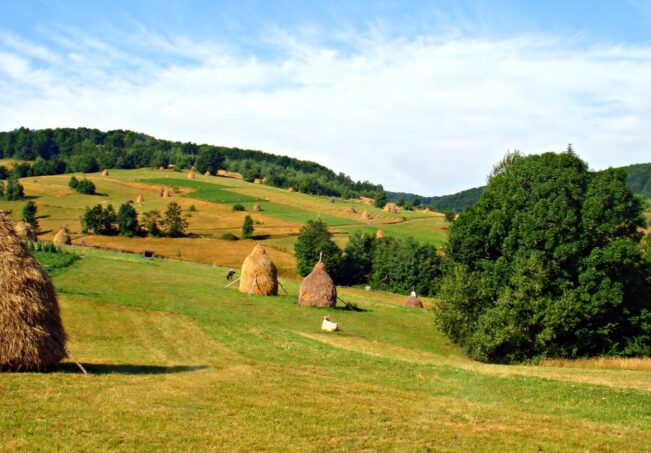
Off the beaten track
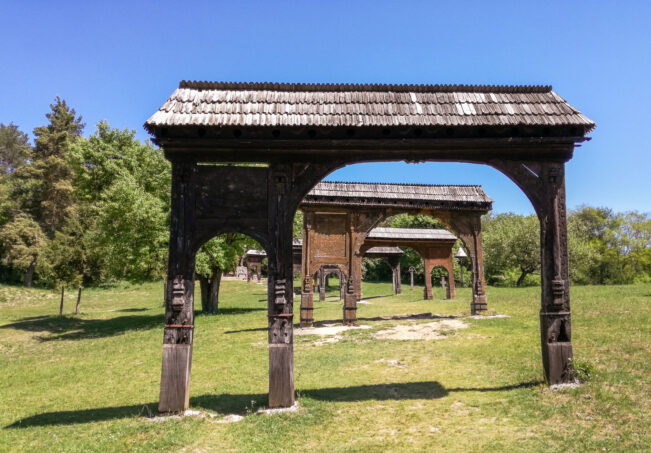
Transylvania attractions
Airports in and around transylvania.
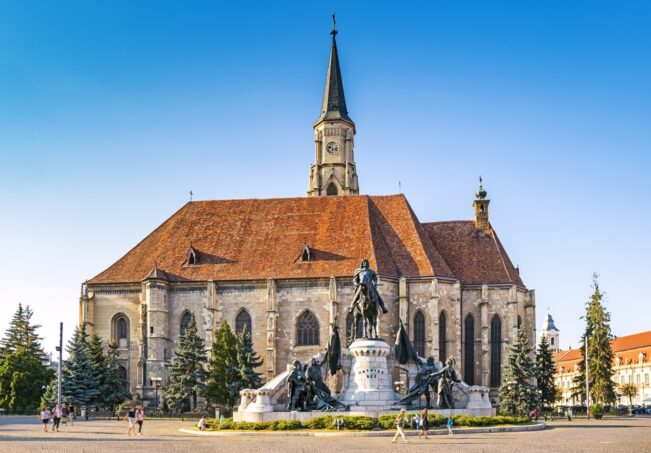
Avram Iancu airport- Cluj
The aerial gateway to Transylvania, Cluj-Napoca Airport is the busiest airport in our area and it offers dozens of daily flights to Europe and onward to the rest of the world.
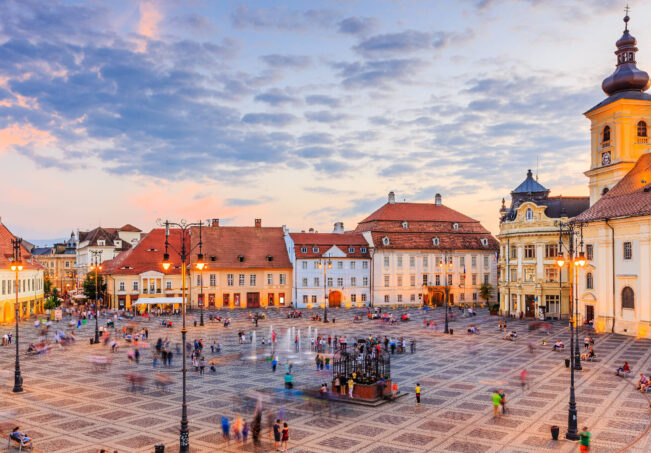
Sibiu International
Our important airport in southern Transilvania. Nestled at the foot of the mountains, it offers seven destinations in Germany, plus London, Vienna, Tel Aviv and Madrid.
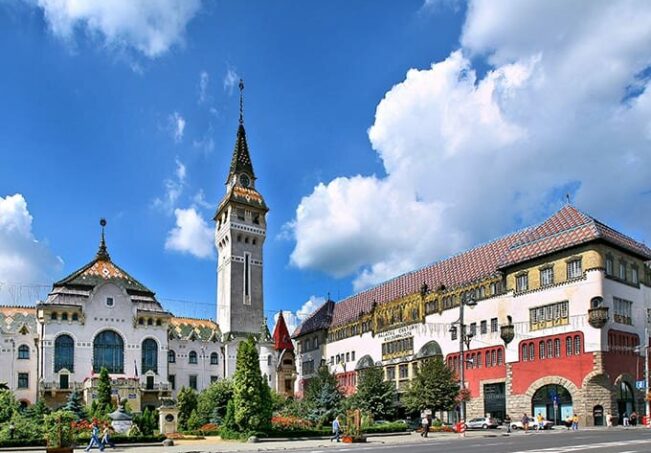
Transilvania airport - Targu Mures
It is a small, local airport with good links to Hungary, Germany and UK.
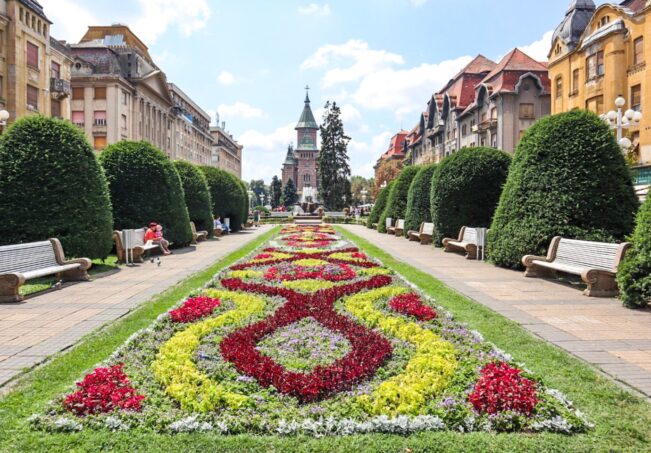
Traian Vuia - Timisoara
Technically outside of Transylvania, in the capital of Banat region, it offers good links to Germany, Italy, Spain, France and United Kingdom
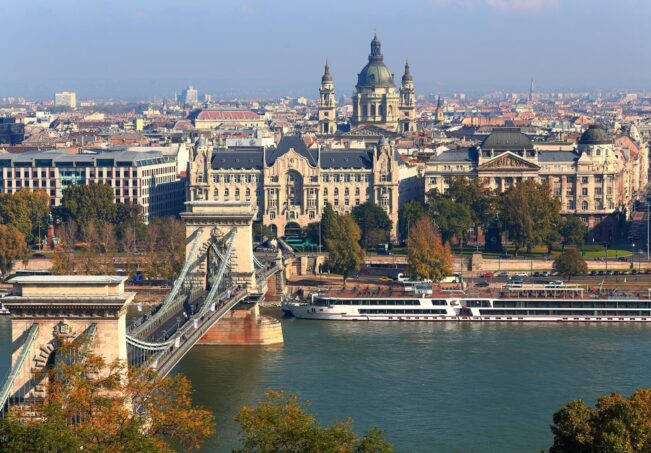
Ferenc Liszt - Budapest
Hungary's biggest and most beautiful airport is situated in close proximity to the border and serves western Transylvania as well.
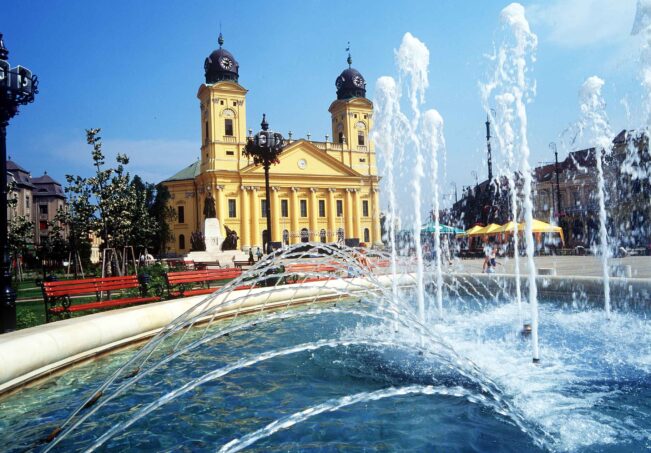
Debrecen International
Debrecen International Airport is the international airport of Debrecen in the Hajdú-Bihar County of Hungary.
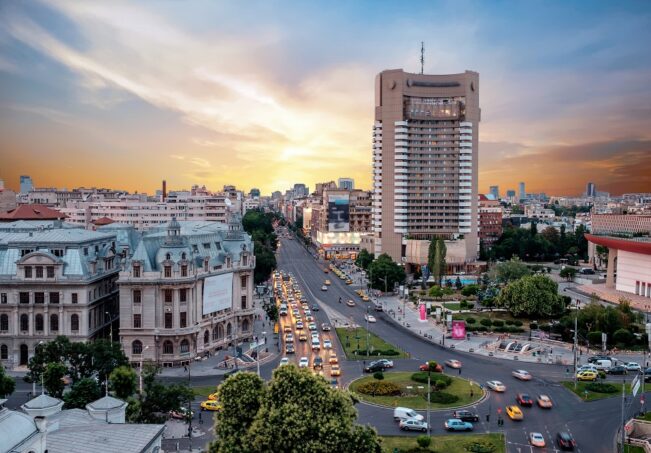
Otopeni - Bucharest
The main Romanian airport is situated 180 km south from Transylvania and mainly serves the south of the country..
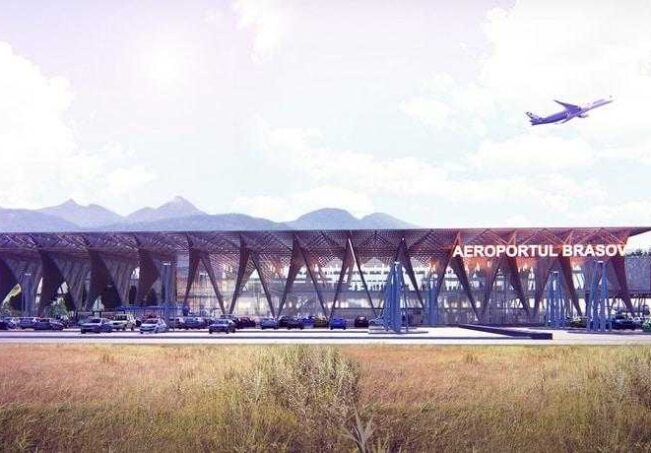
Brasov International
Brasov International is under construction and everybody hopes it will become a reality in 2021
You’ll travel with locals
flexible & friendly.
We enjoy traveling in Transilvania
They were here!
See what our clients are saying about us, the only way to do transilvania.
Graham M. Central Transylvania
day visit of Sighisoara, Targu mures ,Turda and the Gorge . Cristian listens to what you broadly would like to do and see and then moulds your trip accordingly.outside of the days plan you will find impromptu stops along the way when he feels something will be of interest . Company was very enjoyable and each day he would drop us at our destination to allow us to do some exploring on our own…. read more on TripAdvisor
Nari Ranju Southern Transilvania
I can see why Sebastian has only had 5 star reviews. He was an amazing guy. Lived in the area most of his life and had a lot of local knowledge, which he gladly shared with us. Spoke perfect English, was very punctual ( came about 7/8 minutes early) which I love. I thought … read more on TripAdvisor
Great experience. 5 stars!
Matt Kiwi Sibiu - Sighisoara
We used this service while visiting Romania and our driver Sebi was great; we had a toddler so were worried by the dangerous roads. Sebi was nice and safe which made the whole process much more relaxing. On top of that he doesn’t smoke (not always a given based off previous trips) and has excellent English… read more on TripAdvisor
Easter in Szekelyland
jørgen winther Cluj-Szekelyland
We have been using this company several times during the last couple of years and we are VERY satisfied with this high service level 🙂 No delays – good fixed price per trip – and interesting entertainment during the trip with stories/history of the local areas in Transilvania. Keep on the good work, we look forward to …read more on Google
“Four Unforgettable Days with Cristian as our Driver/Guide"
Craig&Neville all Transilvania
Travelling as a couple over summer, we opted to engage Cristian as our driver come guide for our four days in Transylvania, as opposed to hiring a car and driving ourselves. Choosing Christian was easily the best decision as Cristian is genuine in sharing his deep love and knowledge of Transylvania. In person, his command of English is comprehensive and easy to understand. In our early emails he was responsive and helpful in offering … rea more on Reviewcentre
Experiences
feel the local atmosphere

Customer Support
- Days: Monday to Sunday
- Hours: 08-18:00 EEST
- Tel:+40 784 234 546
- Mail: [email protected]
- Adresa: Targu-Mures, str Argesului nr 2. ap 17
Information
- Terms&Conditions

Project co – financed by the European Union from the European Structural Funds and Investments through the Human Capital Operational Program 2014 – 2020.
All rights reserved SC Transilvania Insider SRL, CUI: 41120292, NR Reg Com: J26/1103/2019, Adress: – Strada Argesului nr. 2/17 Targu-Mures, judetul Mures, Romania
We create bold brands that people love. We design your story. We shape your goals. We innovate your perspective. We help you profit from the limitless possibilities of digital.
Privacy Overview

IMAGES
COMMENTS
Dracula is real (sort of) Bram Stoker's 1897 vampire novel was inspired by centuries-old superstition and the real-life exploits of Vlad Dracula. Known by his murderous moniker, Vlad Ţepeş (the Impaler), the 15th-century Wallachian nobleman was said to have skewered up to 80,000 enemies on long spikes.
Here are nine of my top reasons to recommend travel to Transylvania. 1. Romanian food. Transylvanian food is amazing. Like many nations that have known long periods of poverty, Romanian chefs know how to work with basic ingredients to create amazing flavors. The rich, savory dishes of Romania almost singularly would make this region worth visiting.
Thanks for reading. To learn more about Transylvania, where to eat, stay, and see, hit the button below. CHECK OUT TRANSYLVANIA. Transylvania is known as the mysterious land of bloodthirsty vampires and howling wolves. Some may think it's fictional, but this central Romanian region is a real place. And it's pretty special.
Visit Transylvania - Travel guide for first time visitors. When you visit Transylvania, a travel guide can help you solve the details you need for a perfect trip. Every time the moment to plan a new trip comes, things can get both exciting and annoying at the same time. Of course, getting to explore a new place out there is perhaps one of the ...
Why travel to Transylvania? This central-western region of Romania has numerous mementos of medieval times. It might be world-known for its bloodthirsty vampires and savage werewolves, but you will not need to pack any garlic or silver to visit it. The famous Dracula is a big part of Transylvania's popularity.
Transylvania Is Known for Its Mythic Tales — Now 2 Chic New Hotels are Offering Another Reason to Visit. This storied region in Romania is a land of vast wilderness, regal countesses, and plenty ...
Why do people visit Transylvania? Transylvania, a region in central Romania, beckons travelers for a myriad of reasons. Here's why people are drawn to this enchanting destination: Dracula Legend: Bran Castle, often referred to as "Dracula's Castle," is a major attraction. While the historical Dracula (Vlad the Impaler) had little to do ...
1. You Need A Passport To Get To Transylvania, But You Don't Need A Visa. Transylvania is a part of Romania, and you need a passport to enter the country. Check your dates to make sure your passport doesn't expire for at least three months after your departure date for Romania.
Transylvania may be Romania's best-known region—and perhaps for the wrong reasons, thanks to some dubious vampire-related lore.But Transylvania—Romania's largest region—is rich with mountains and undisturbed forests, medieval villages, hearty food, and a welcoming, generous social life, all with only a handful of larger cities, such as the cosmopolitan university town, Cluj-Napoca ...
Transylvania (Latin for 'land beyond the forest') is a historic region part of Romania with an intriguing reputation for its natural beauty and well-preserved cultural heritage. With vast woodlands, rolling hills and quaint villages, the slow and peaceful way of life found here is becoming a rarity in this always-connected, fast paced world.
Visit Bran Castle. Bran Castle is at the very top of everyone's list of must-see places to visit in Transylvania, and for good reason! This historic castle has stood since the 13th Century, was occupied by Romania's most beloved queen, Queen Marie, and is tightly woven into the mythology of Count Dracula. It's a stunning castle that sits ...
Transylvania is located in Eastern Europe, south of Ukraine, and north of Bulgaria. No longer defined by concrete legal borders, Transylvania is a region in Romania with semi-defined borders, according to Wikipedia. Like "the Ozarks" or "the south" in the USA, this region has a history, culture, and identity that is linked with but not ...
Practical Information for Visiting Transylvania. What to Do in Transylvania: The Ultimate List. 1. Explore Major Cities. Best of Transylvania: City by City. 2. Discover the Charming Towns & Villages. 3. Visit the Most Spectacular Transylvanian Castles.
Transylvania is easily accessed by car or by train. From Bucharest, direct and local trains run to all of the towns listed above. When possible, book tickets for direct trains. Not only will you arrive quicker, the trains are a bit newer and are likely to be more comfortable with better seating and air conditioning.
The most obvious place to start is Cluj-Napoca, the region's largest city and unofficial capital. While it has historic sites, such as St. Michael's Church and sections of medieval wall, Cluj is a fun and modern city. Then there's Brașov, one of the best places to visit in Europe.
4. See a Gothic castle full of legends: Corvin Castle. In our opinion, this is the best castle in Transylvania even though it can't compete with Bran Castle's popularity! Corvin Castle, also known as Hunyadi Castle is a splendid gothic-meets-renaissance historic tourist attraction with an authentic medieval feeling.
Visit Transylvania with one of our private tours 'The land beyond the forests' is the best-known vacation destination in Romania, and you will probably find it difficult to choose only a few places to visit in Transylvania. The magic of its traditional villages enchanted Prince Charles and many travelers who became travel ambassadors of authentic Transylvania, while its labyrinth of ...
To truly experience Transylvania, 10 days would be perfect to visit multiple cities and explore their surroundings. However, if you're short on time, 3-4 days would give you a quick glimpse of the best places to visit in Transylvania. If you're still considering where to visit in Europe, find out here why you should visit Romania.
5. Survival kit. Before you travel to Transylvania, you should know that Romania uses 230 V, so, depending on your country of origin, you may need a converter for your electronic devices. Bring a converter to plug in and charge your devices, but there's no problem if you forget. You can buy one in any electronic store.
Transylvania is the largest region in Romania. Transylvania literally means 'the land beyond the forest'. In addition to its colorful and charming cities, you can expect a great deal of quality time spent in the great outdoors. When planning your visit to Transylvania, be sure to allocate some time to get out in nature.
Sinaia. Romania, Europe. Nestled in a slender fir-clad valley, Sinaia teems with hikers in summer and skiers in winter. Backed by the imposing crags of the Bucegi Mountains, it's a dramatic place for a to hike for the day, or, using the network of cabanas open to walkers, several days. 01 / Attractions.
Average temperatures in September: 70°F. Average temperatures in October: 59°F. Average temperatures in November: 45°F. Although the sun gets shyer by mid-September, nature bestows Transylvania with an incredible palette of autumn colors that persist until late October, sometimes until November.
the only way to do Transilvania. Graham M. Central Transylvania day visit of Sighisoara, Targu mures ,Turda and the Gorge . Cristian listens to what you broadly would like to do and see and then moulds your trip accordingly.outside of the days plan you will find impromptu stops along the way when he feels something will be of interest .